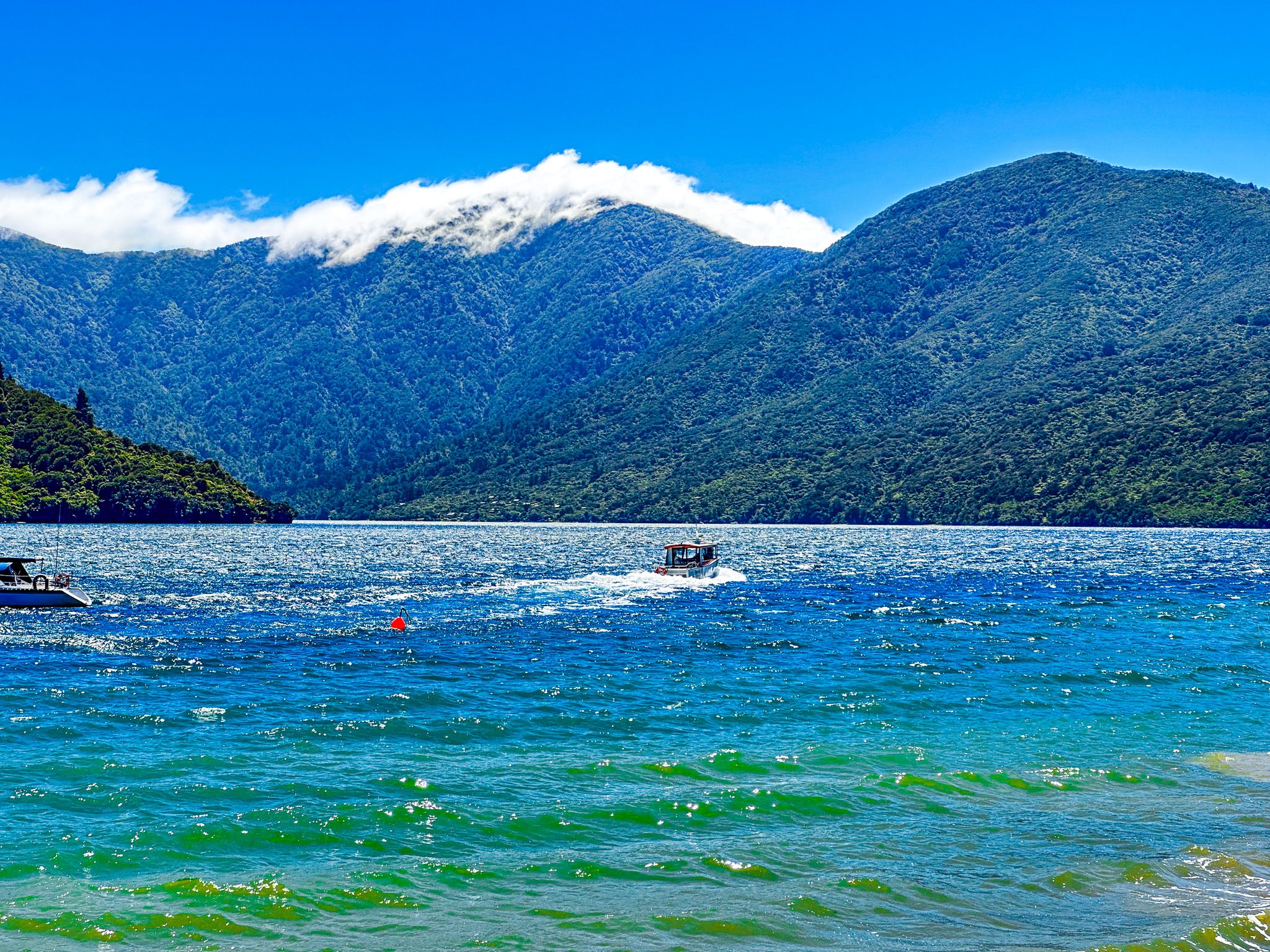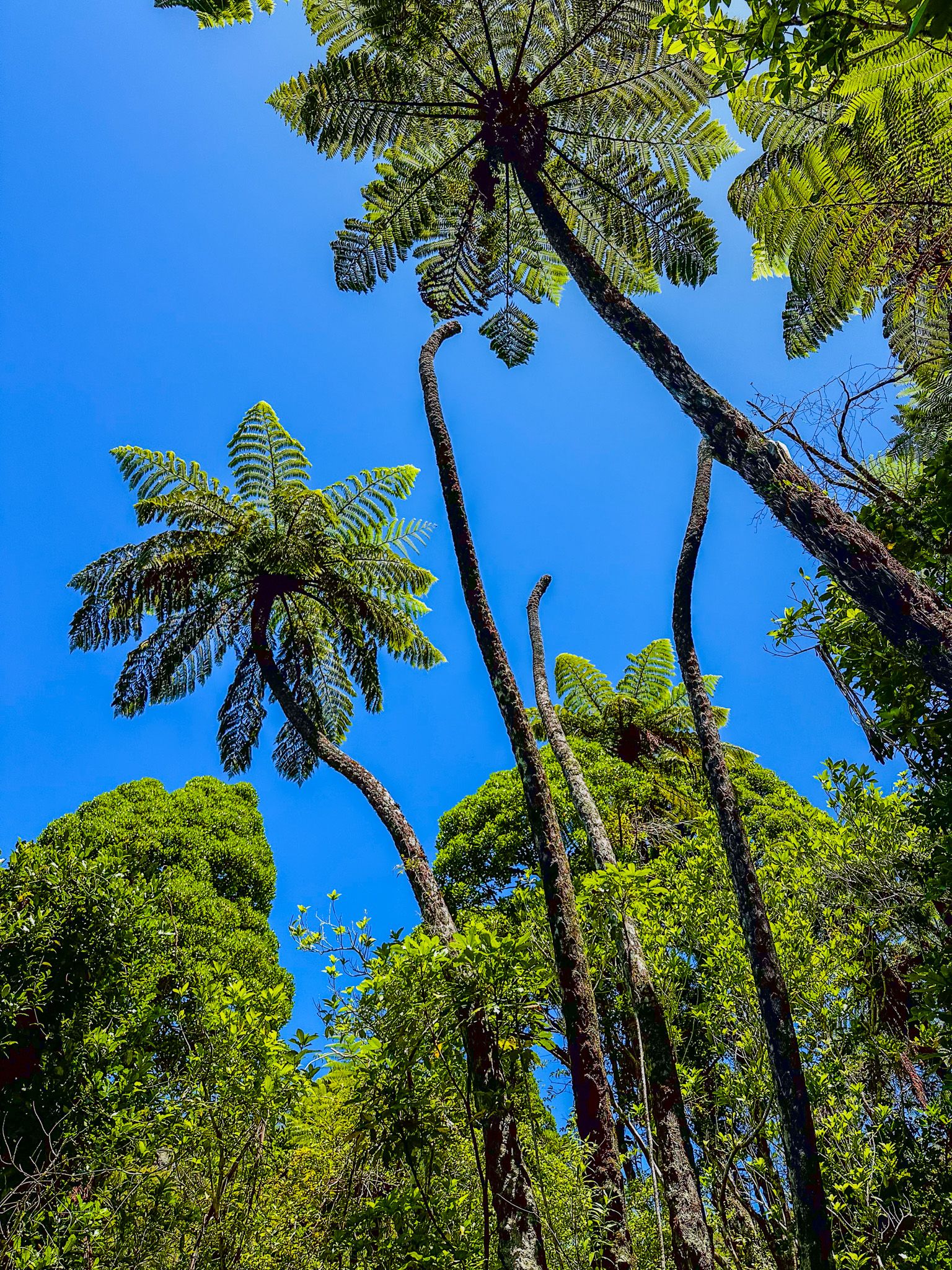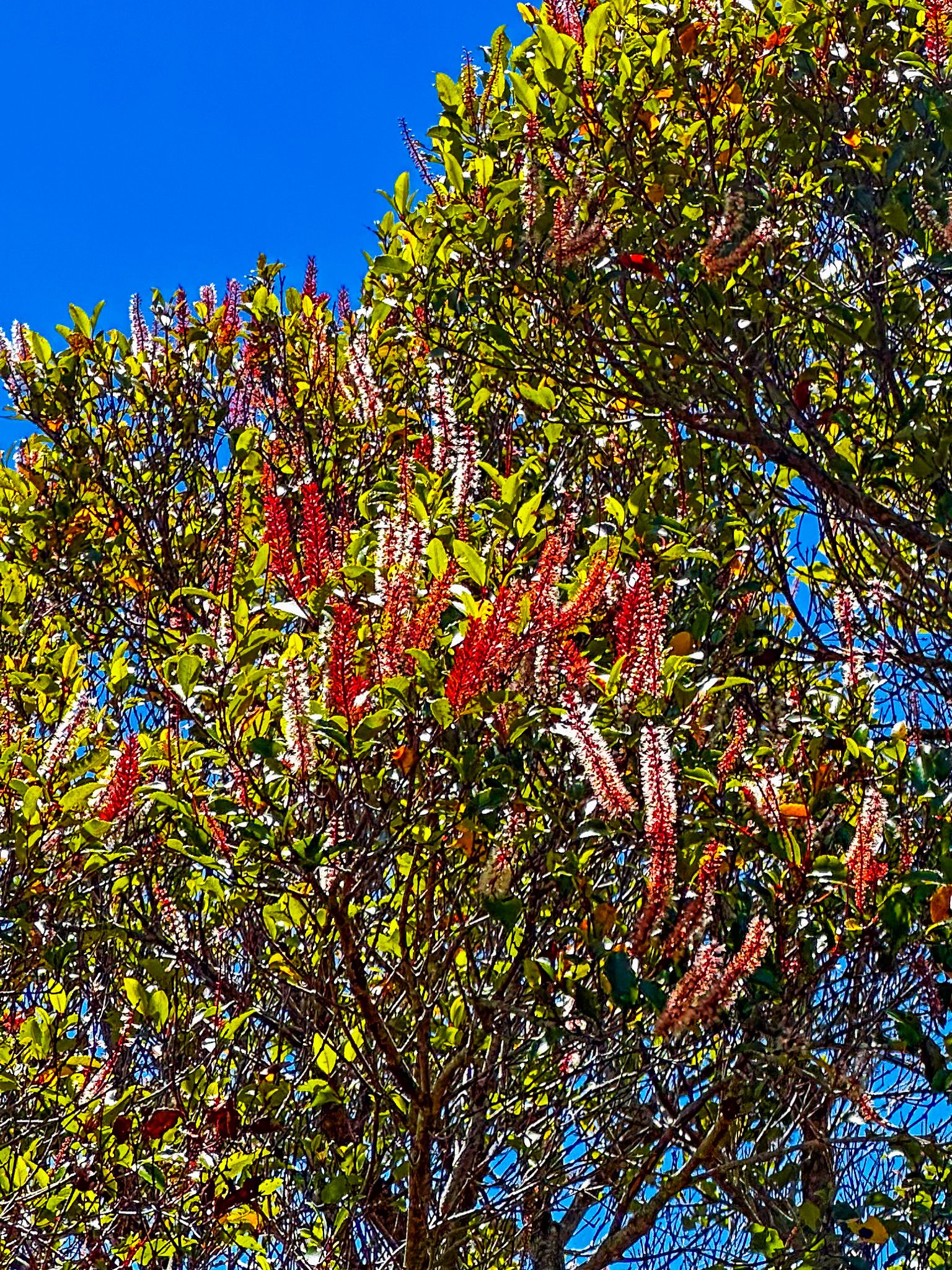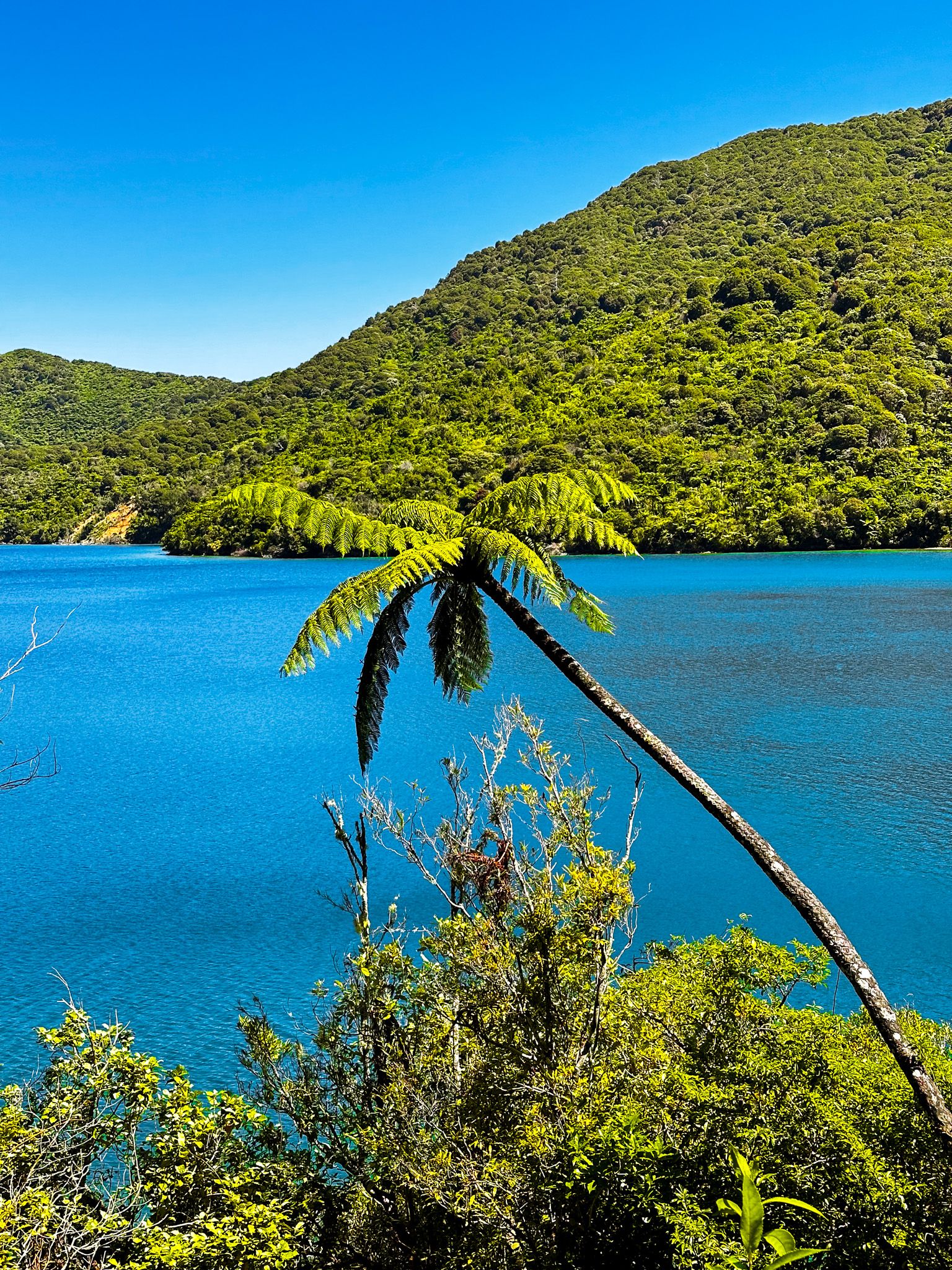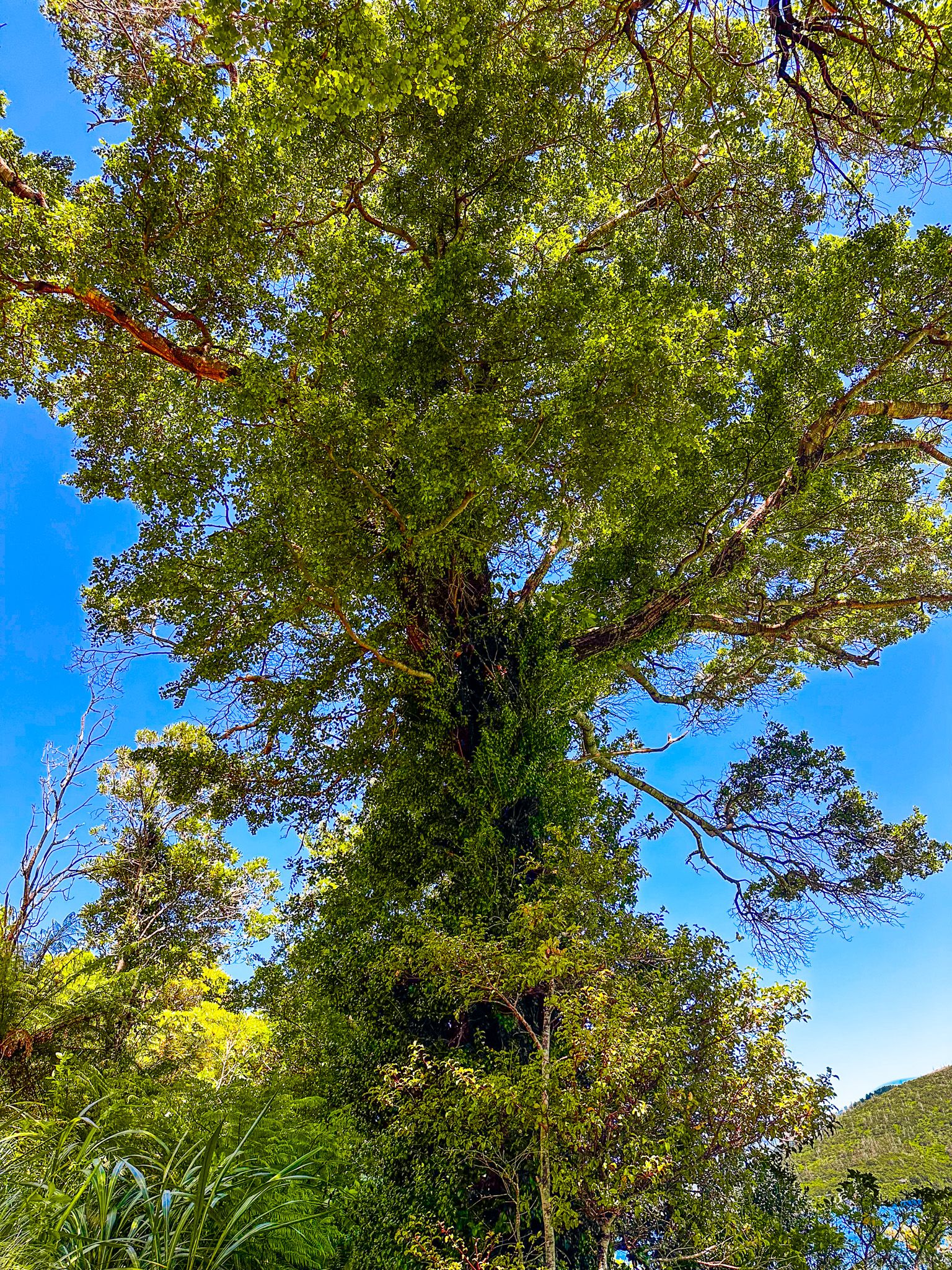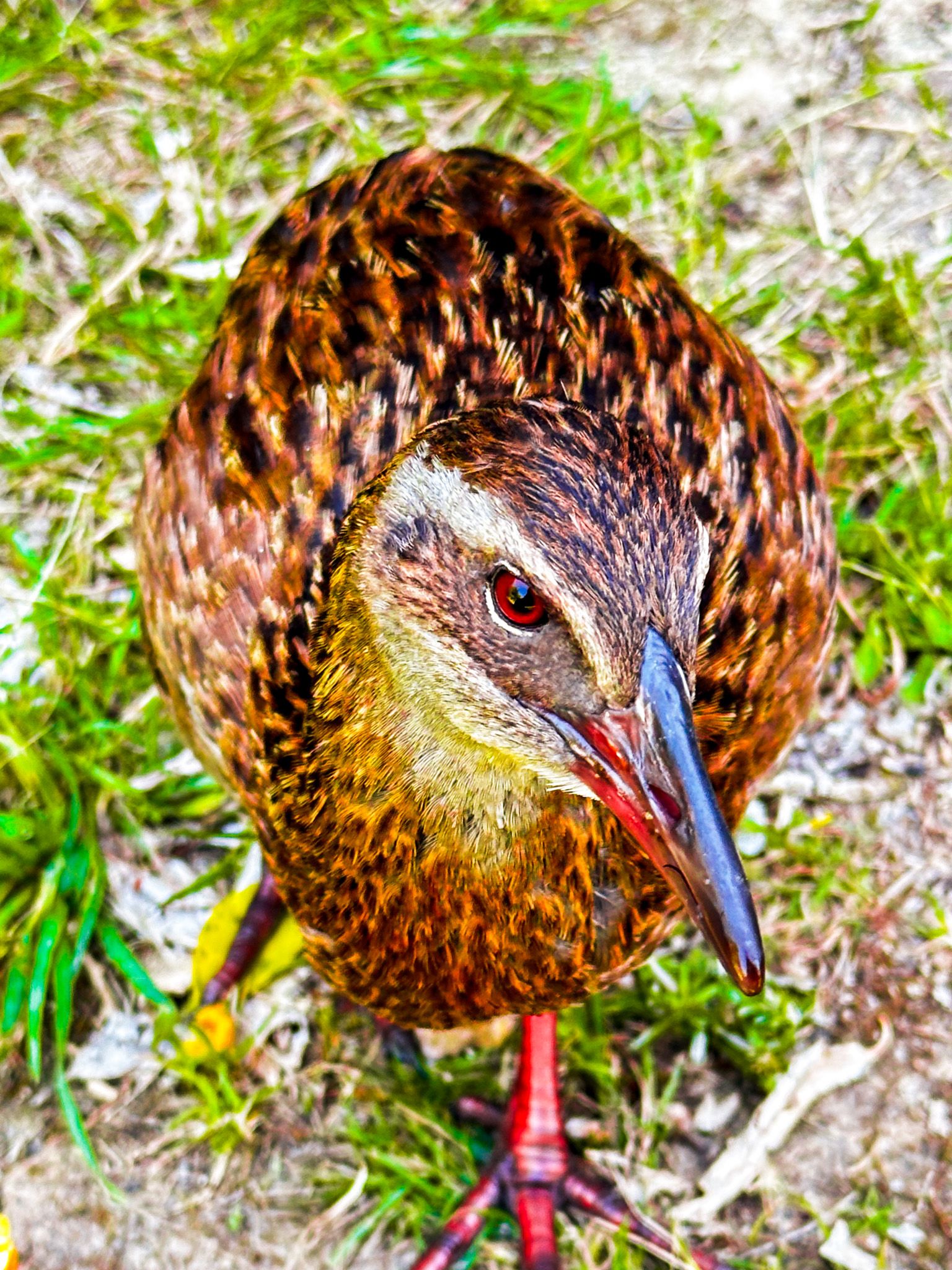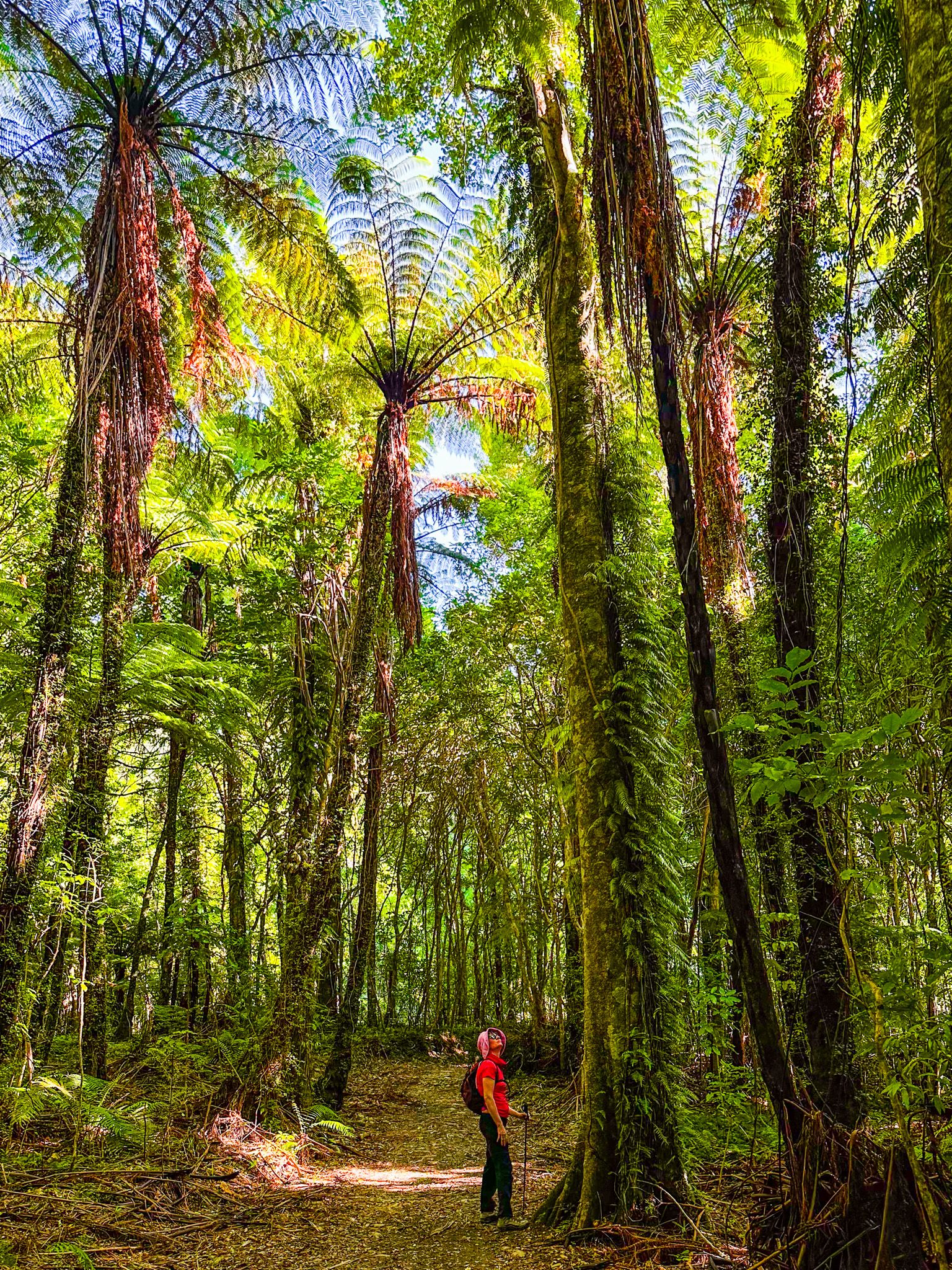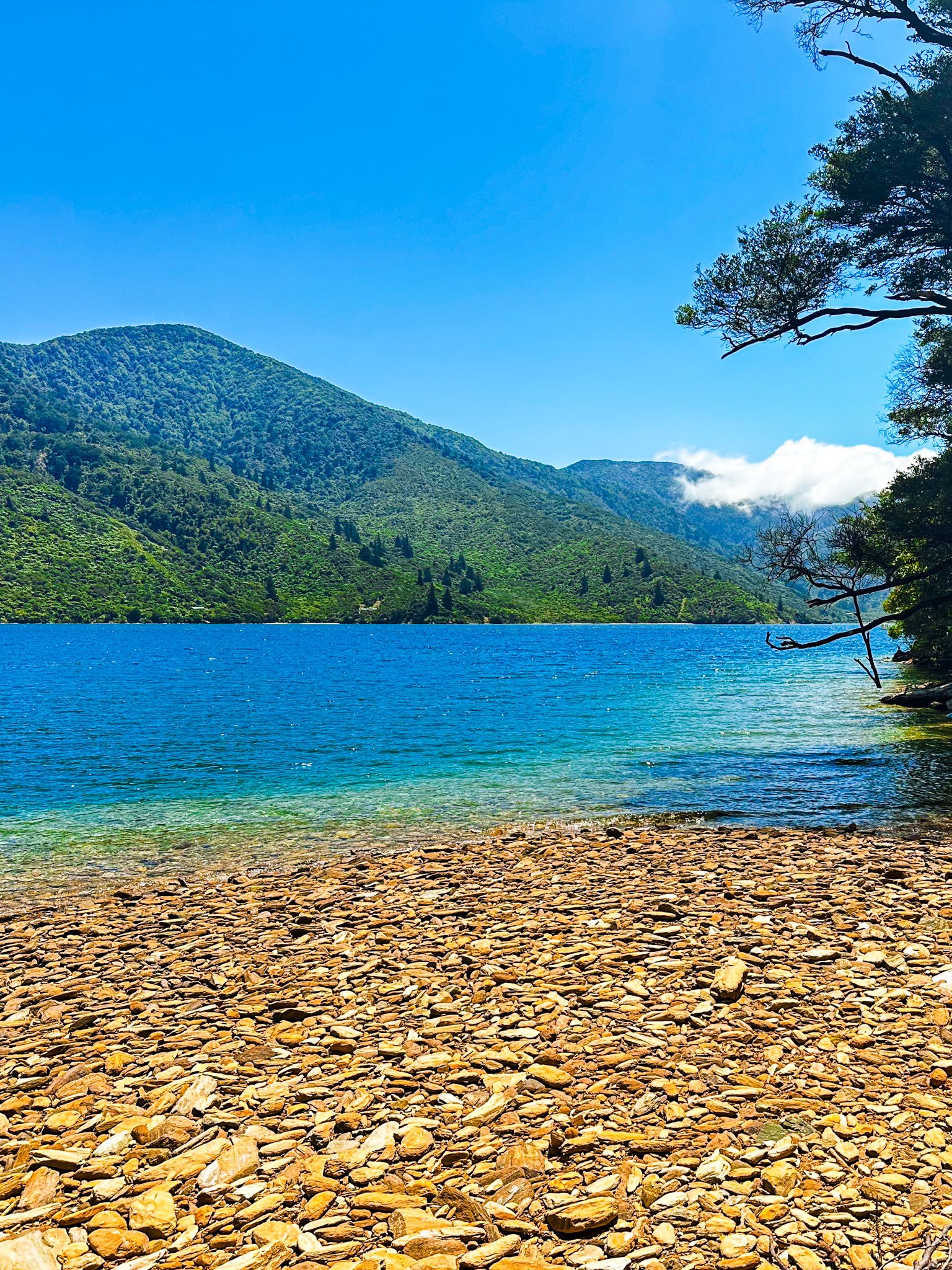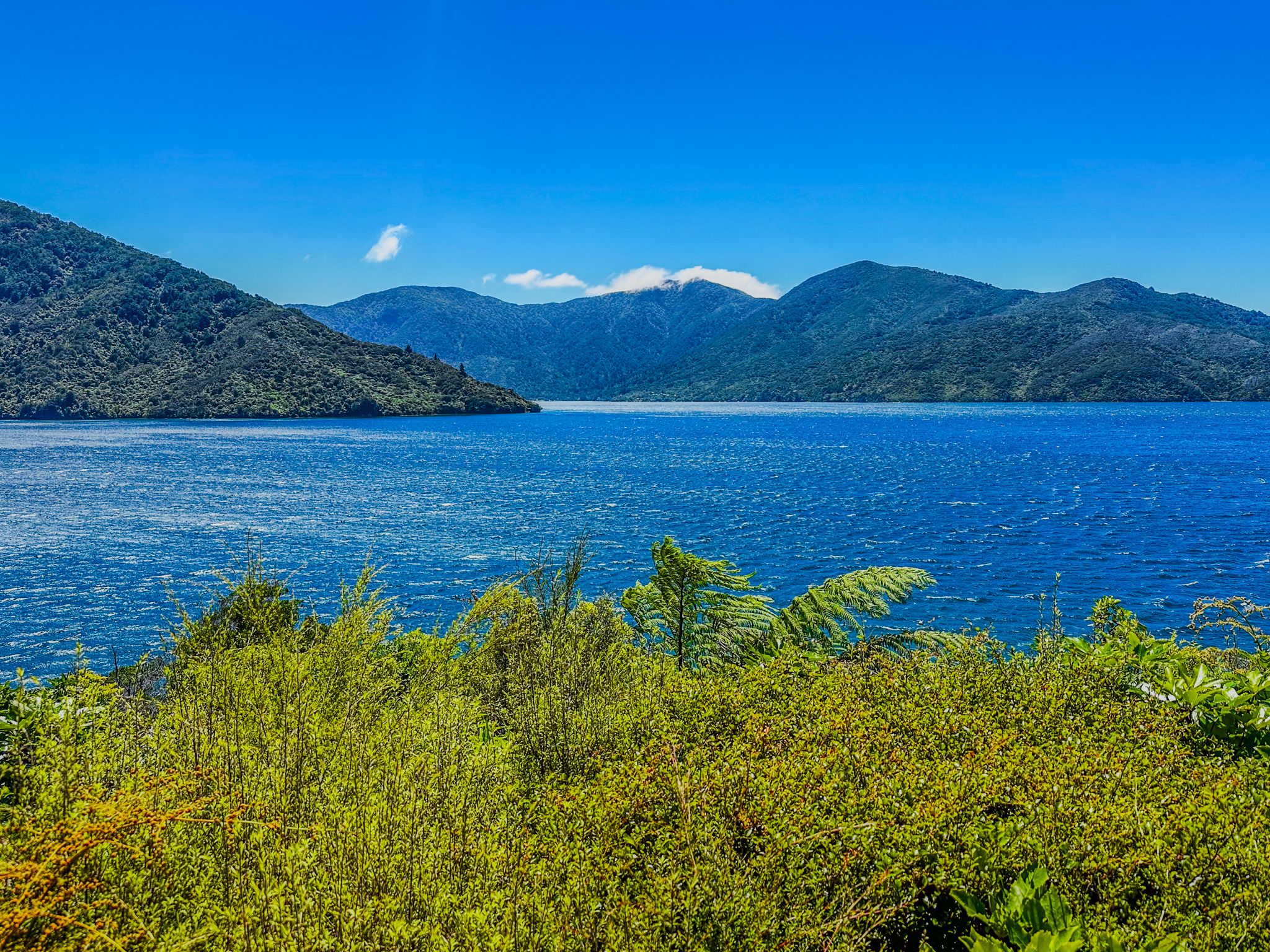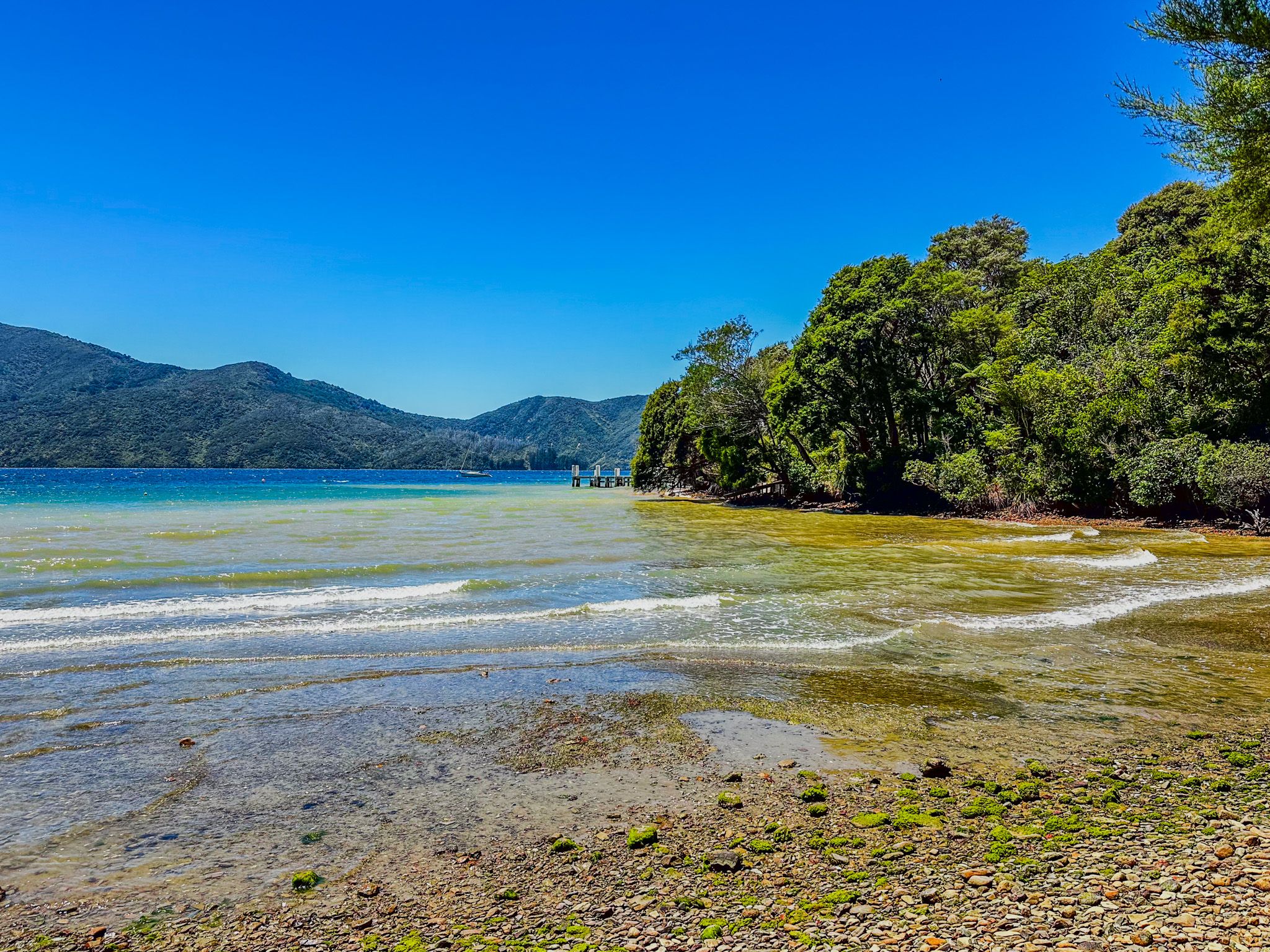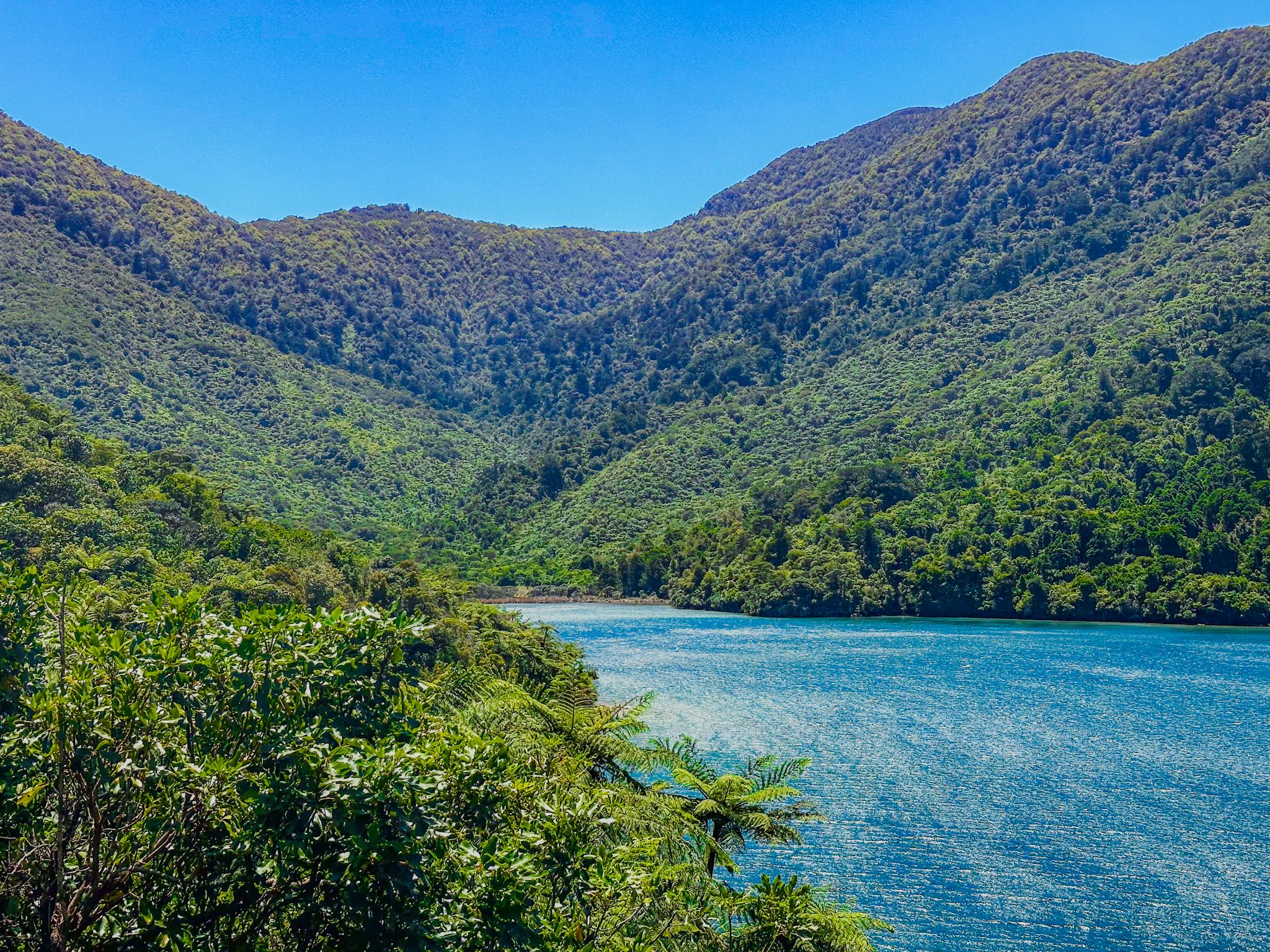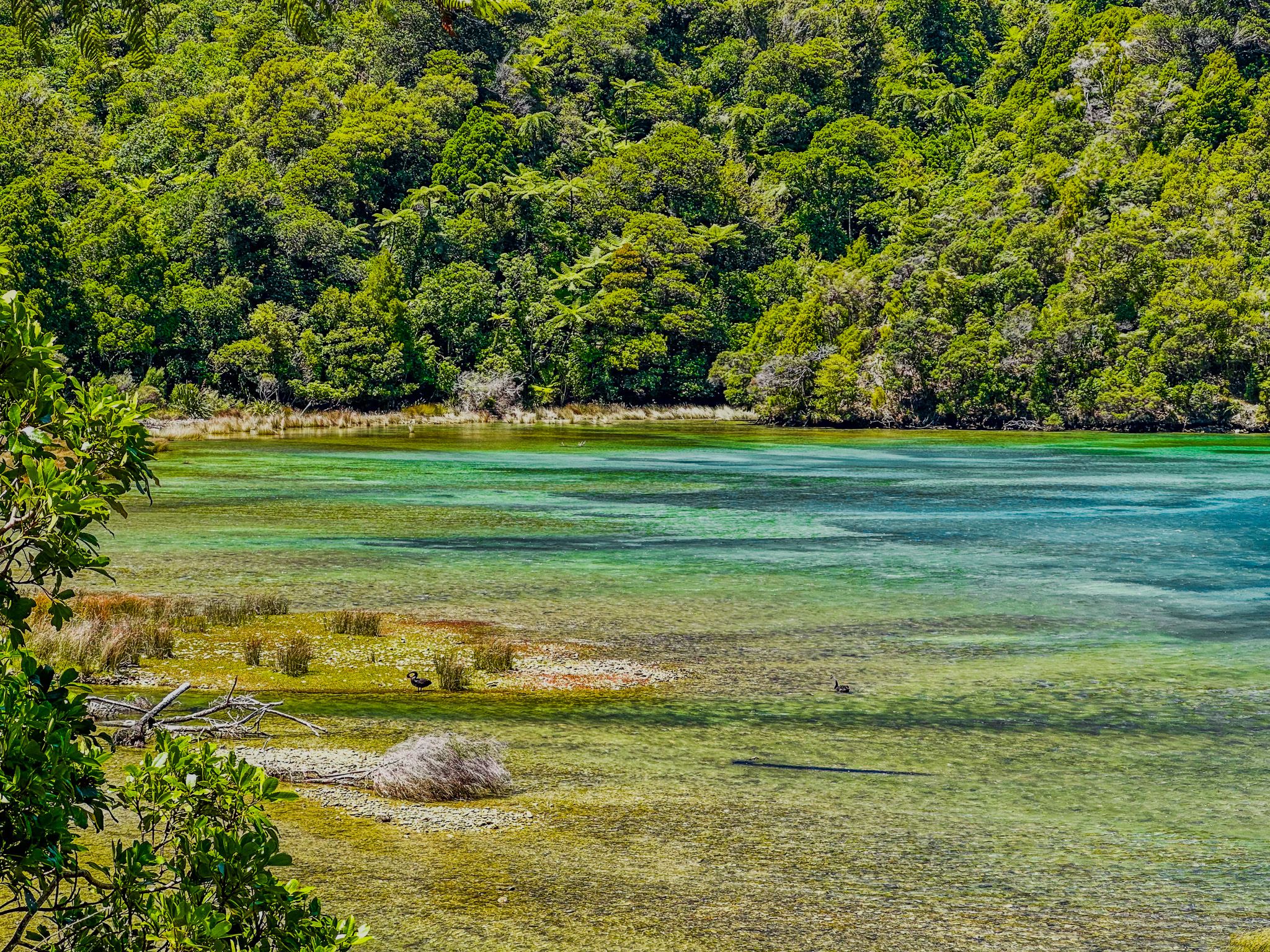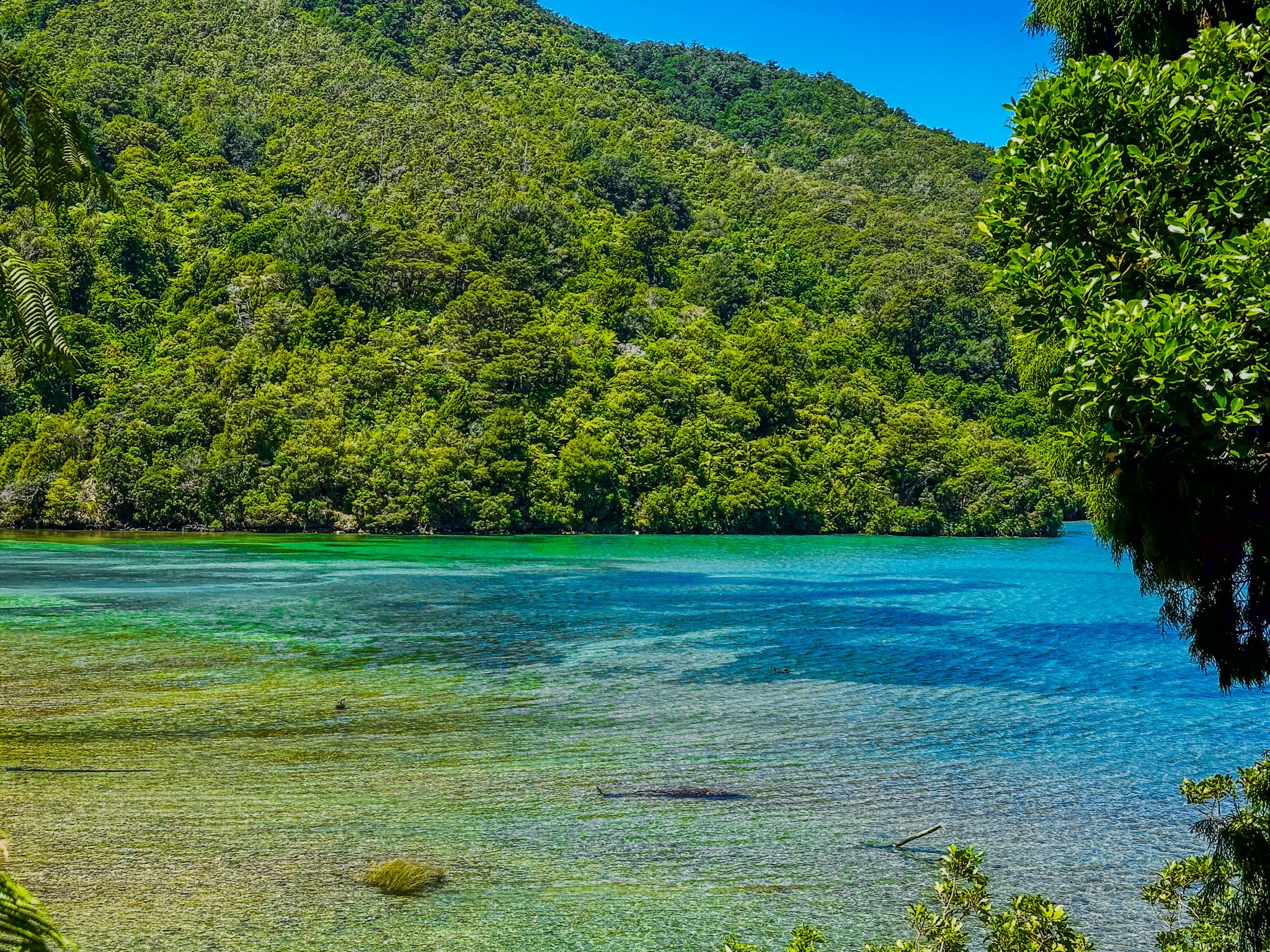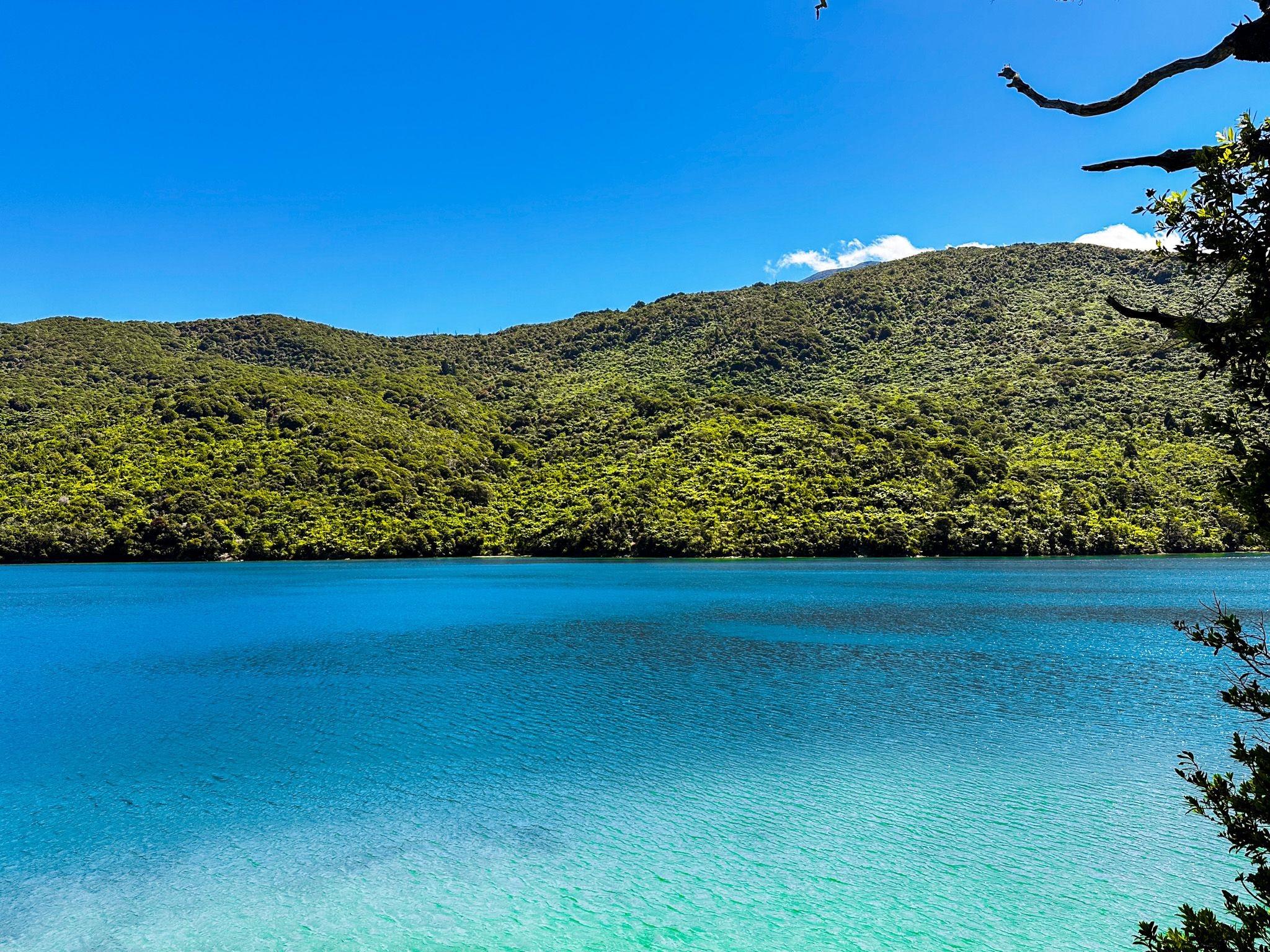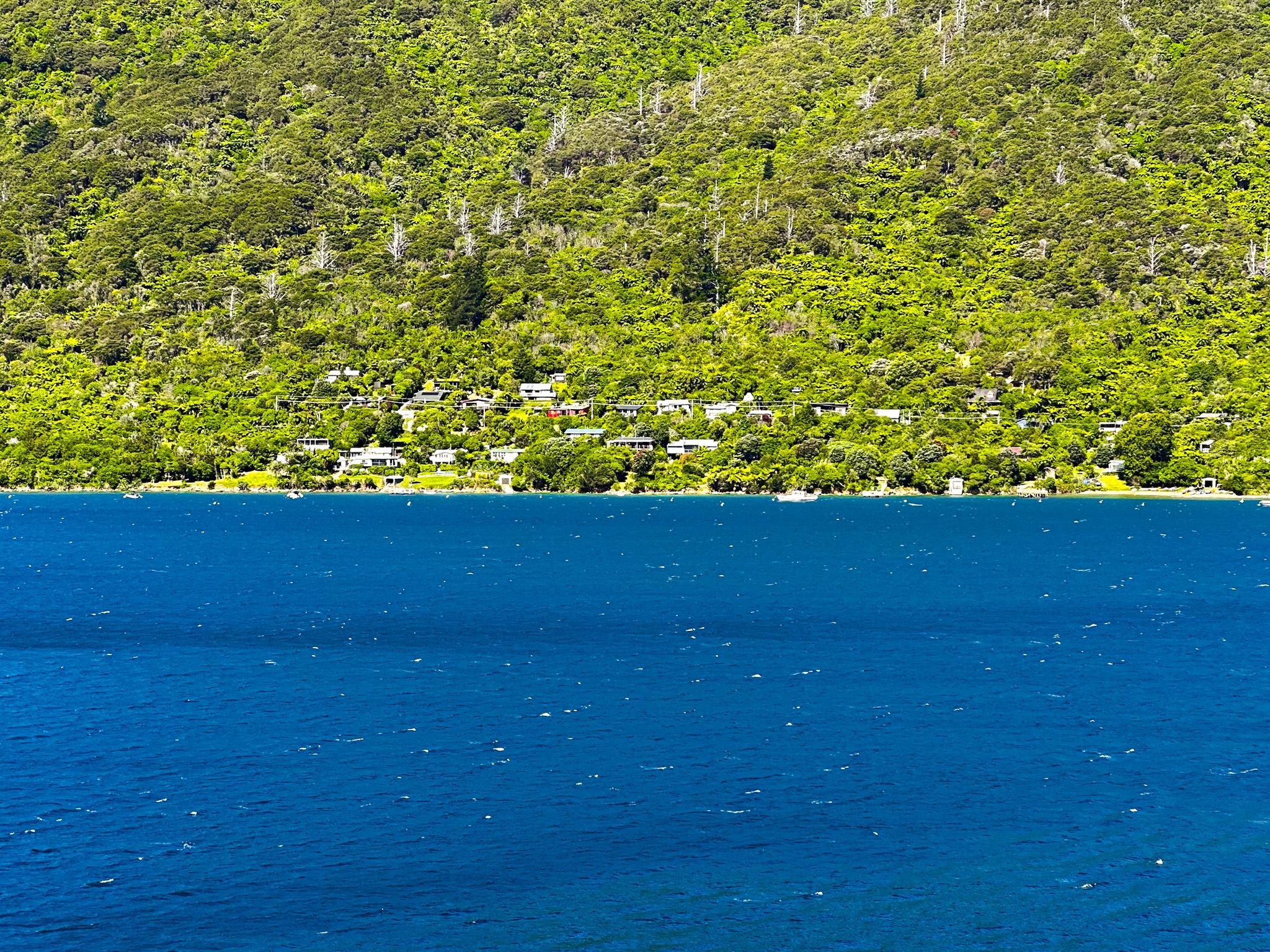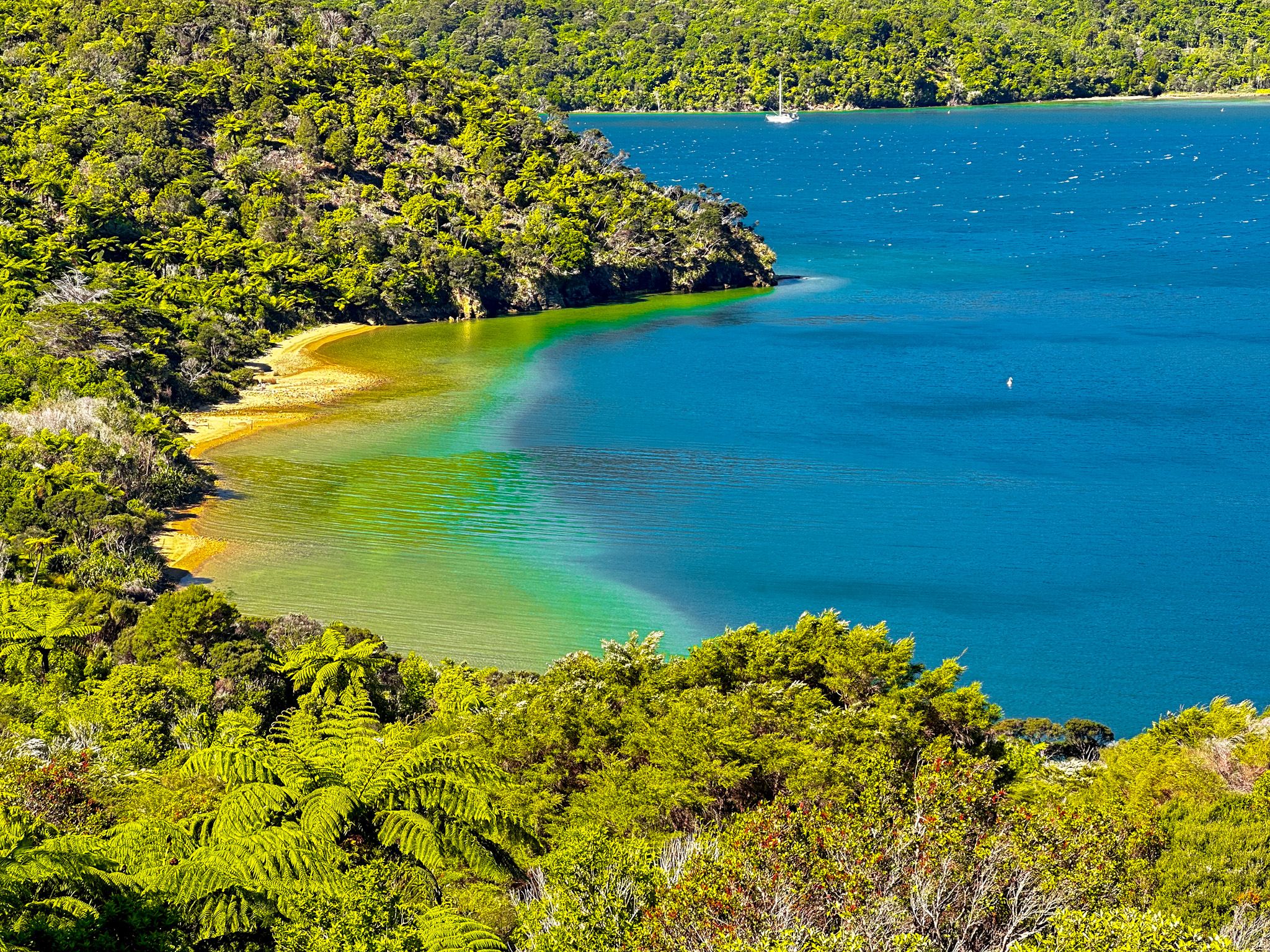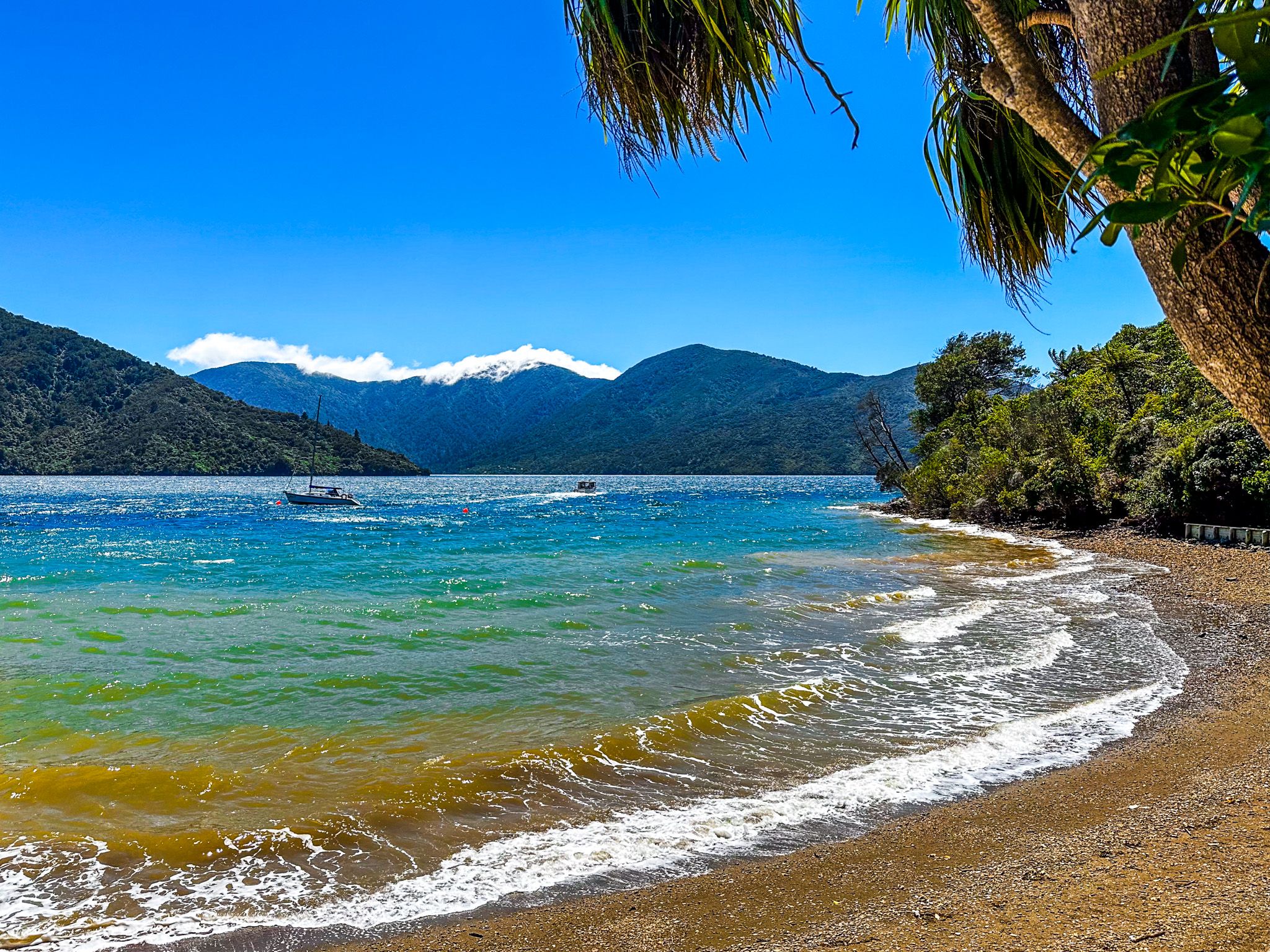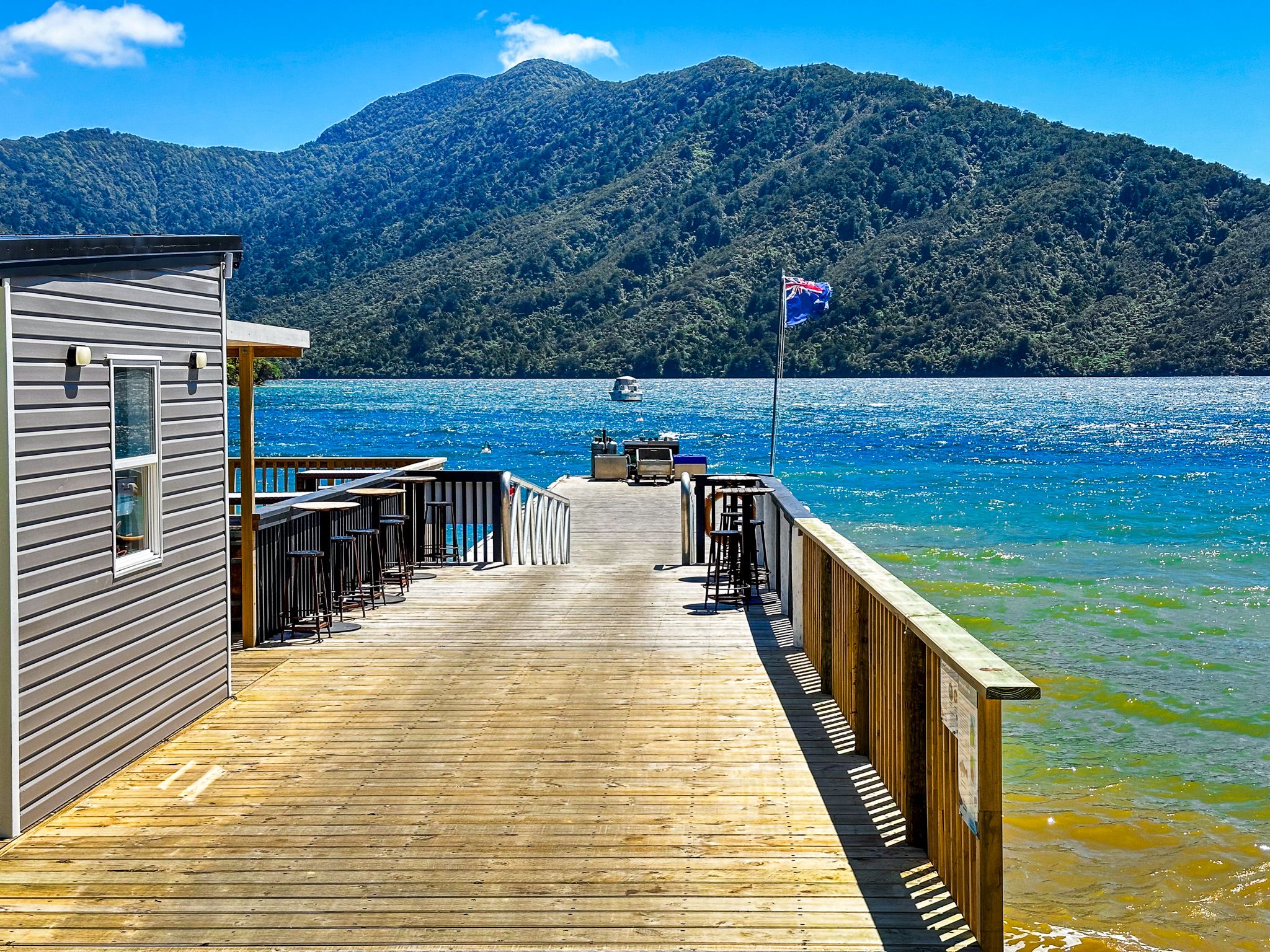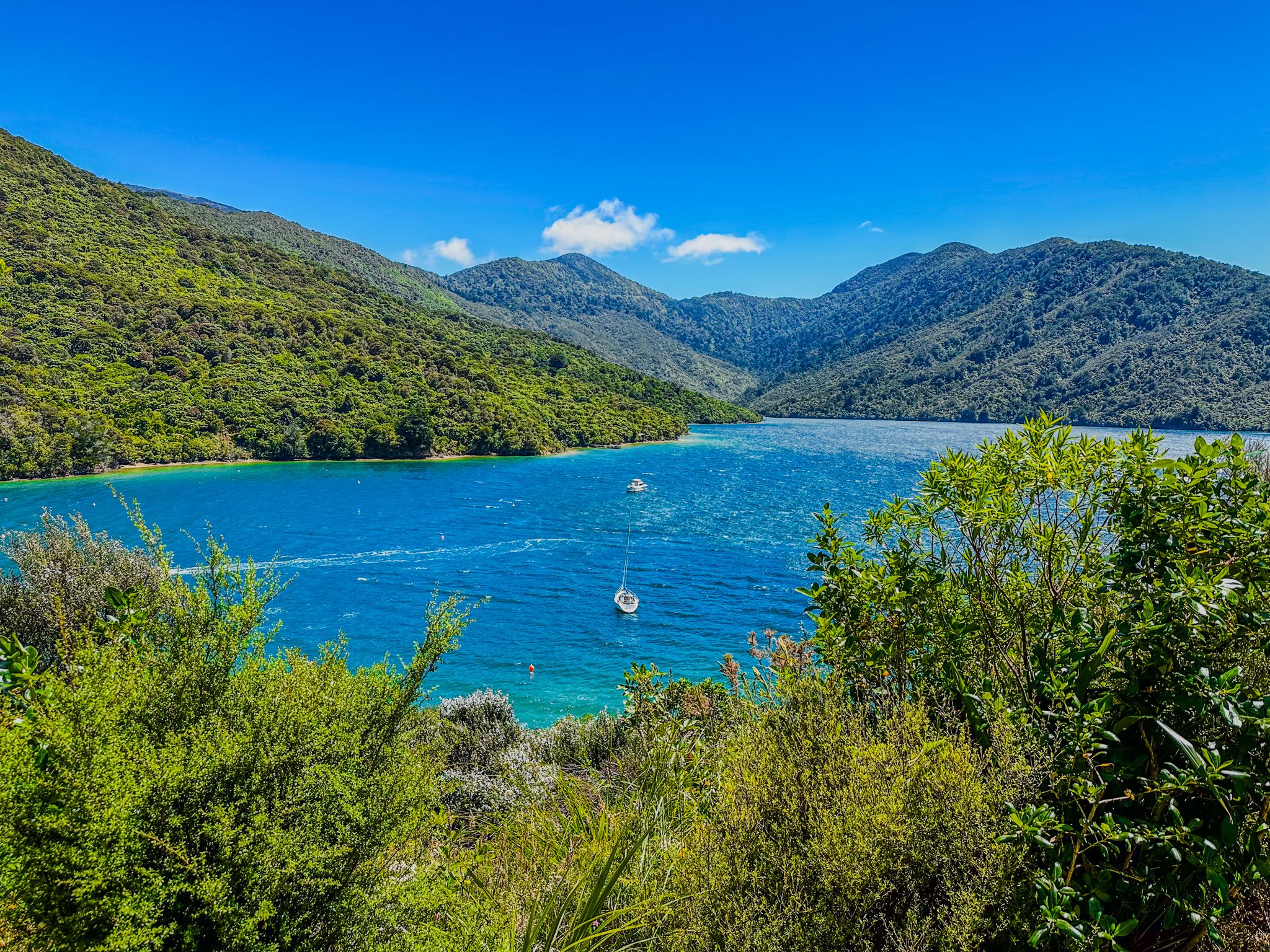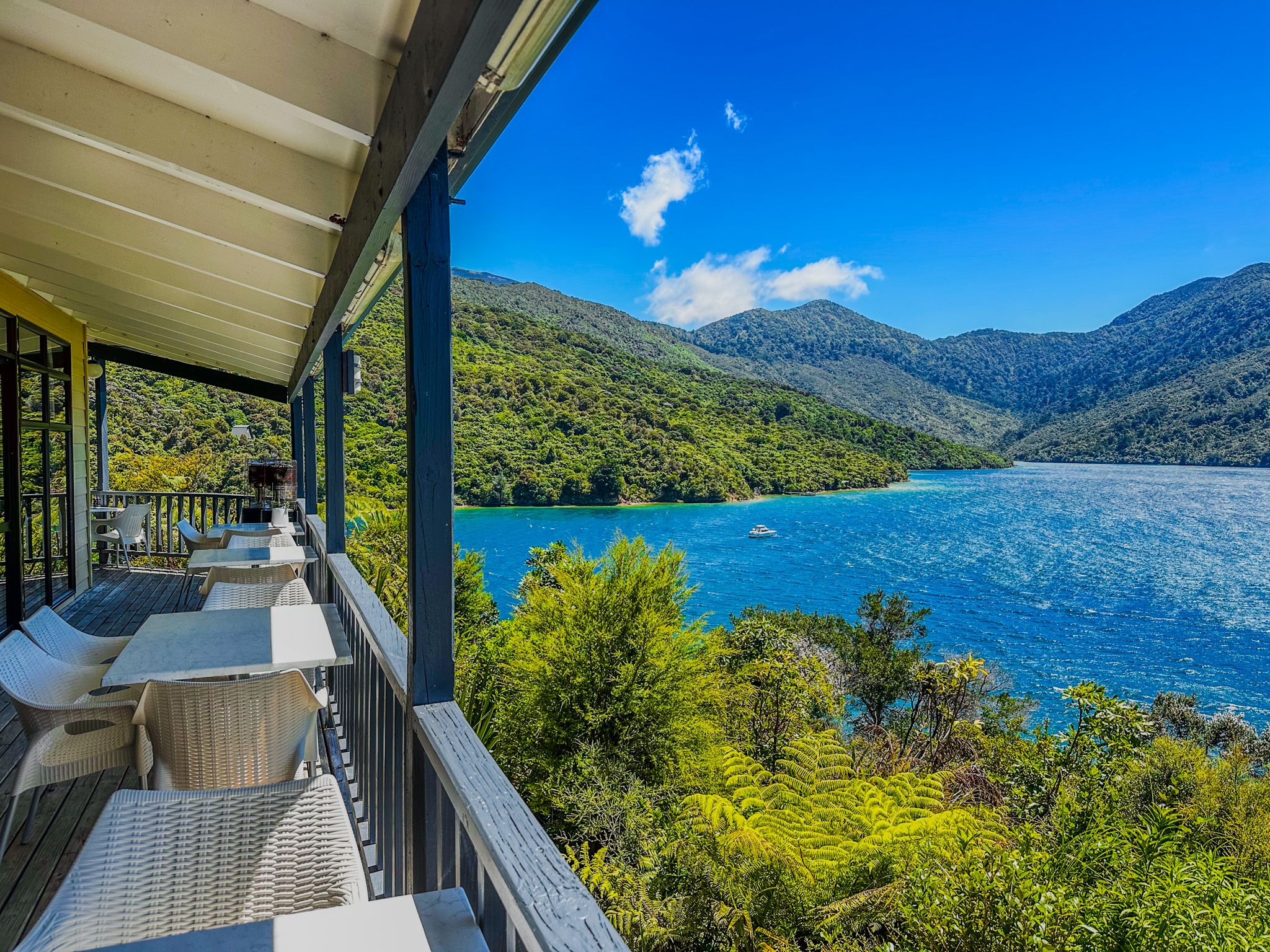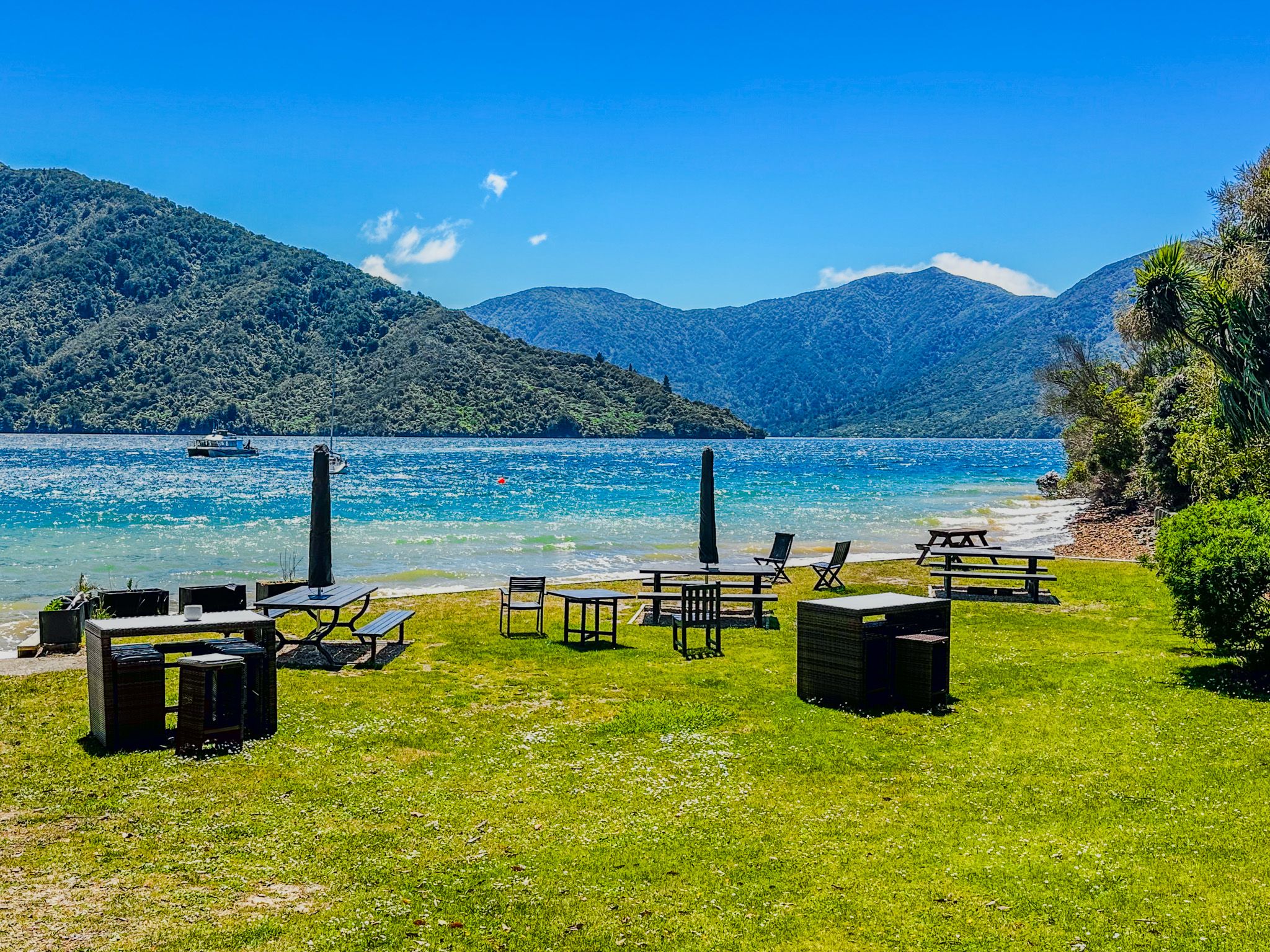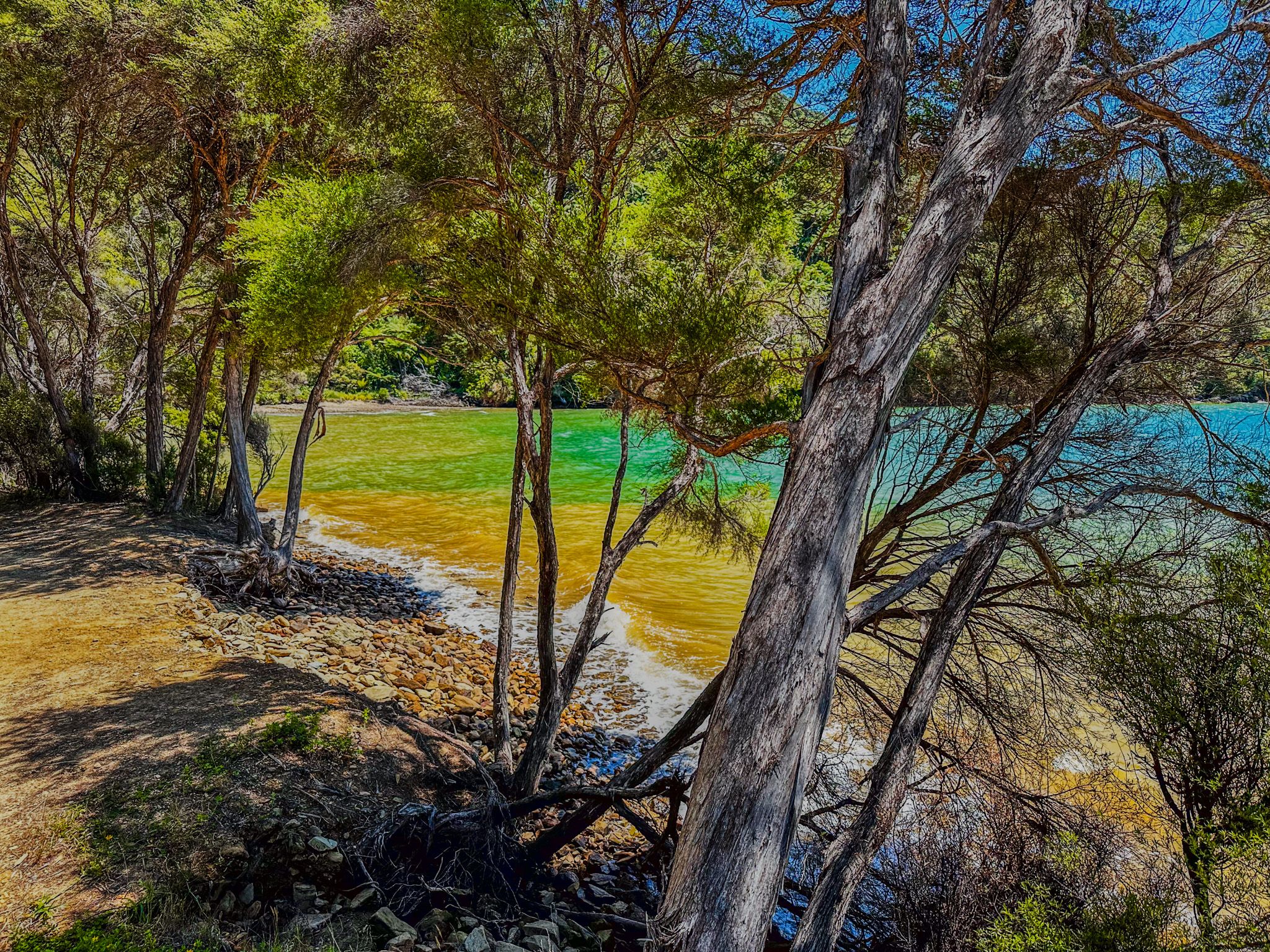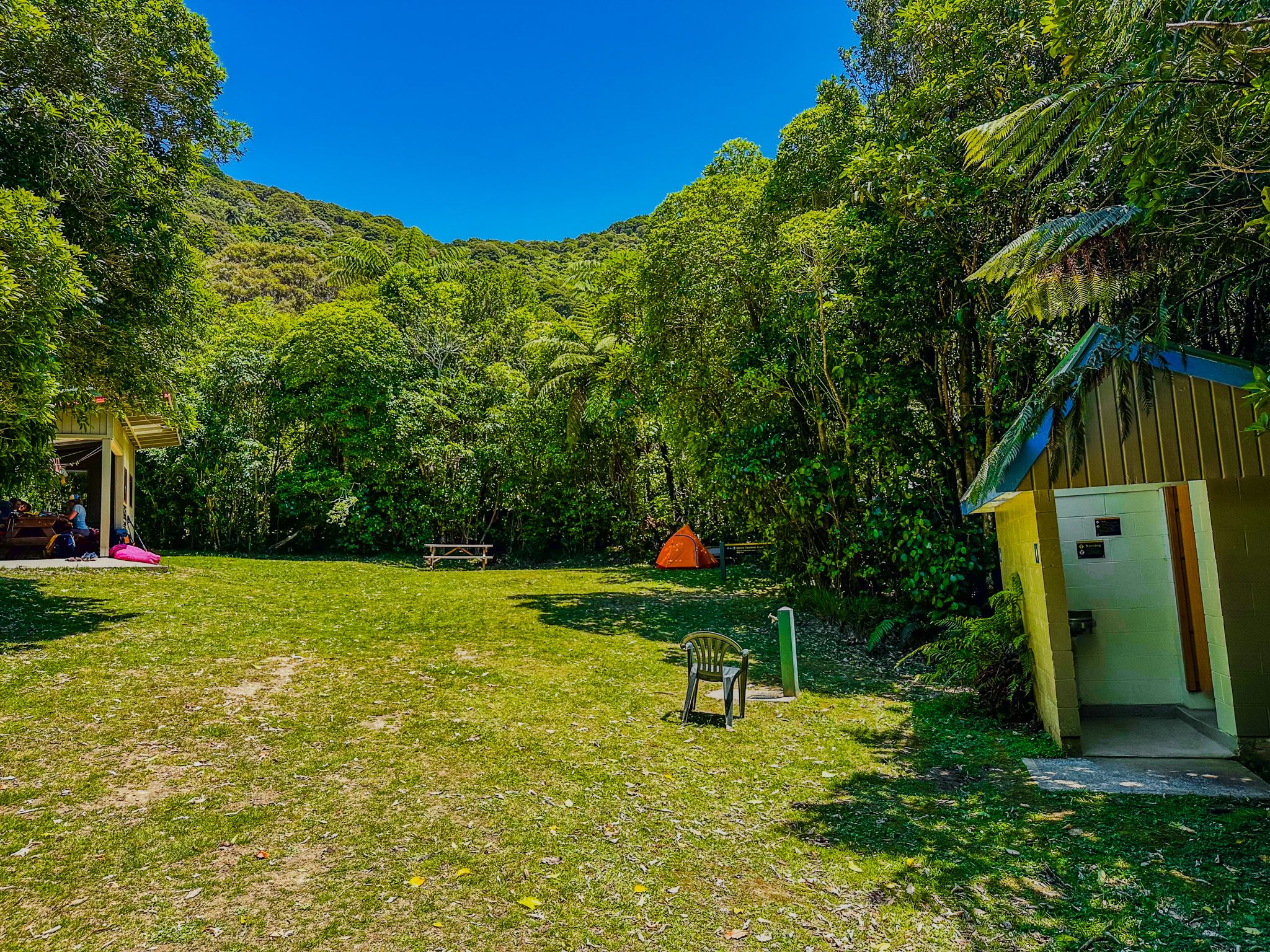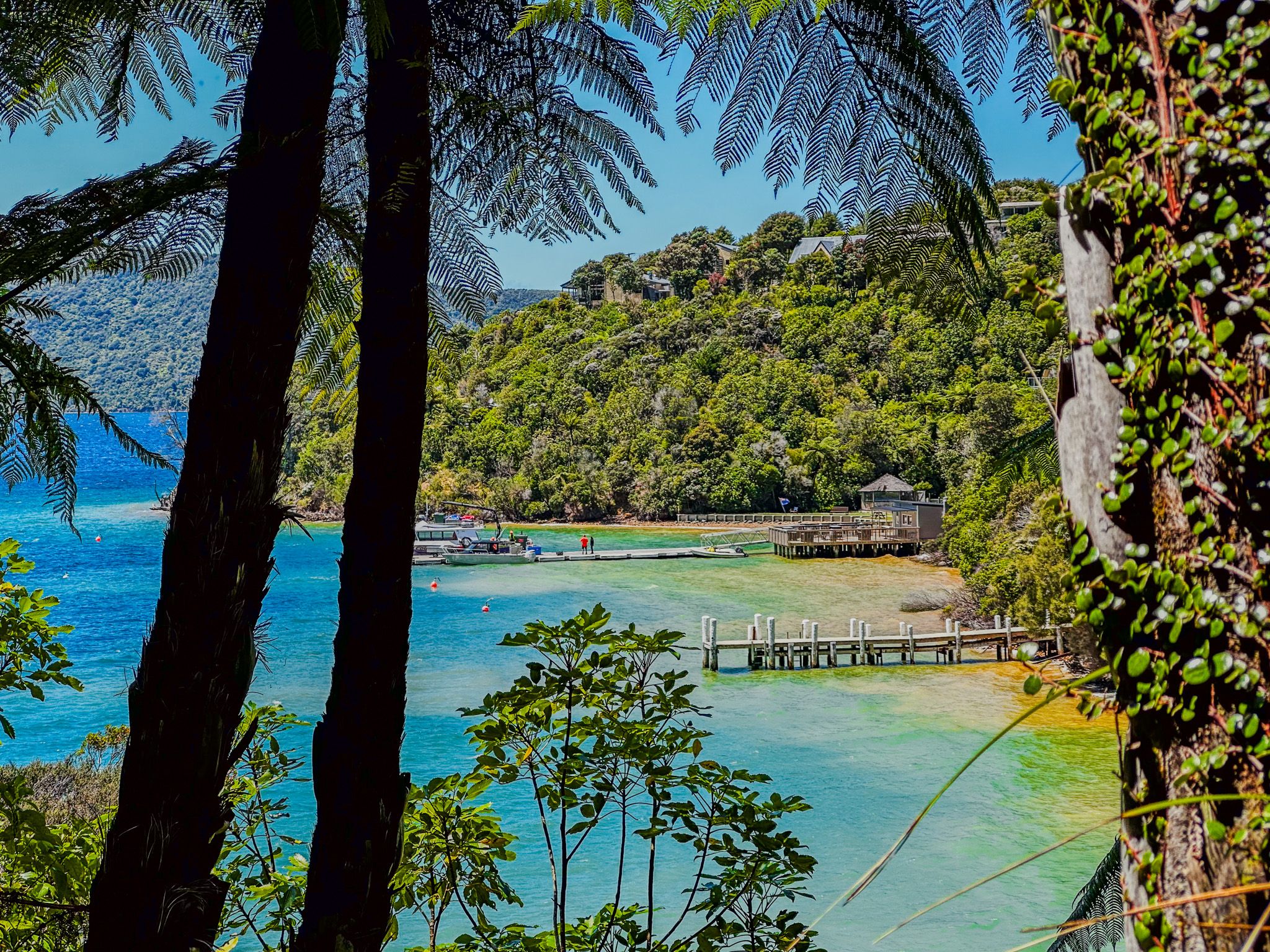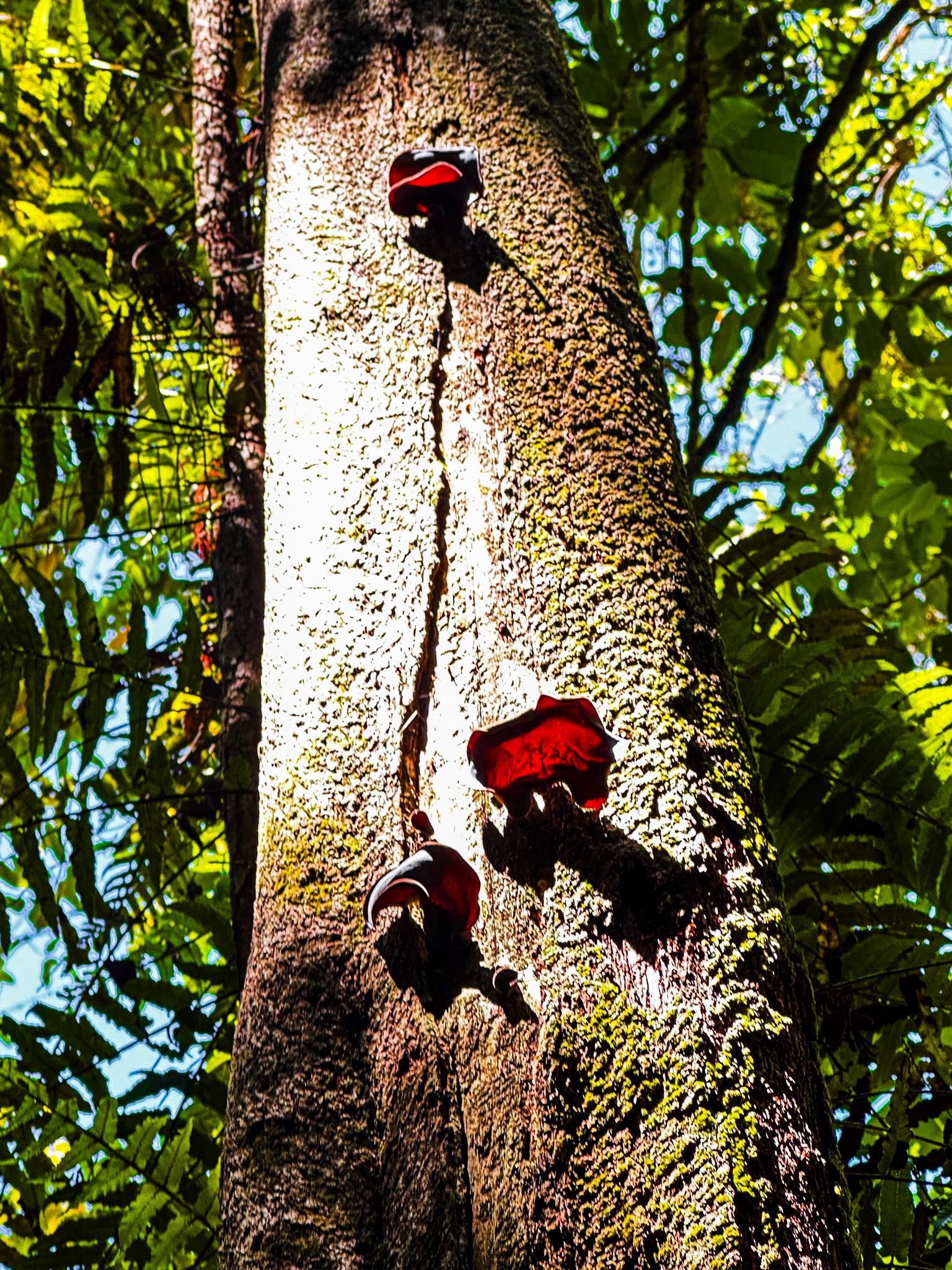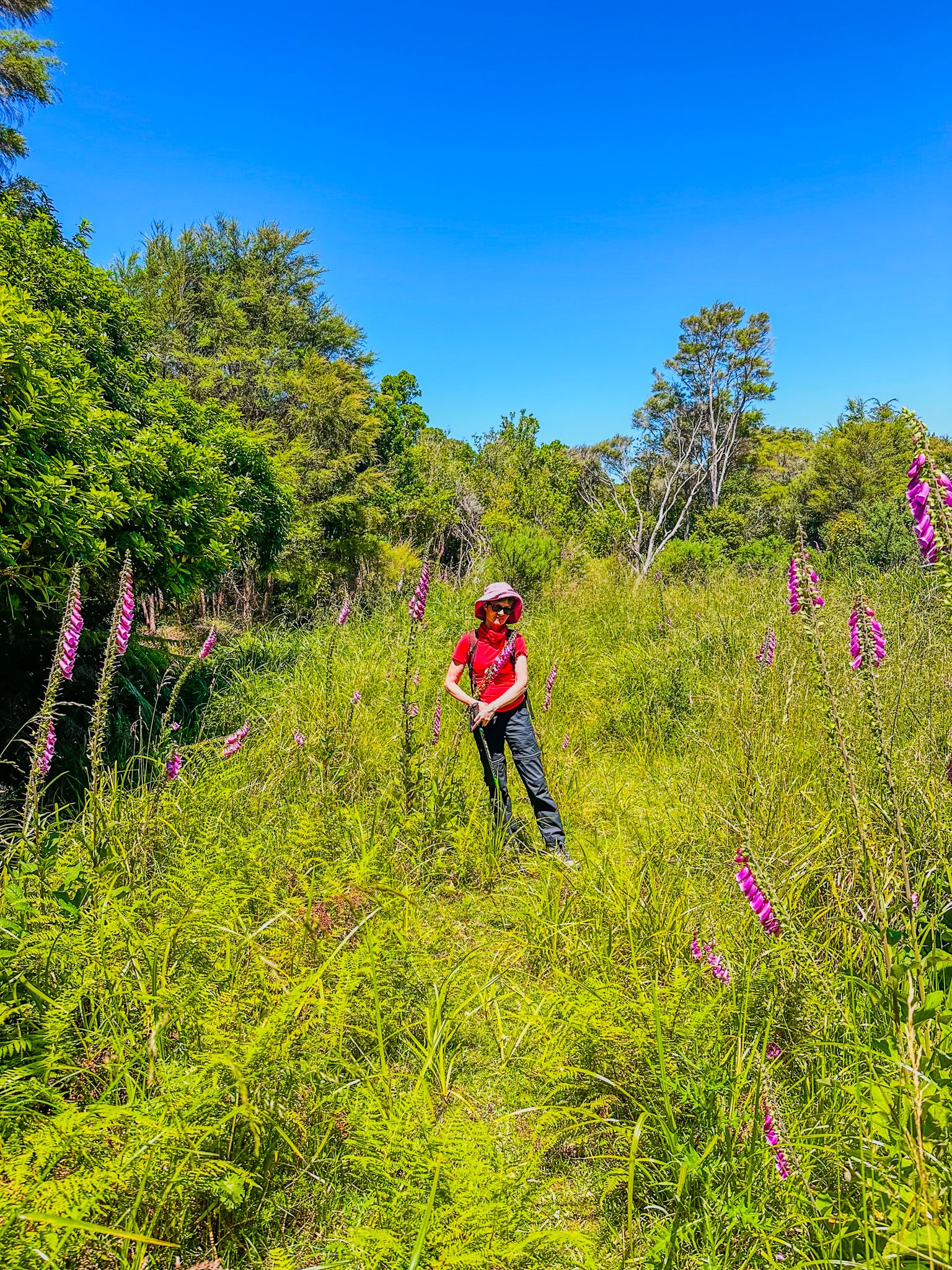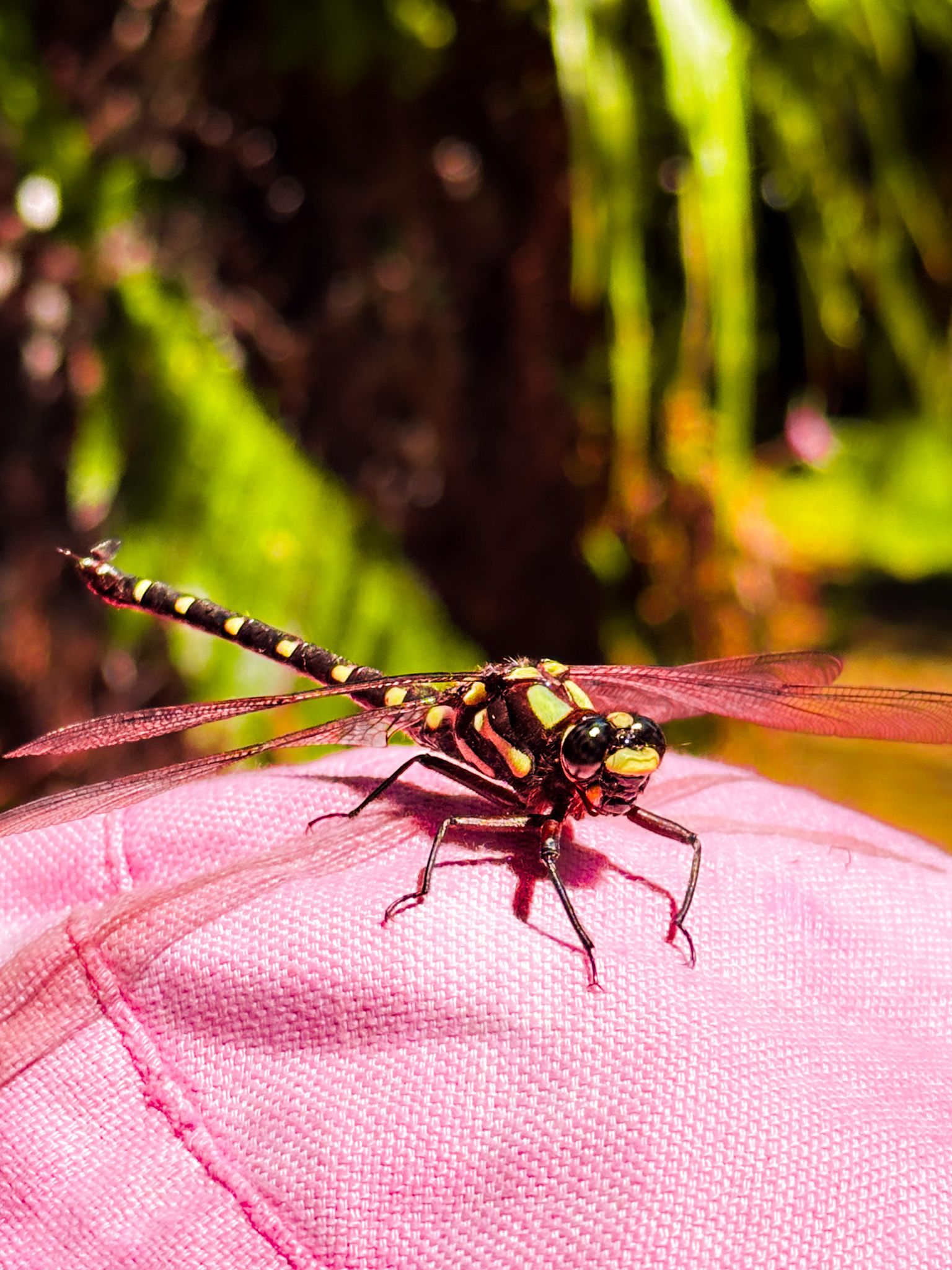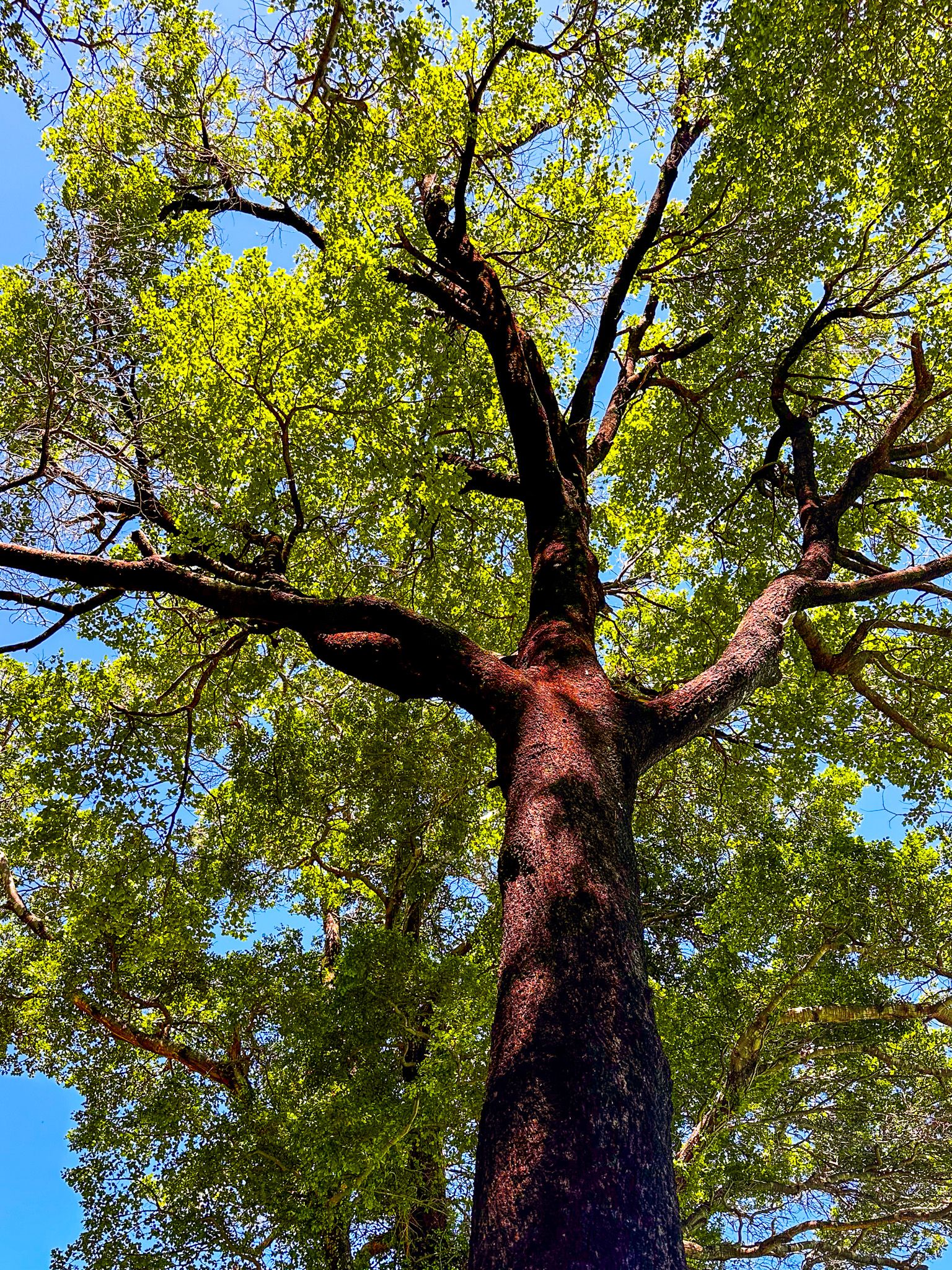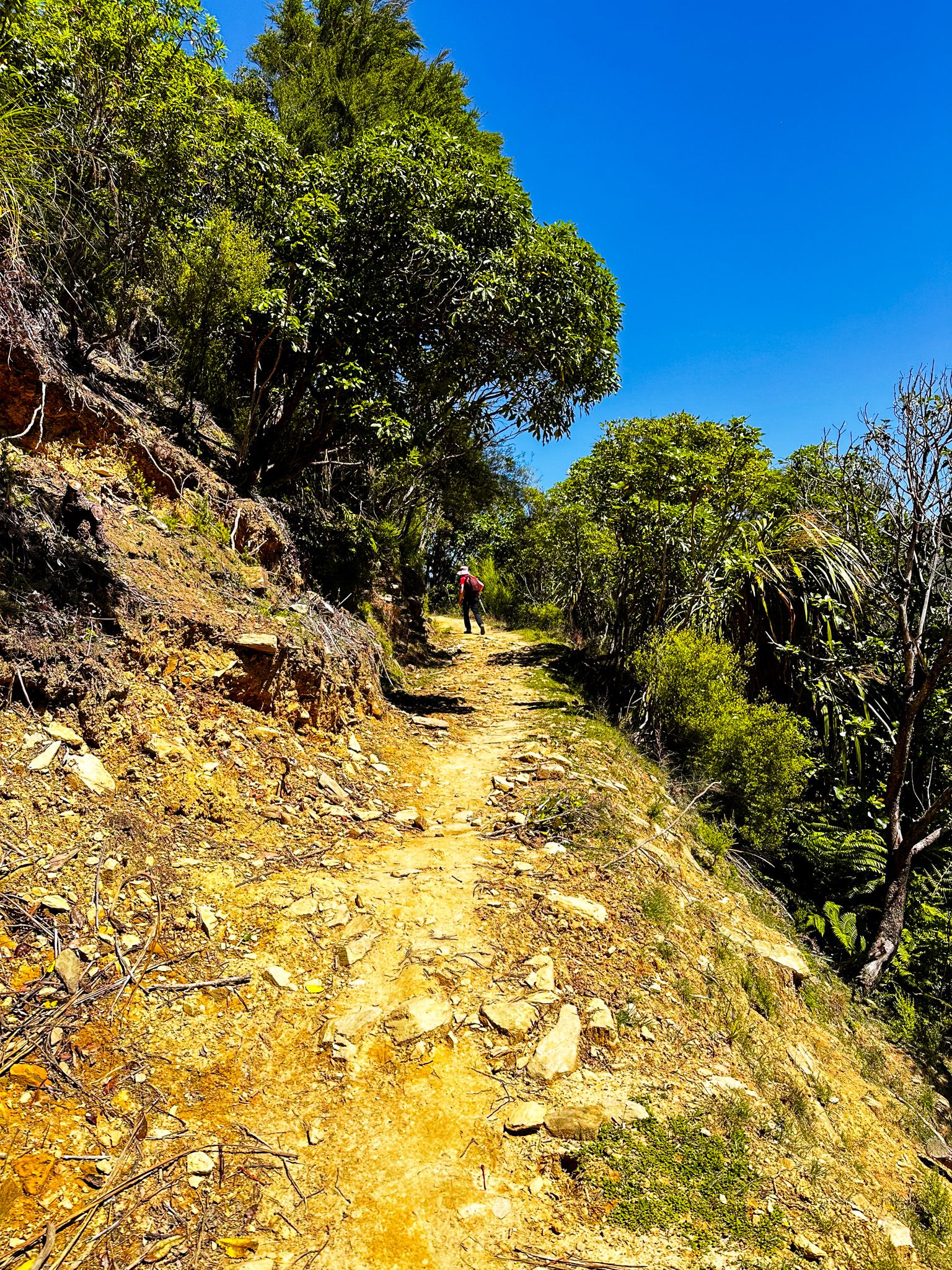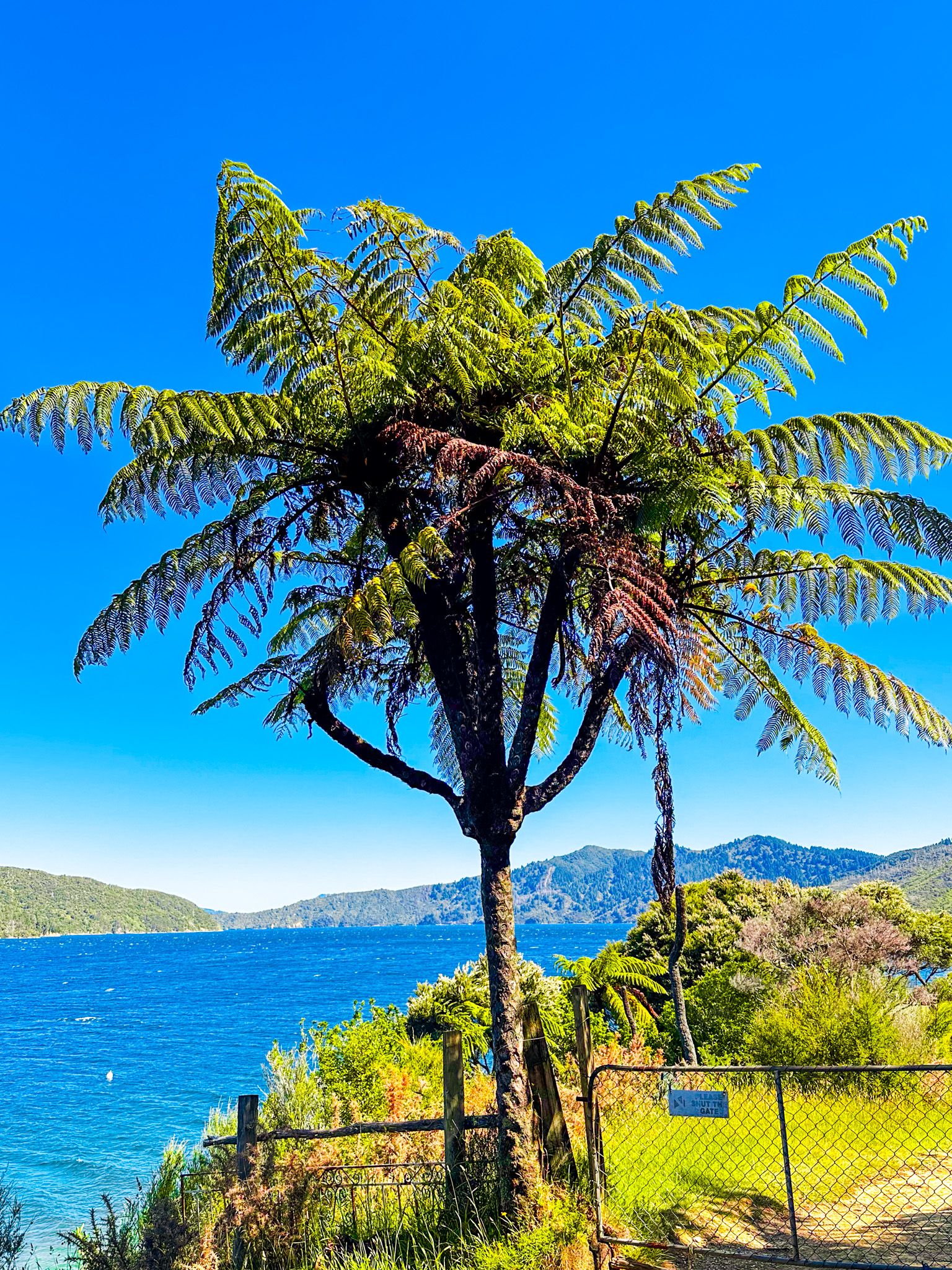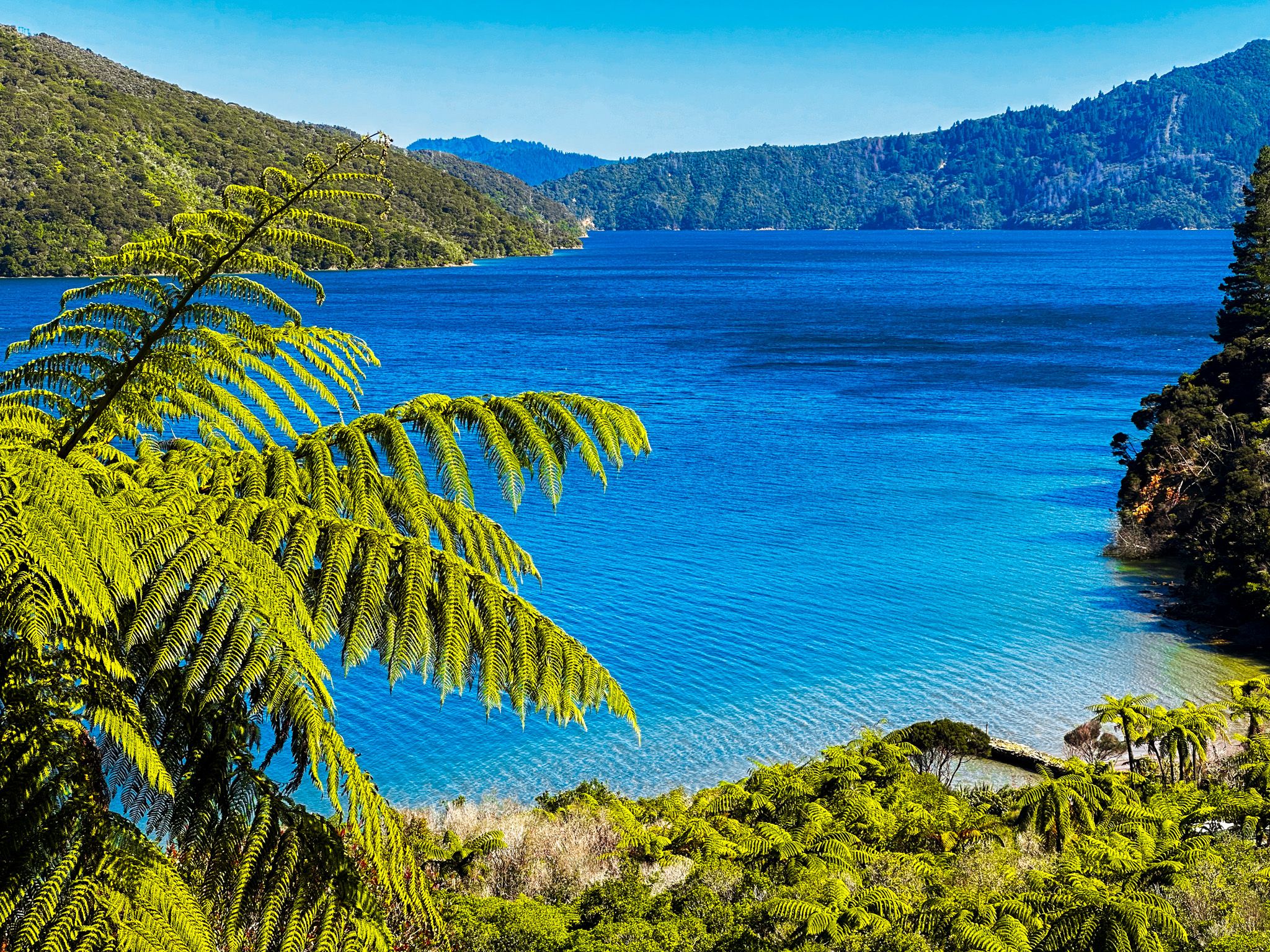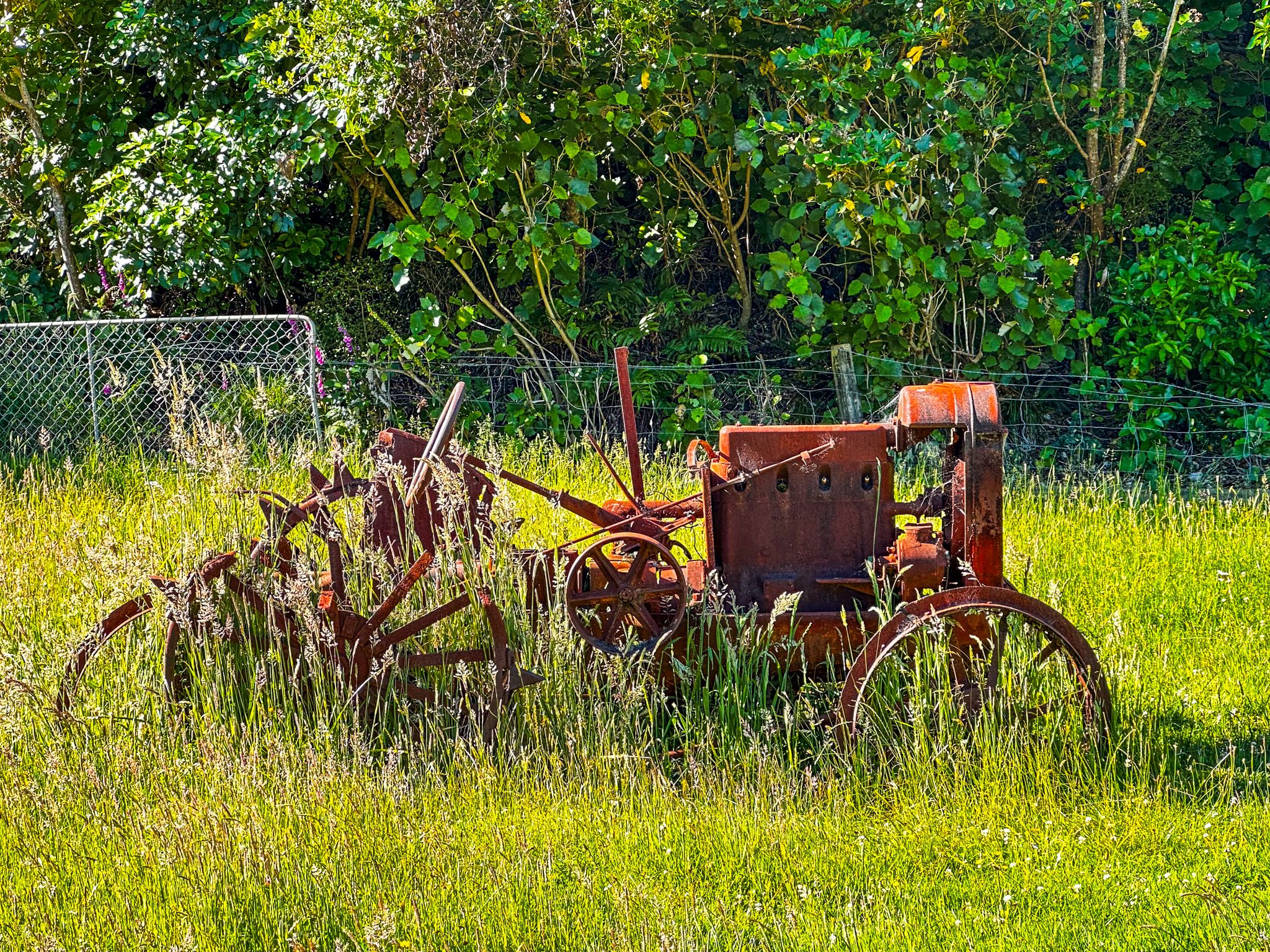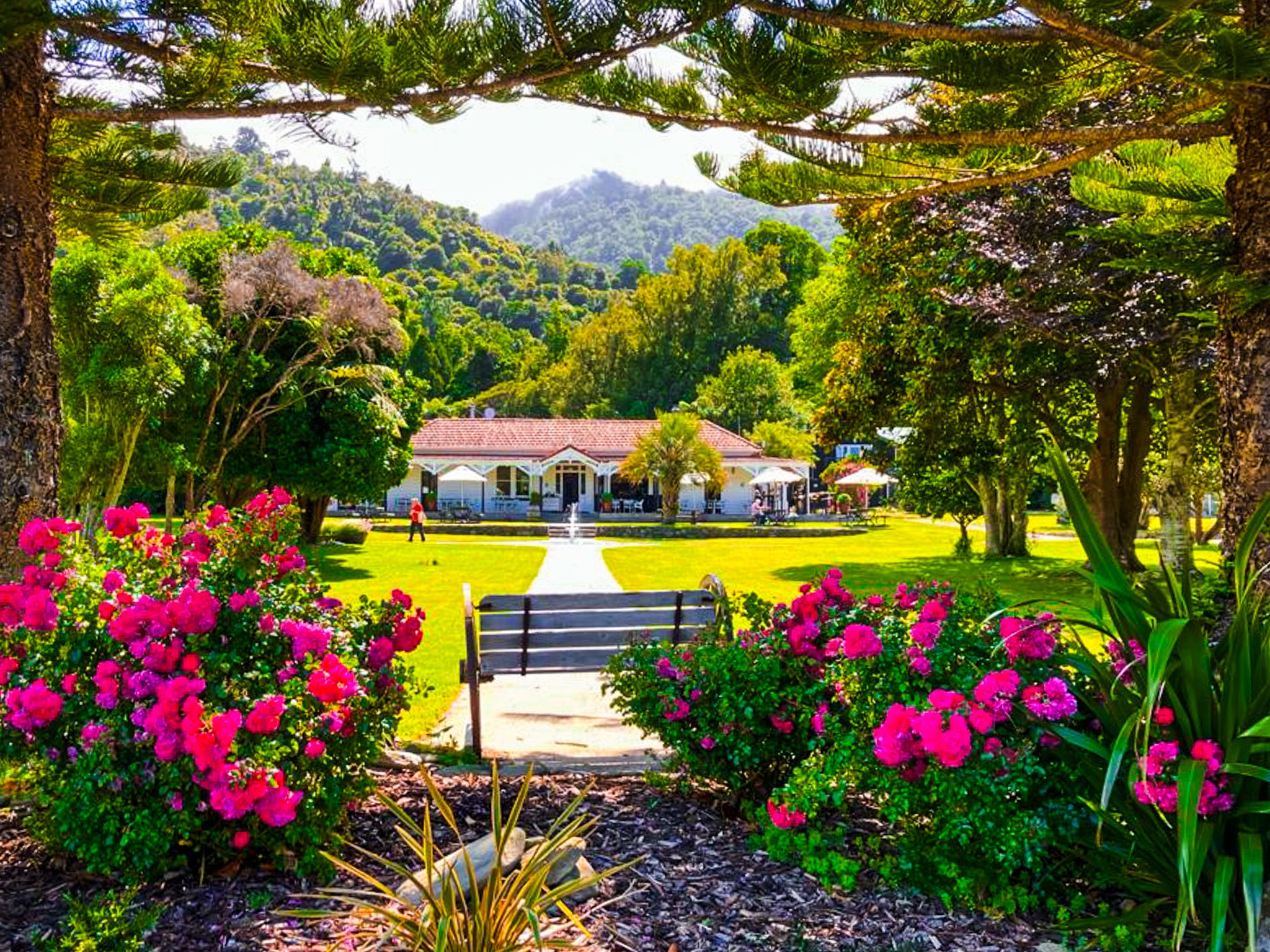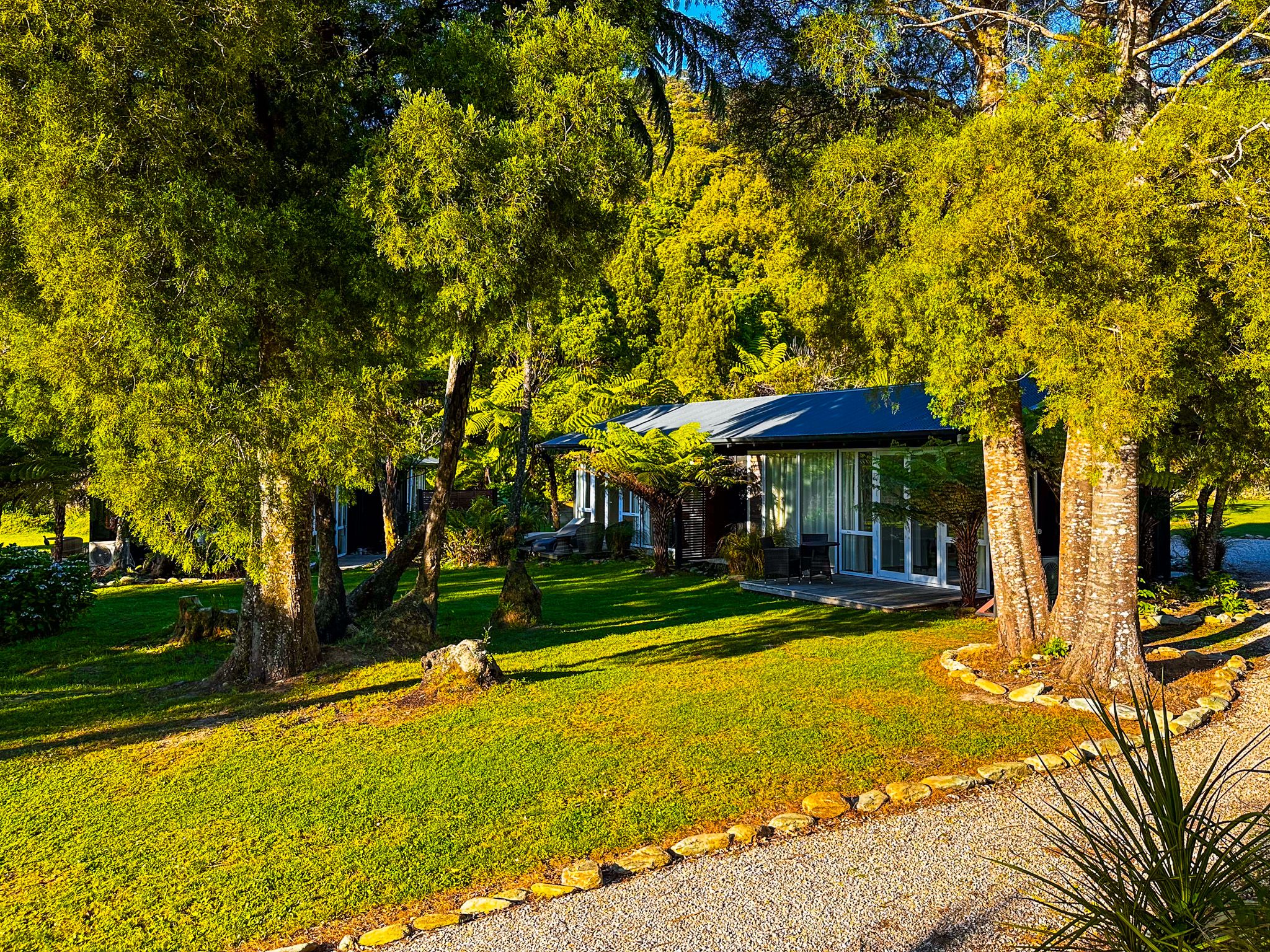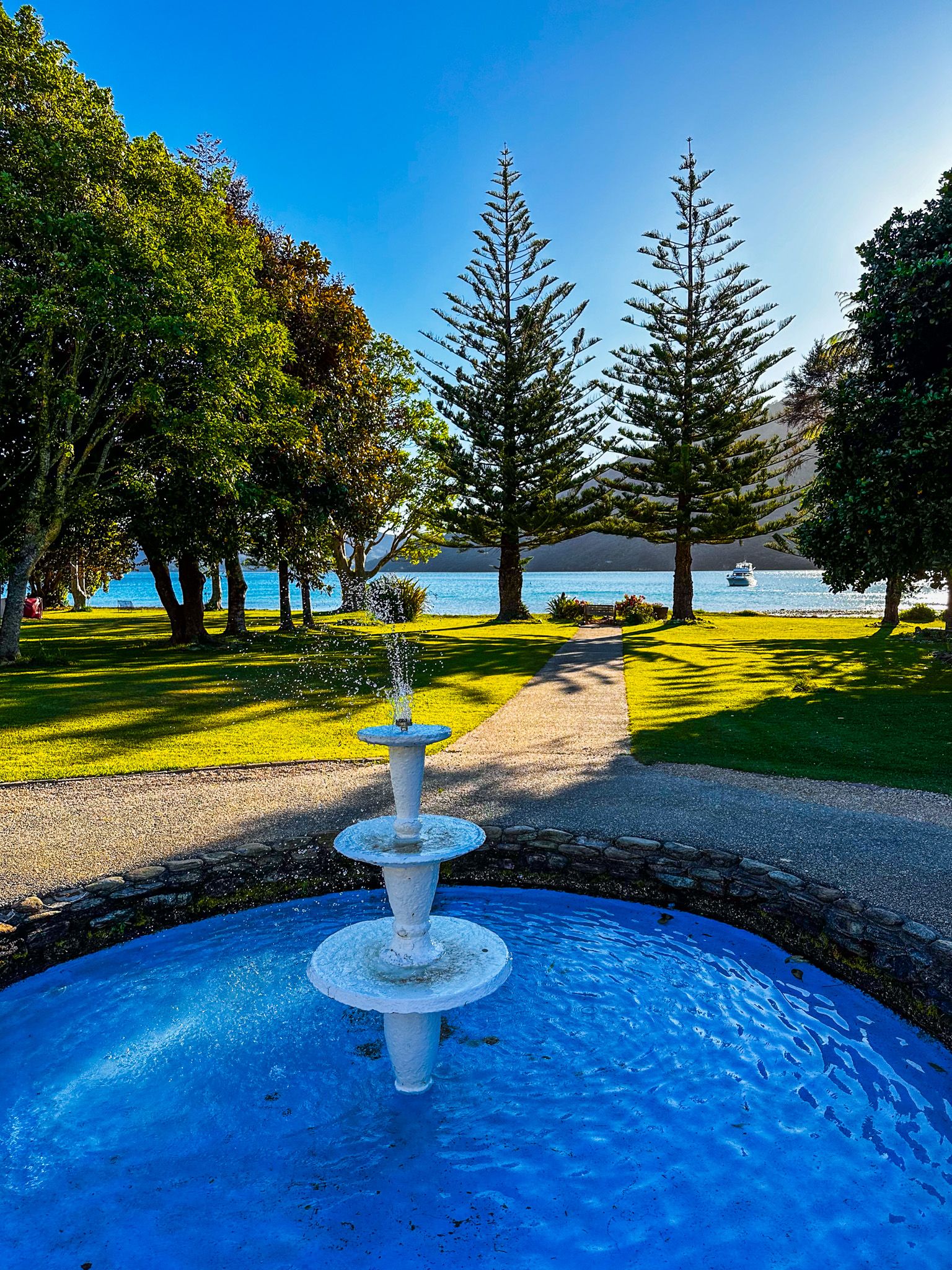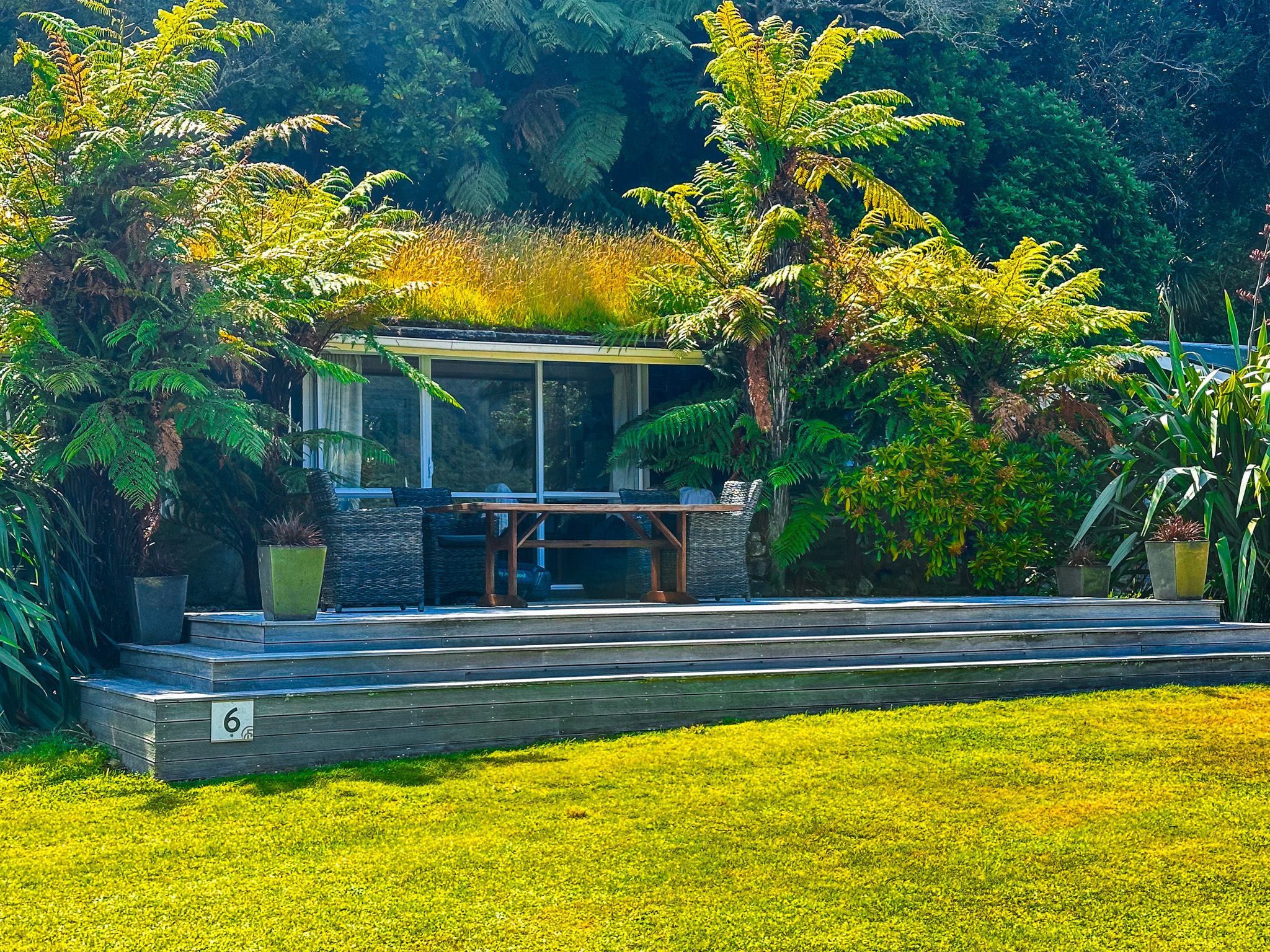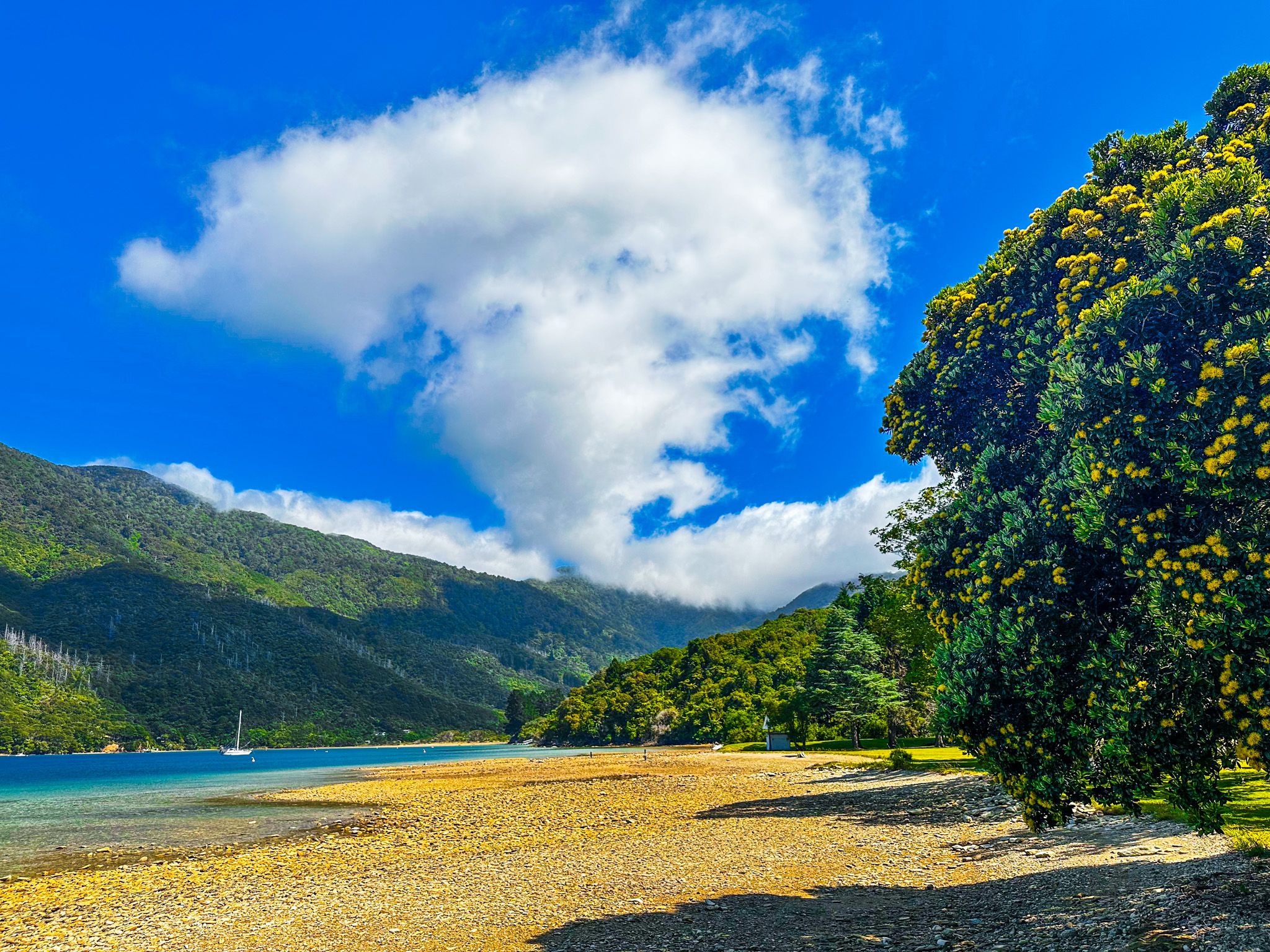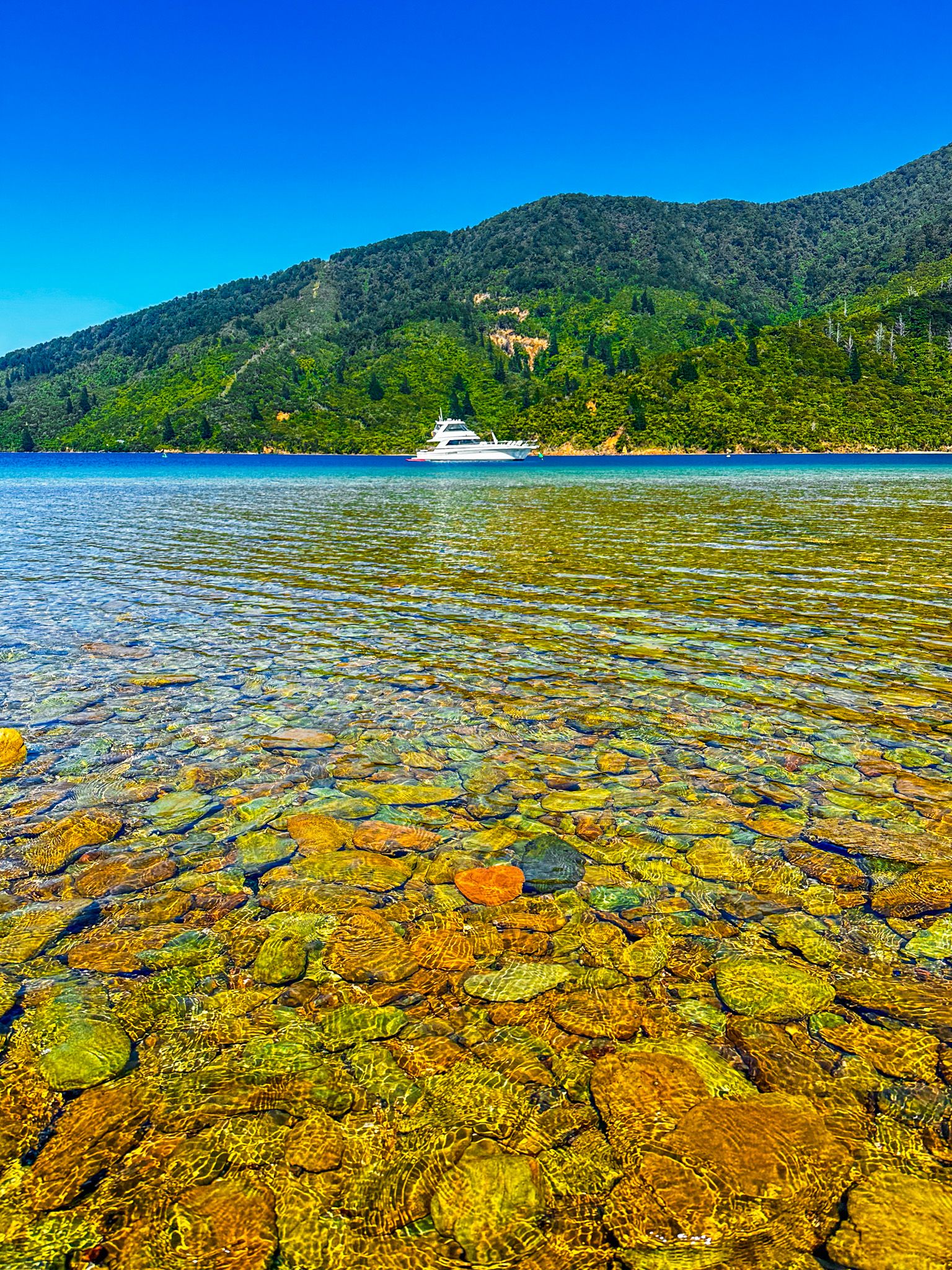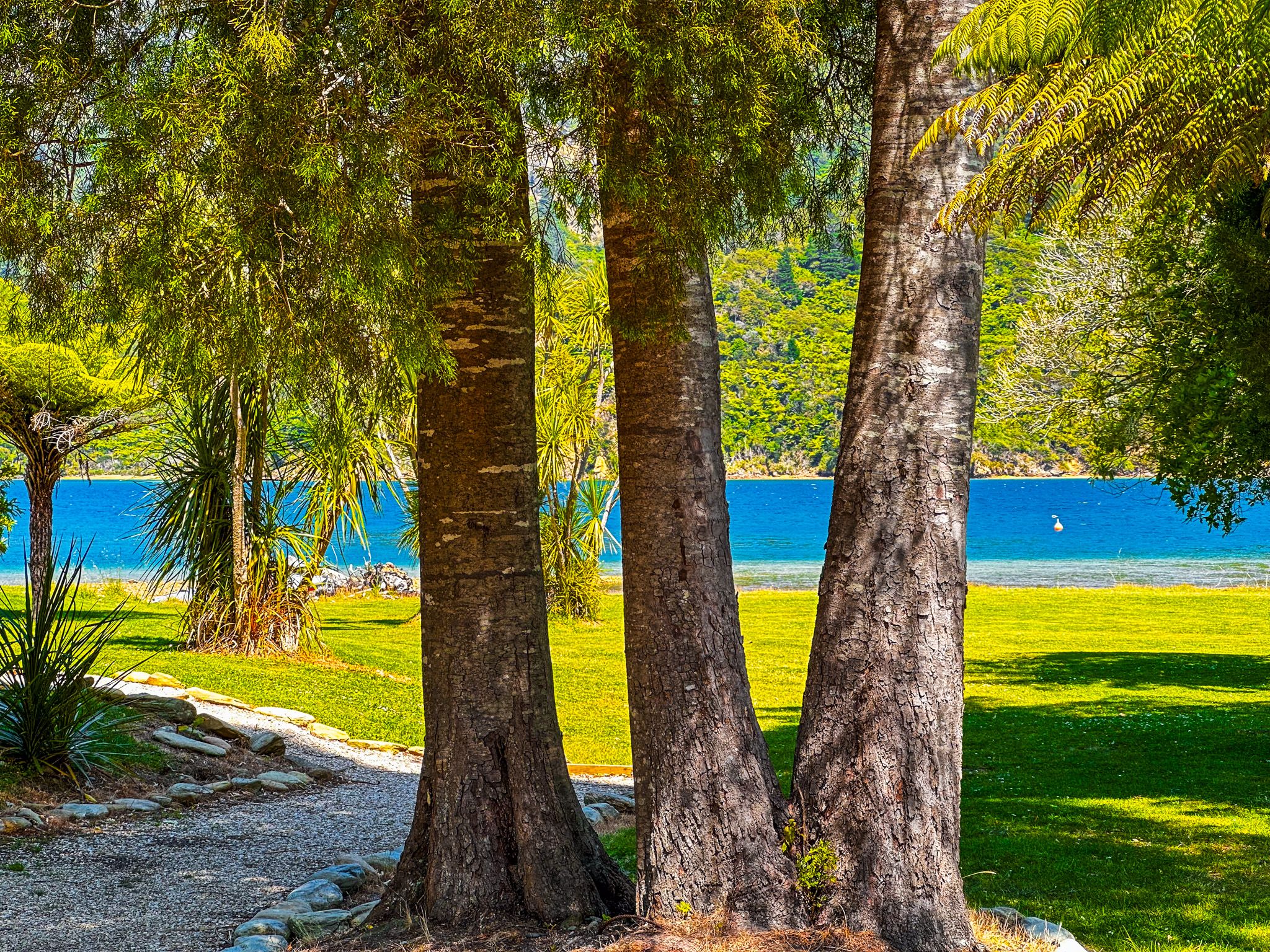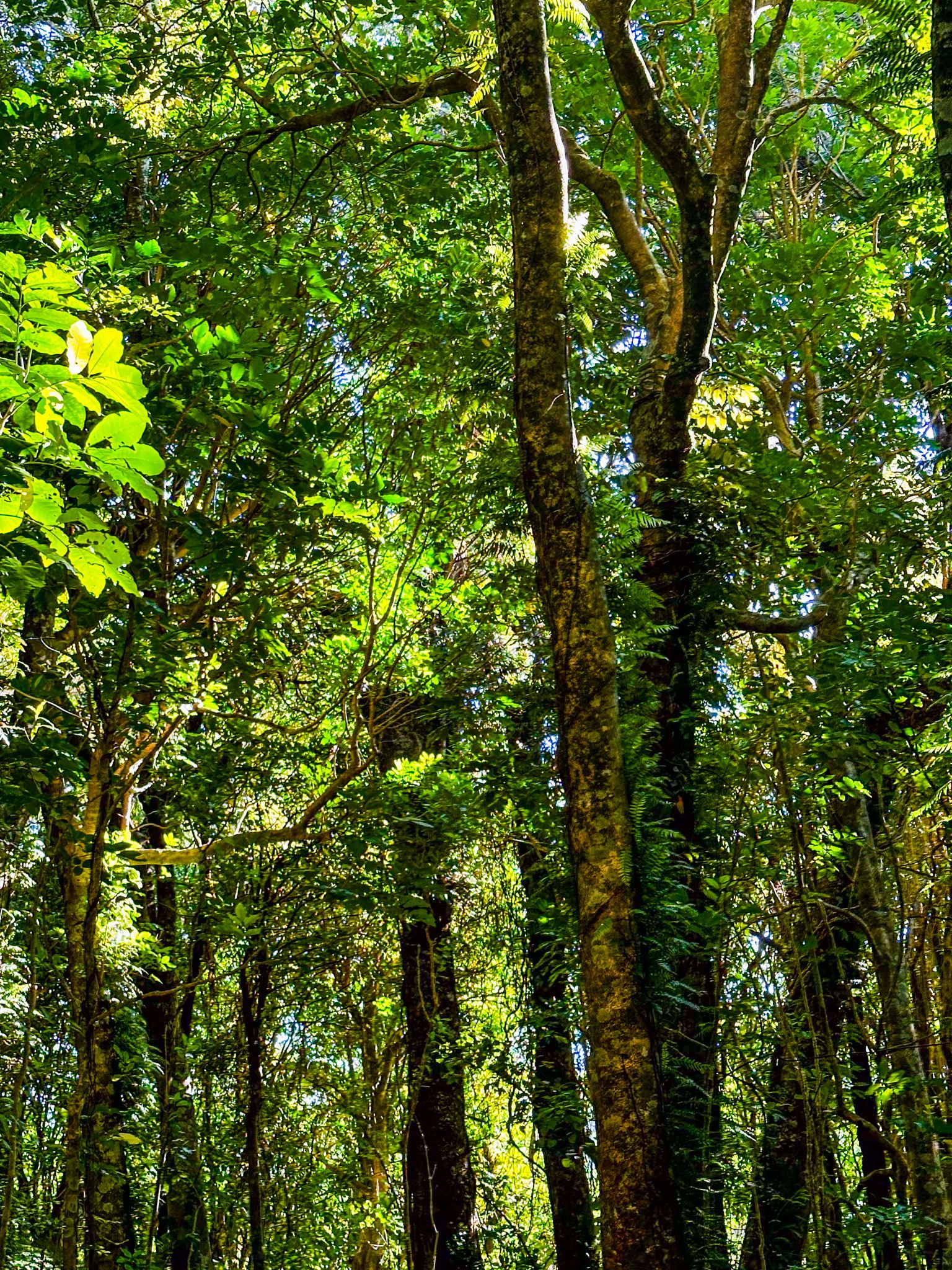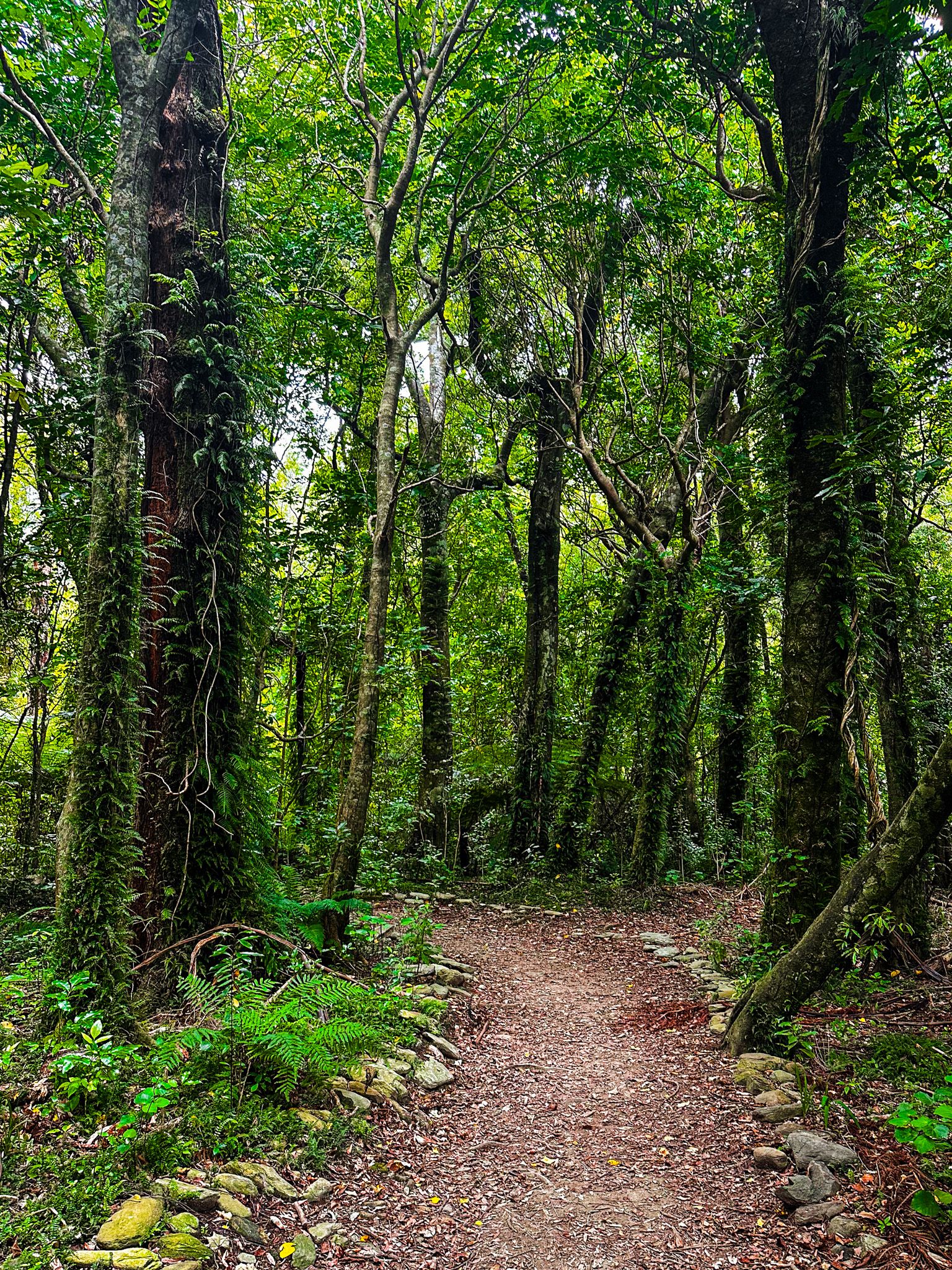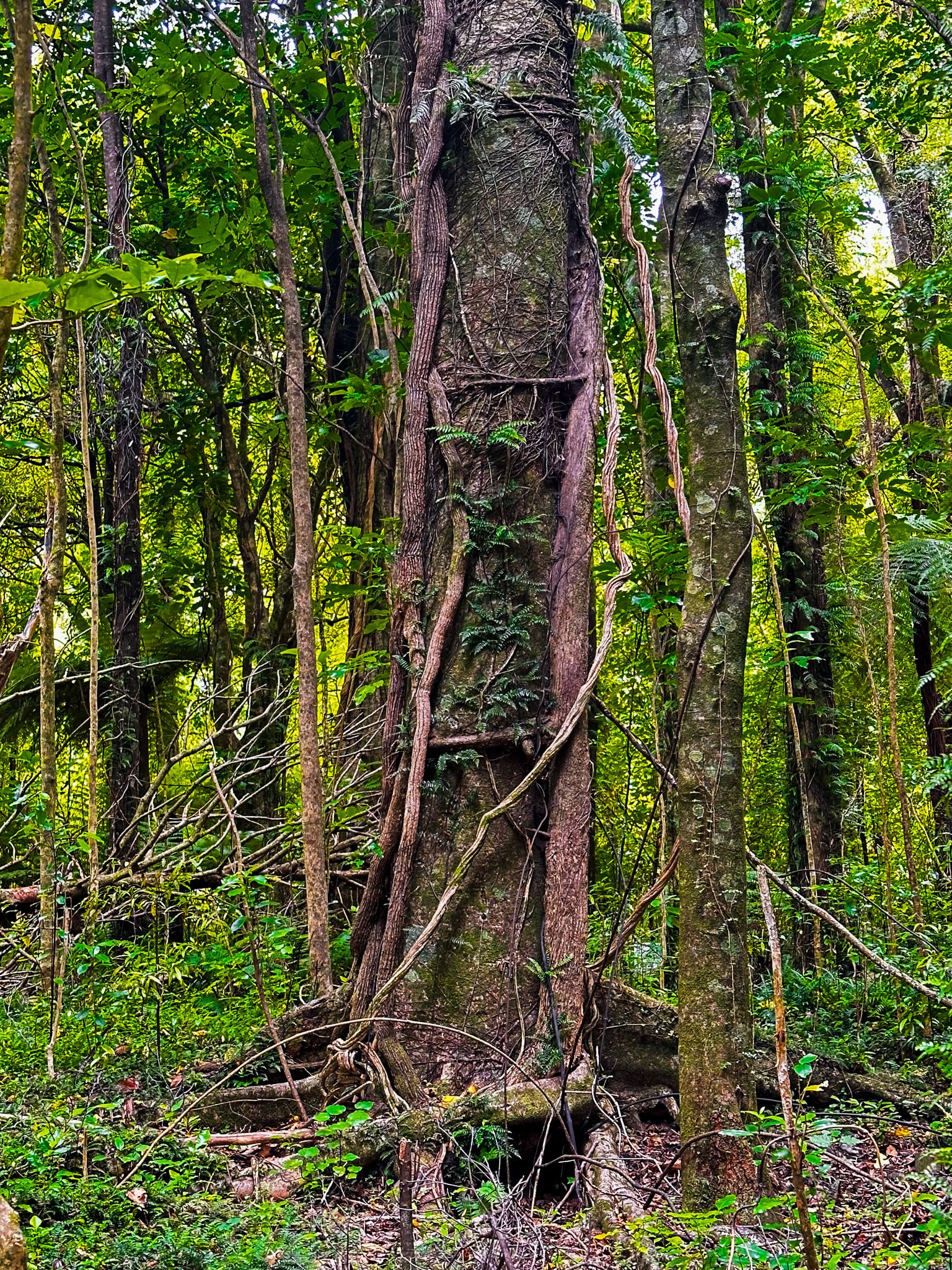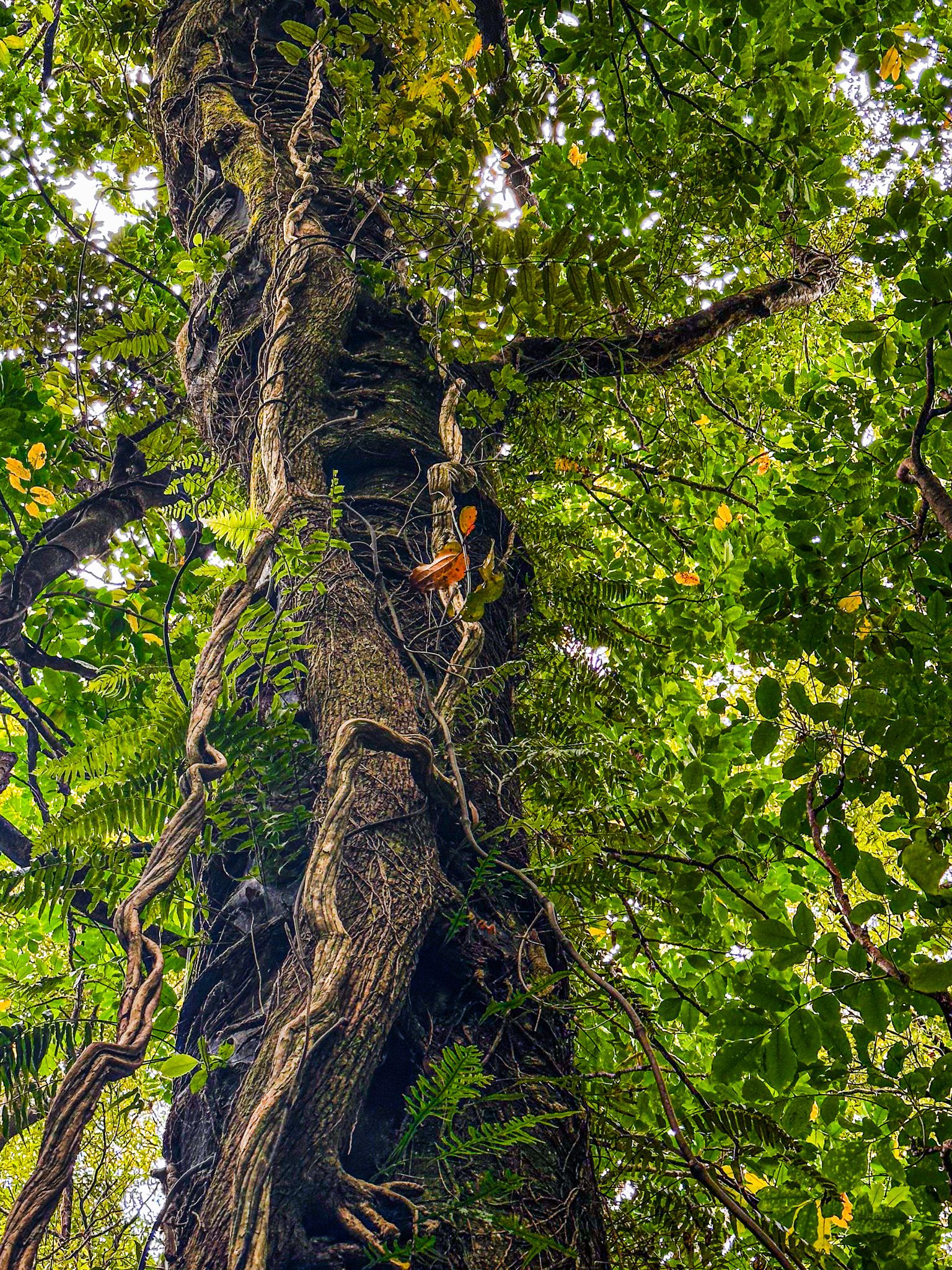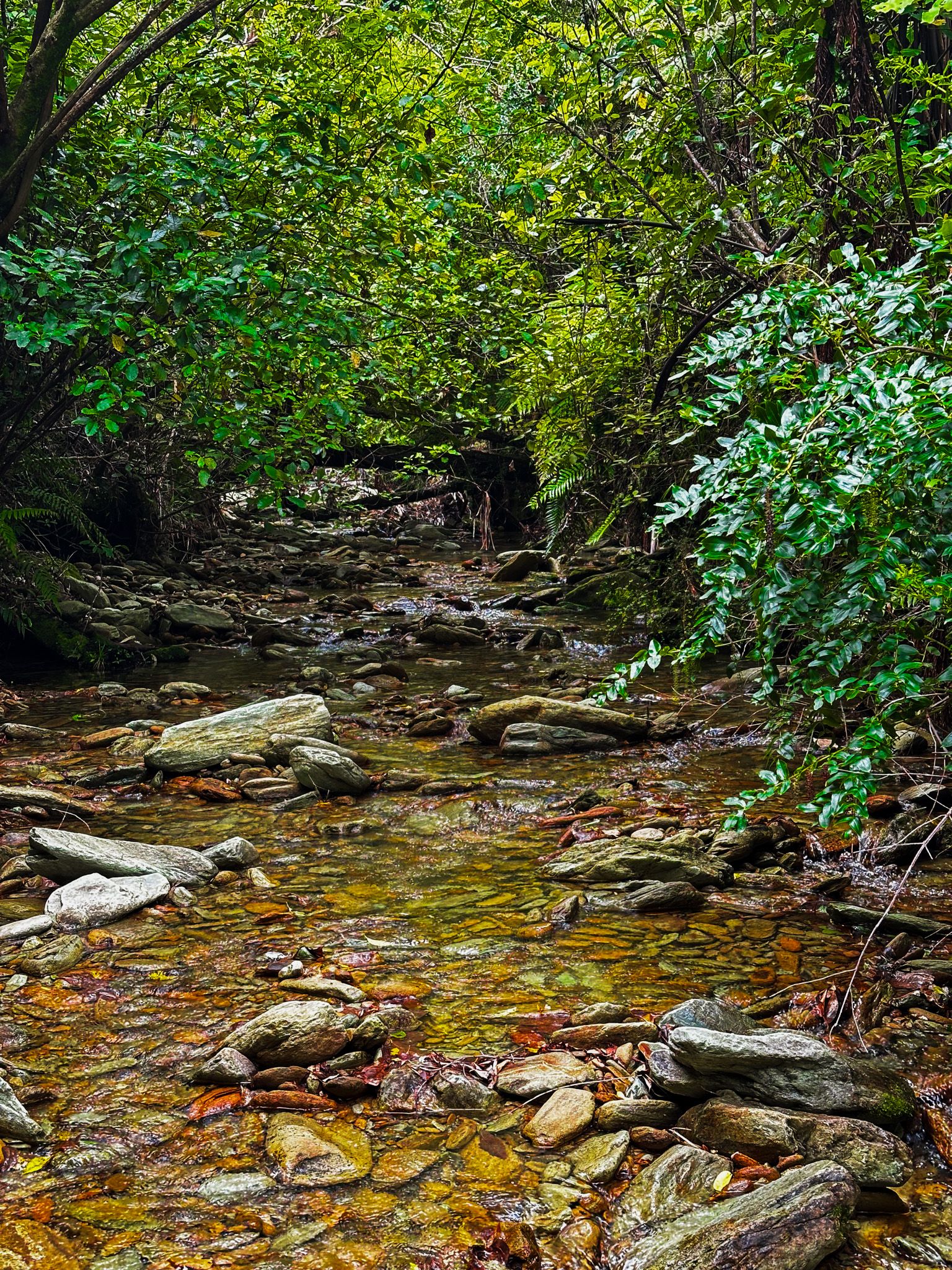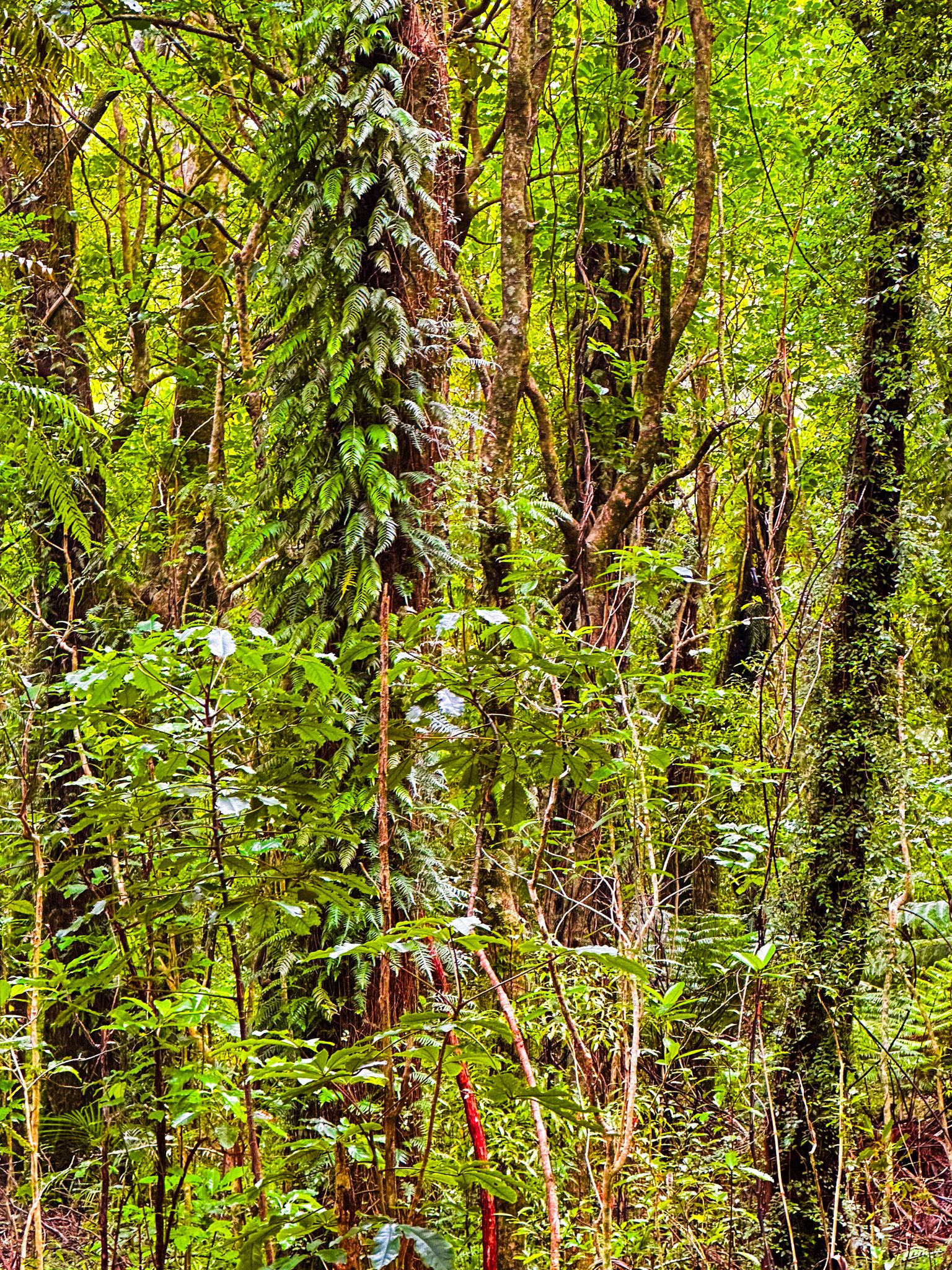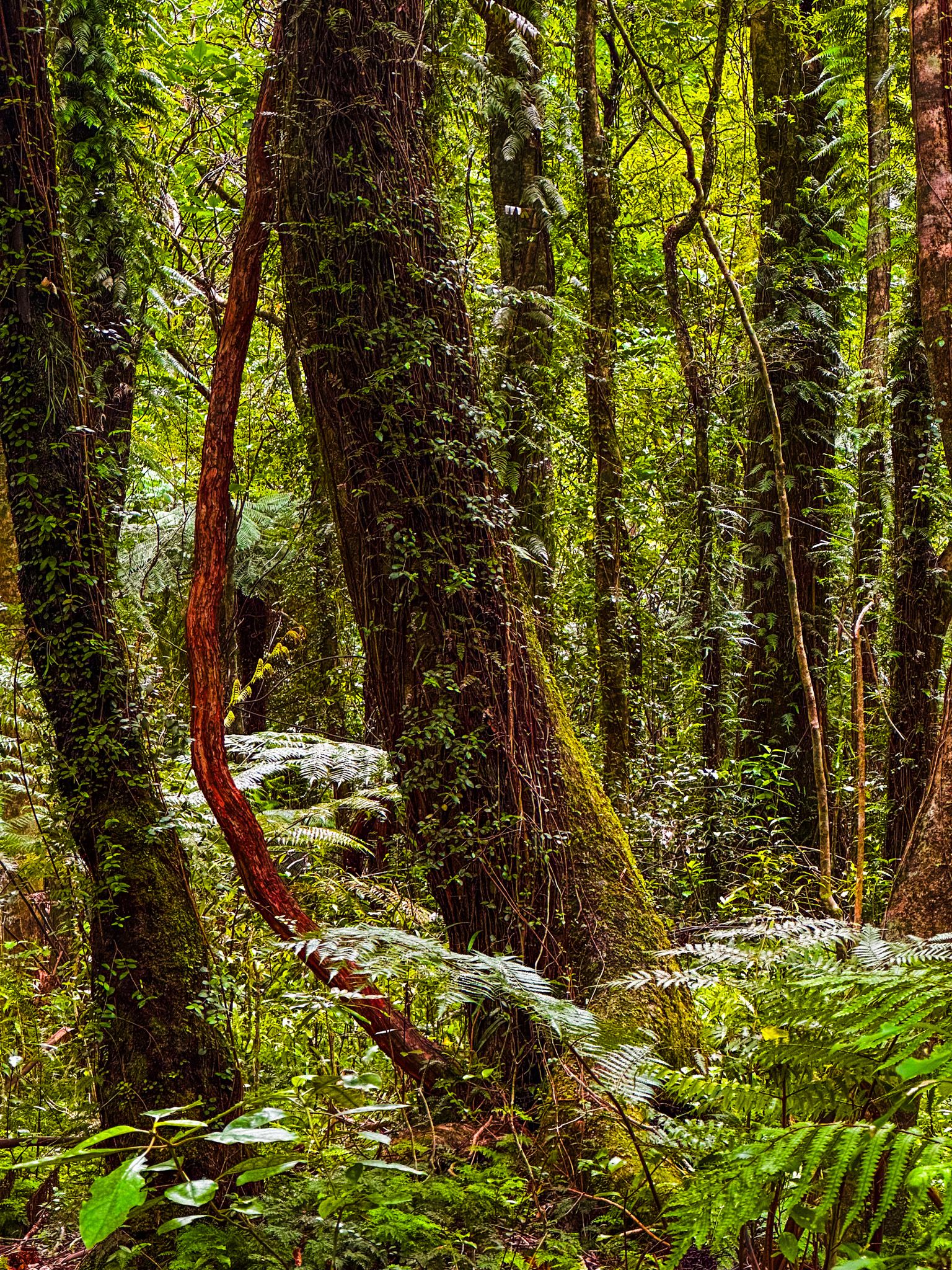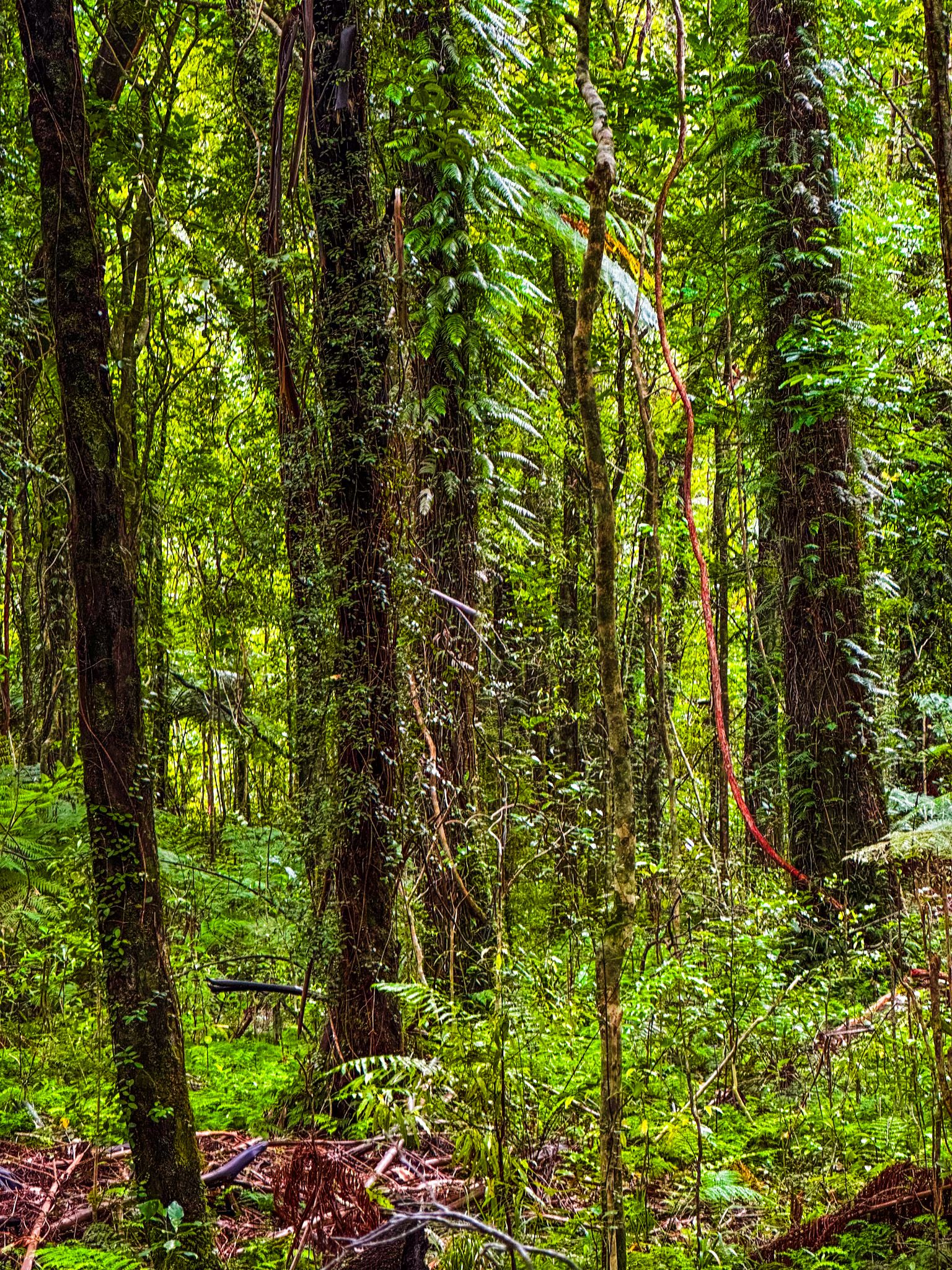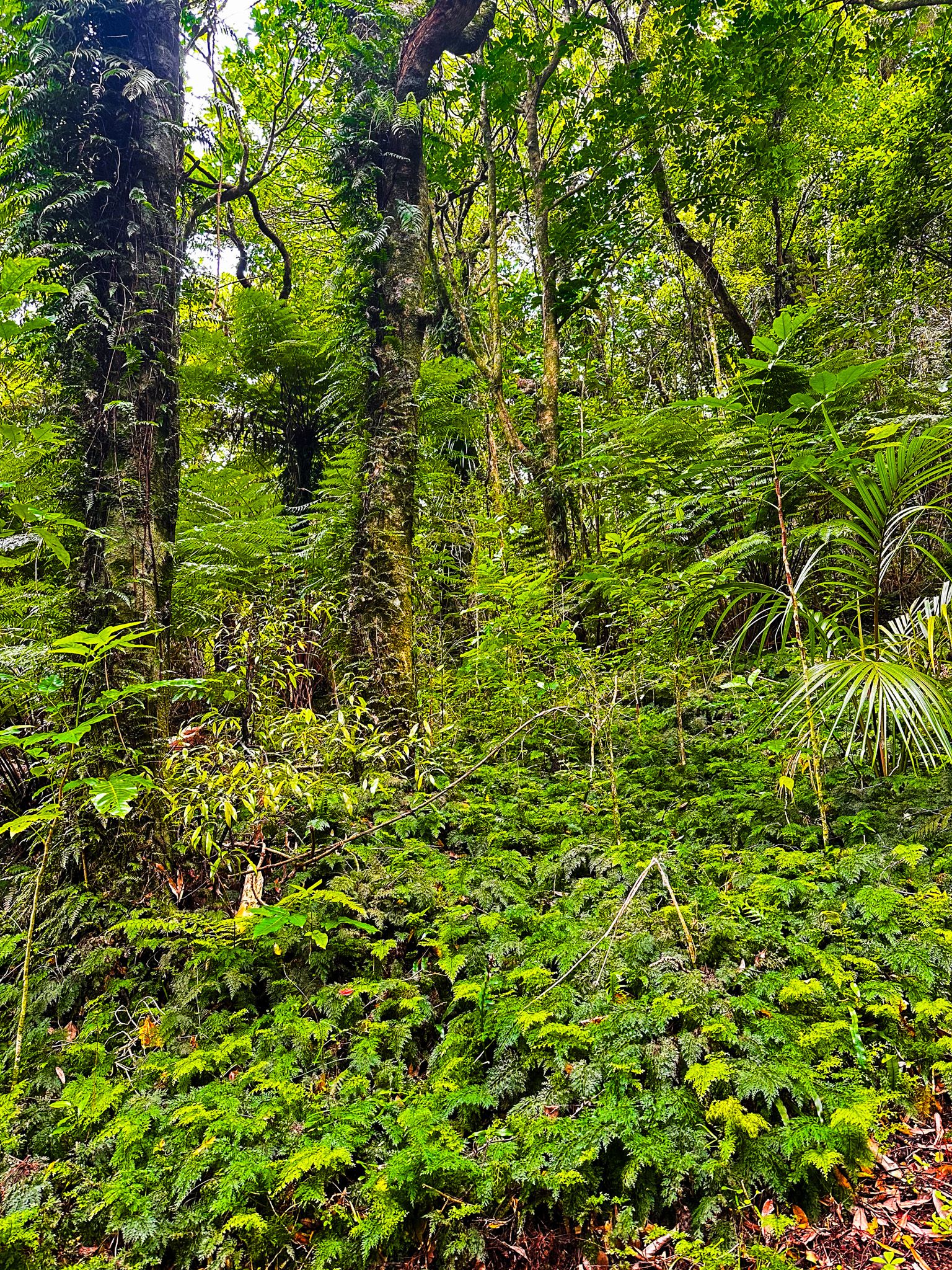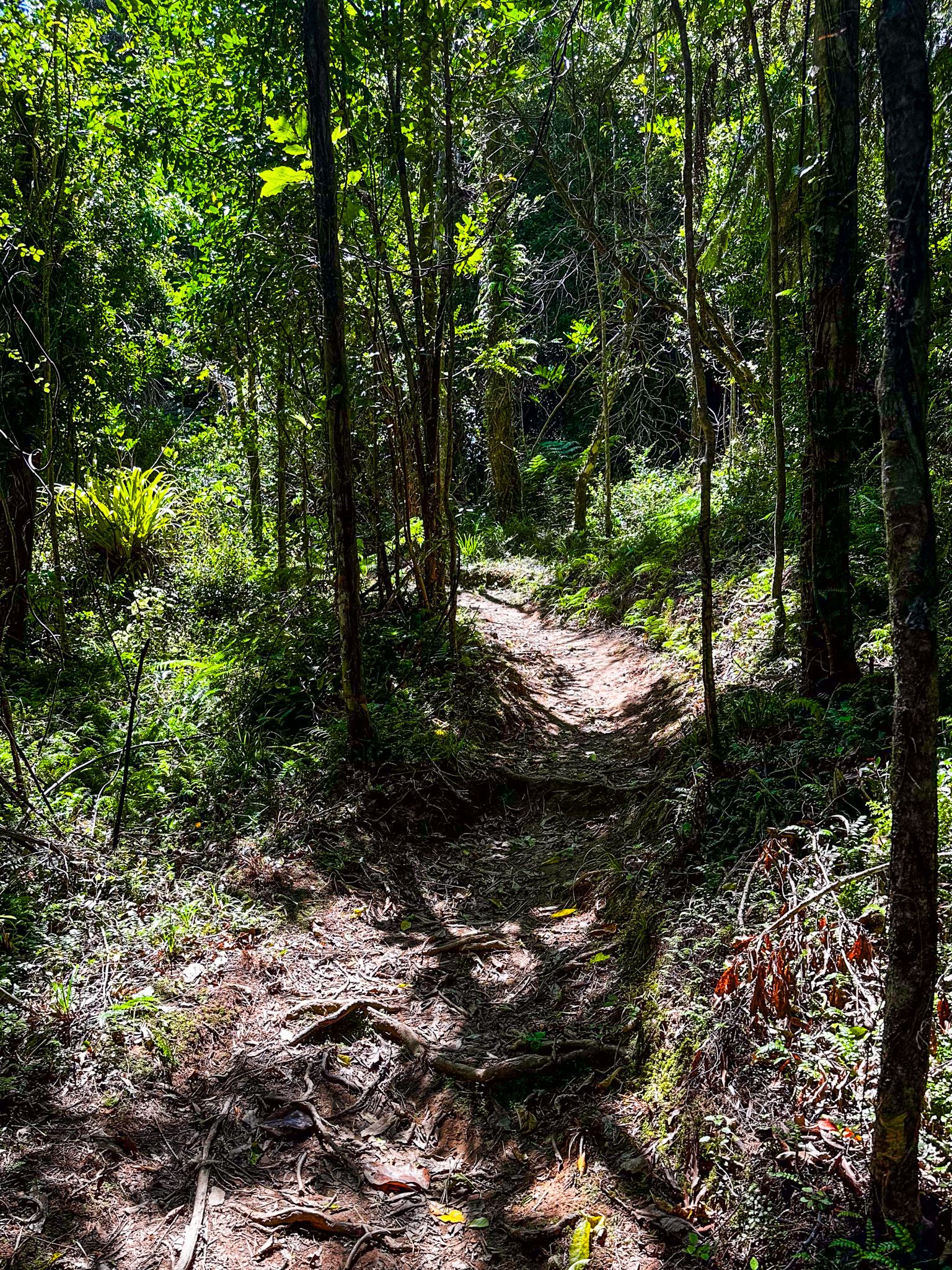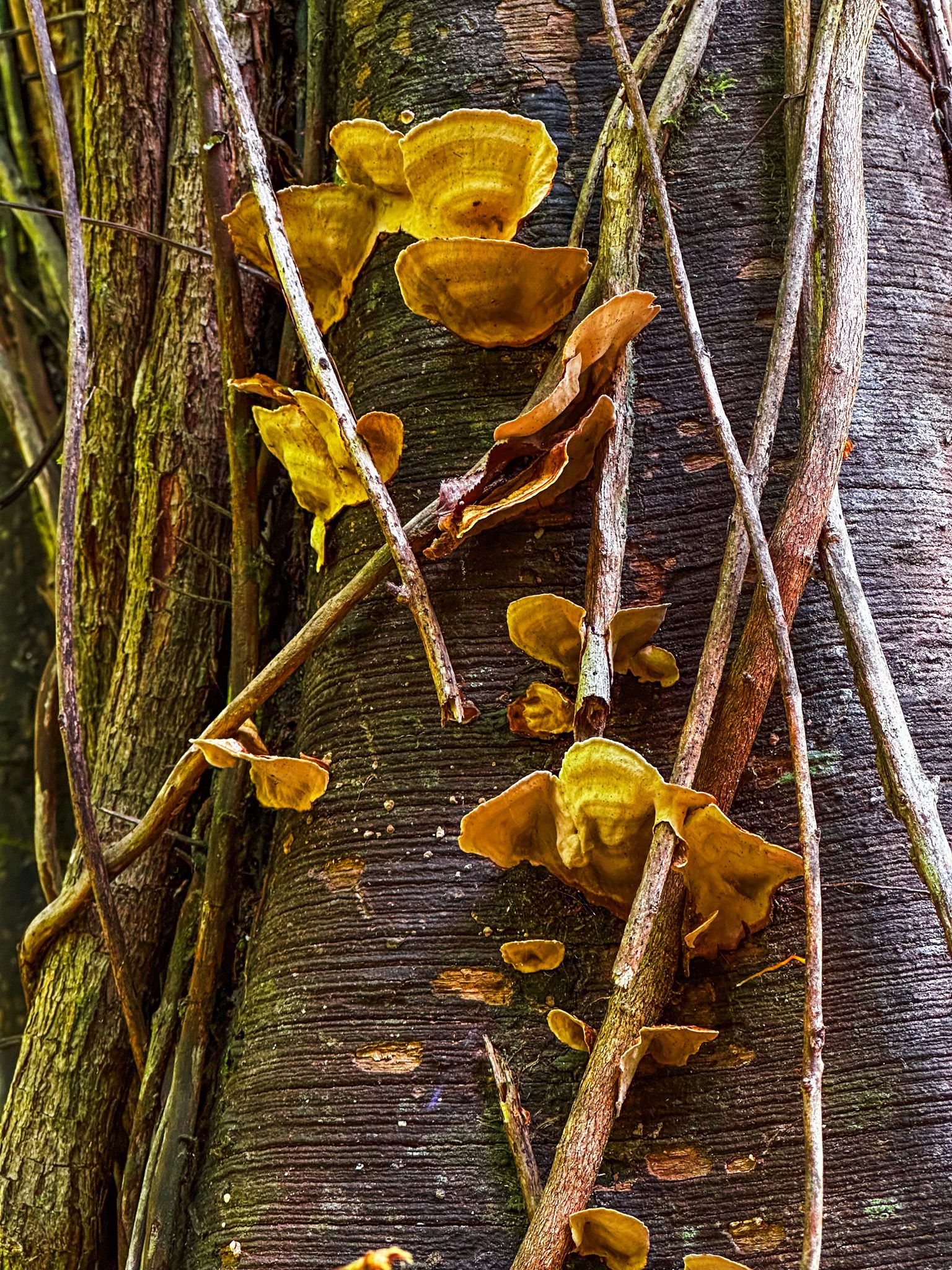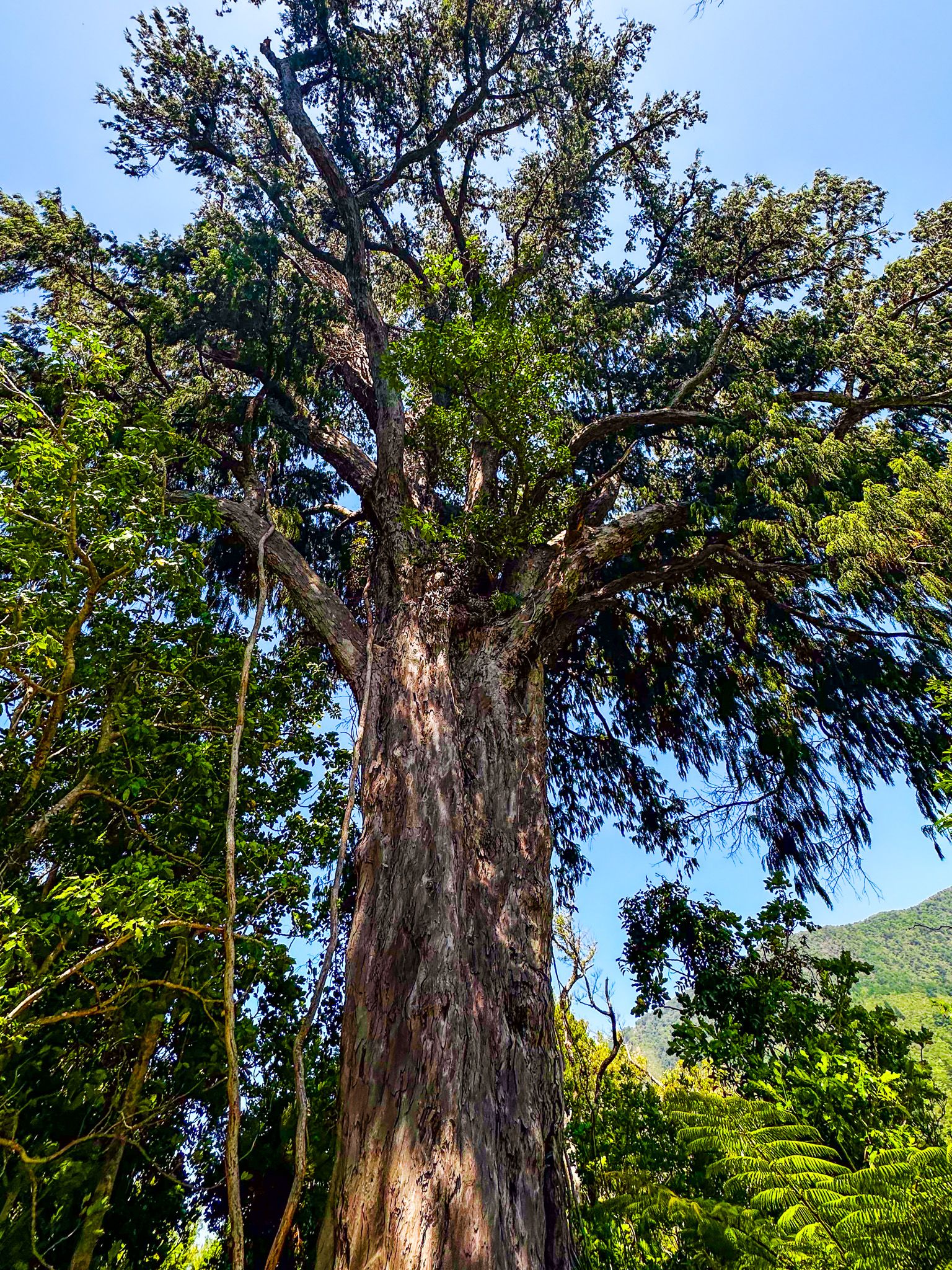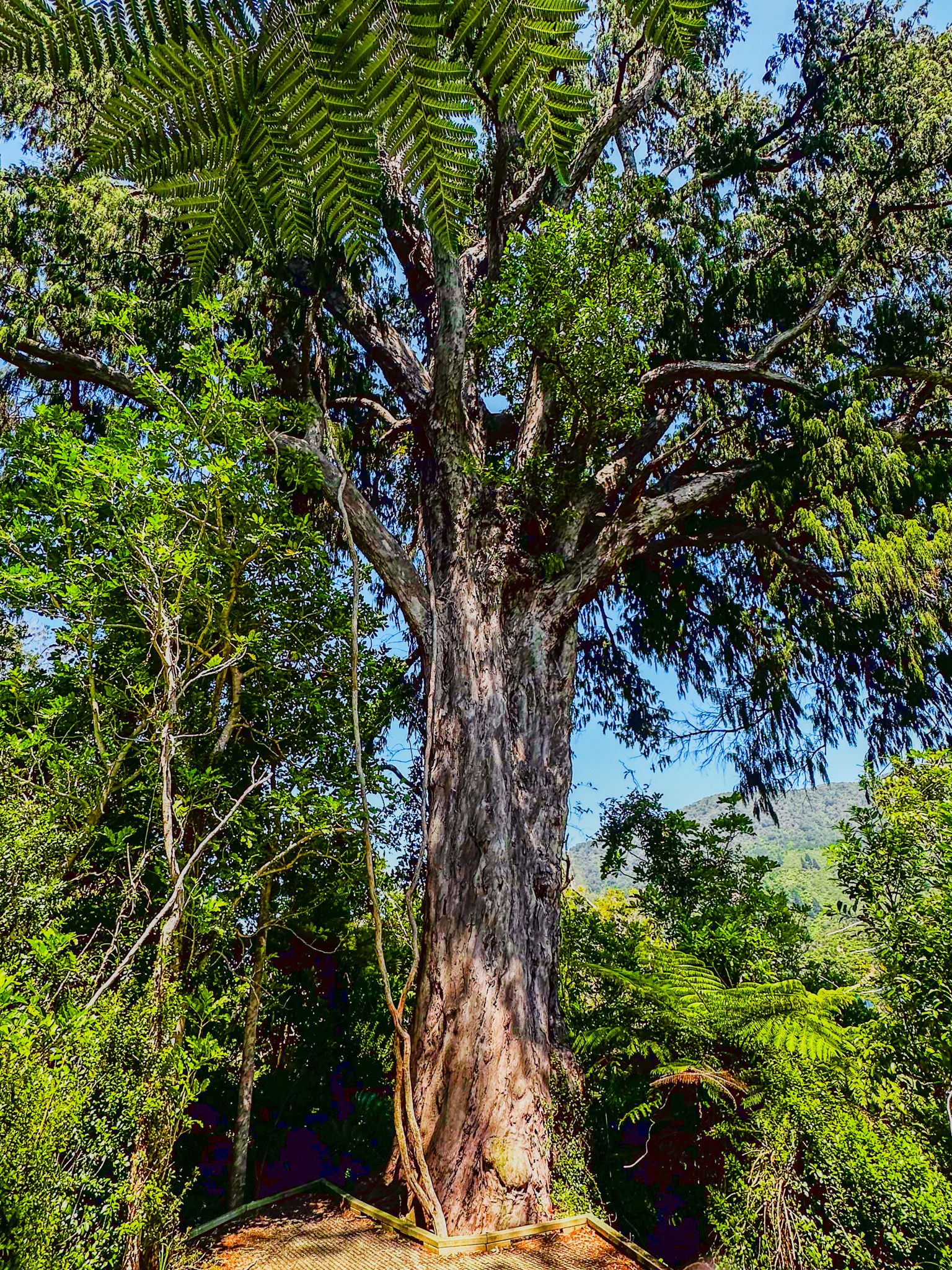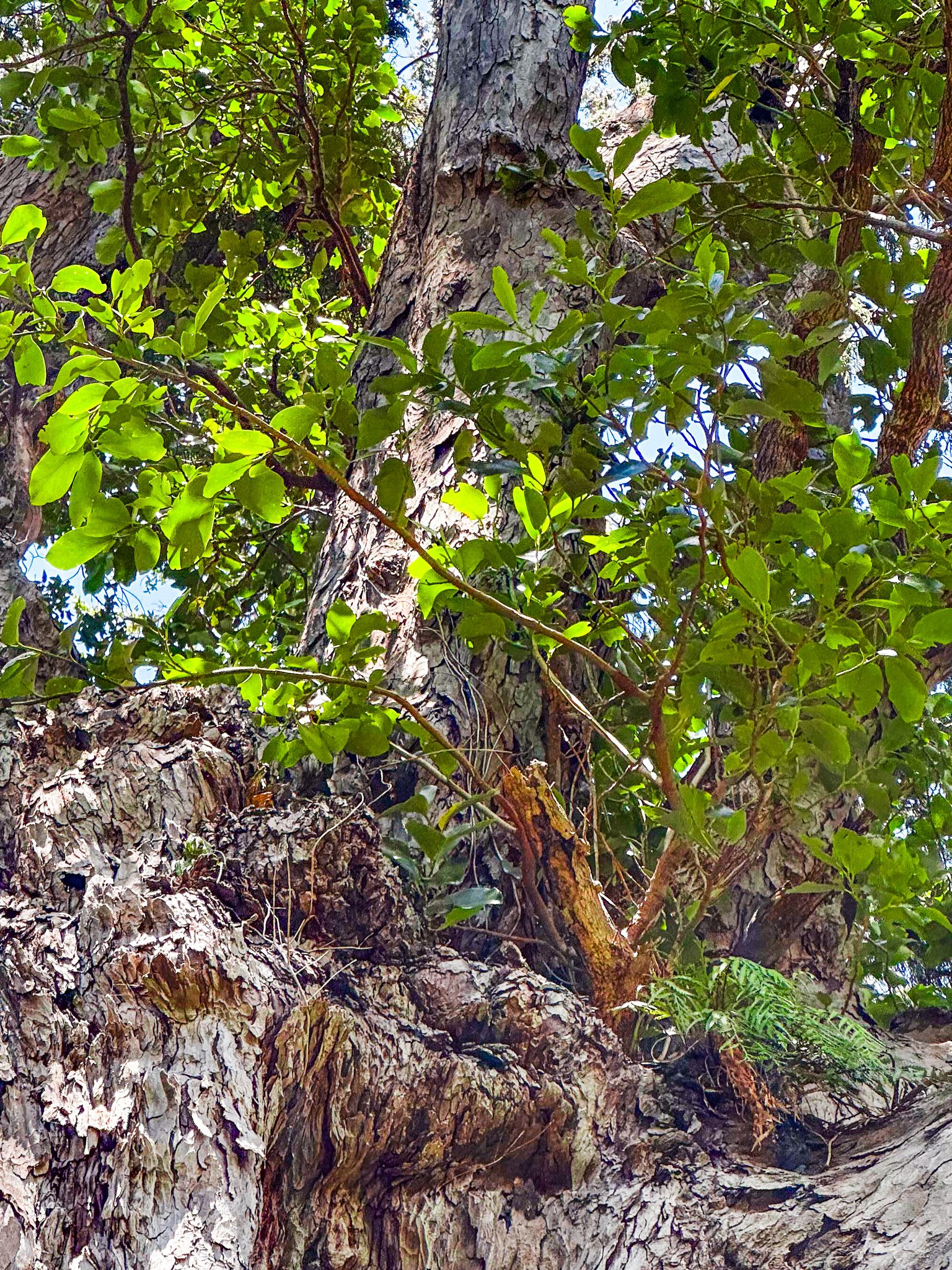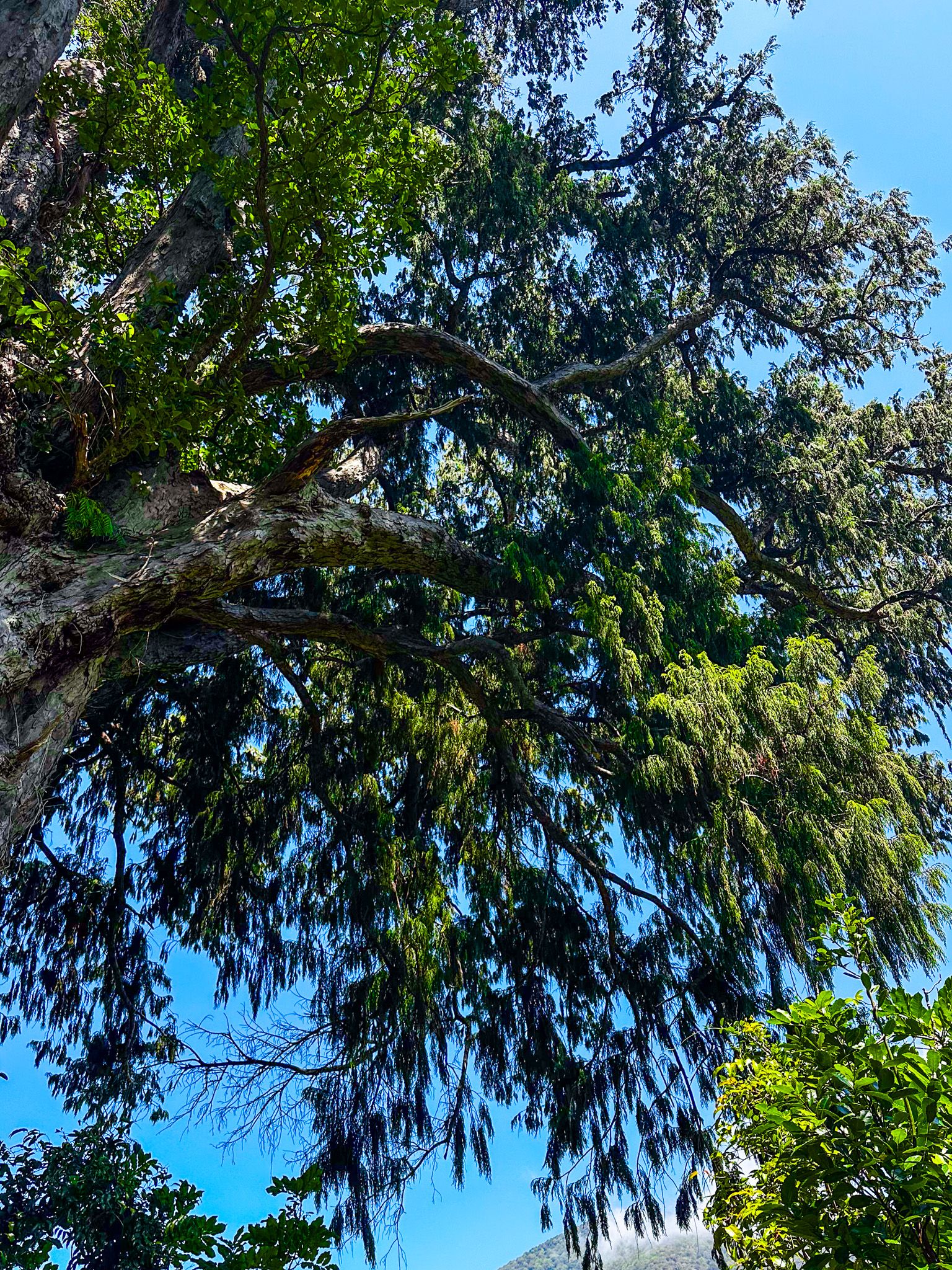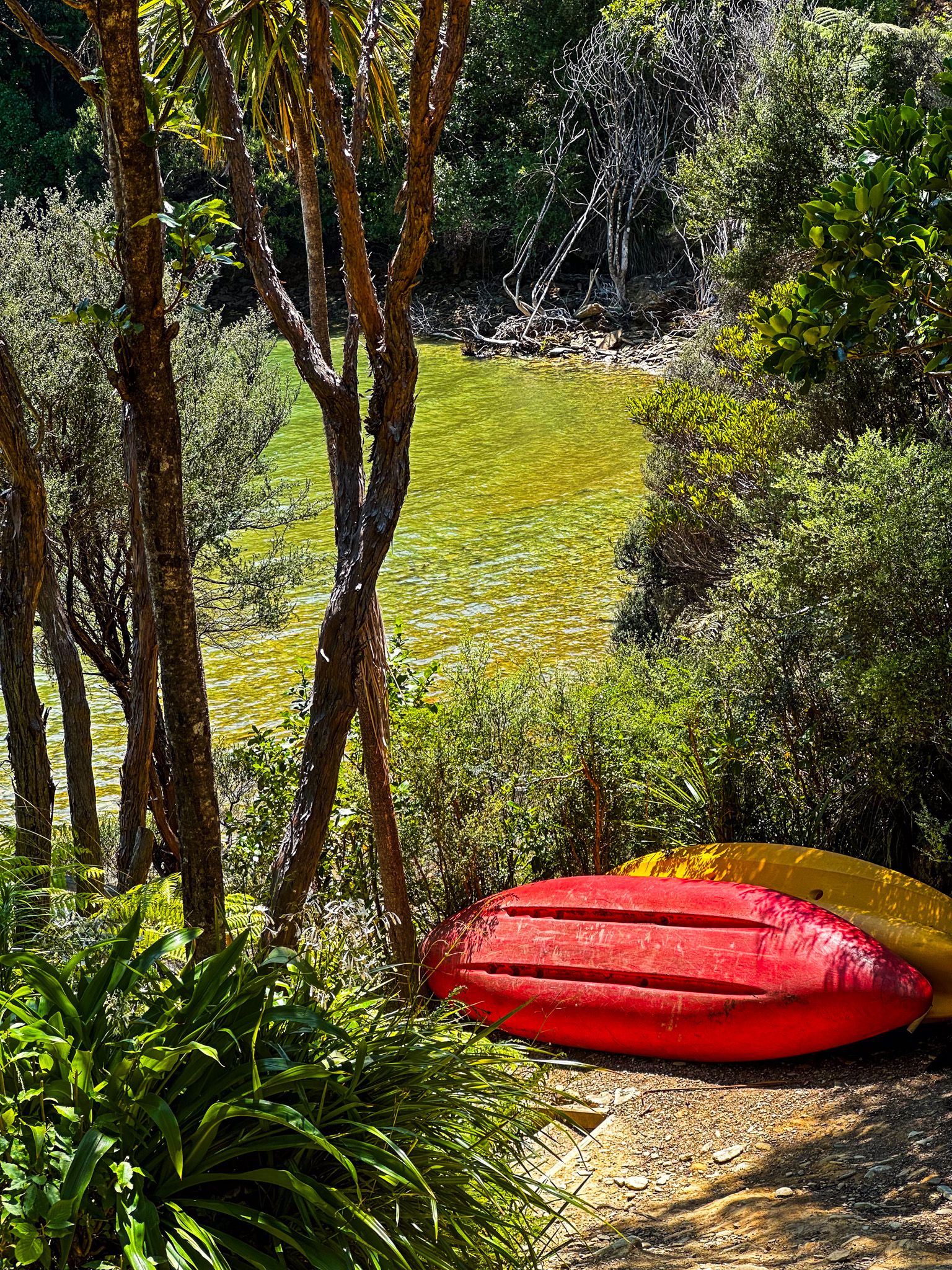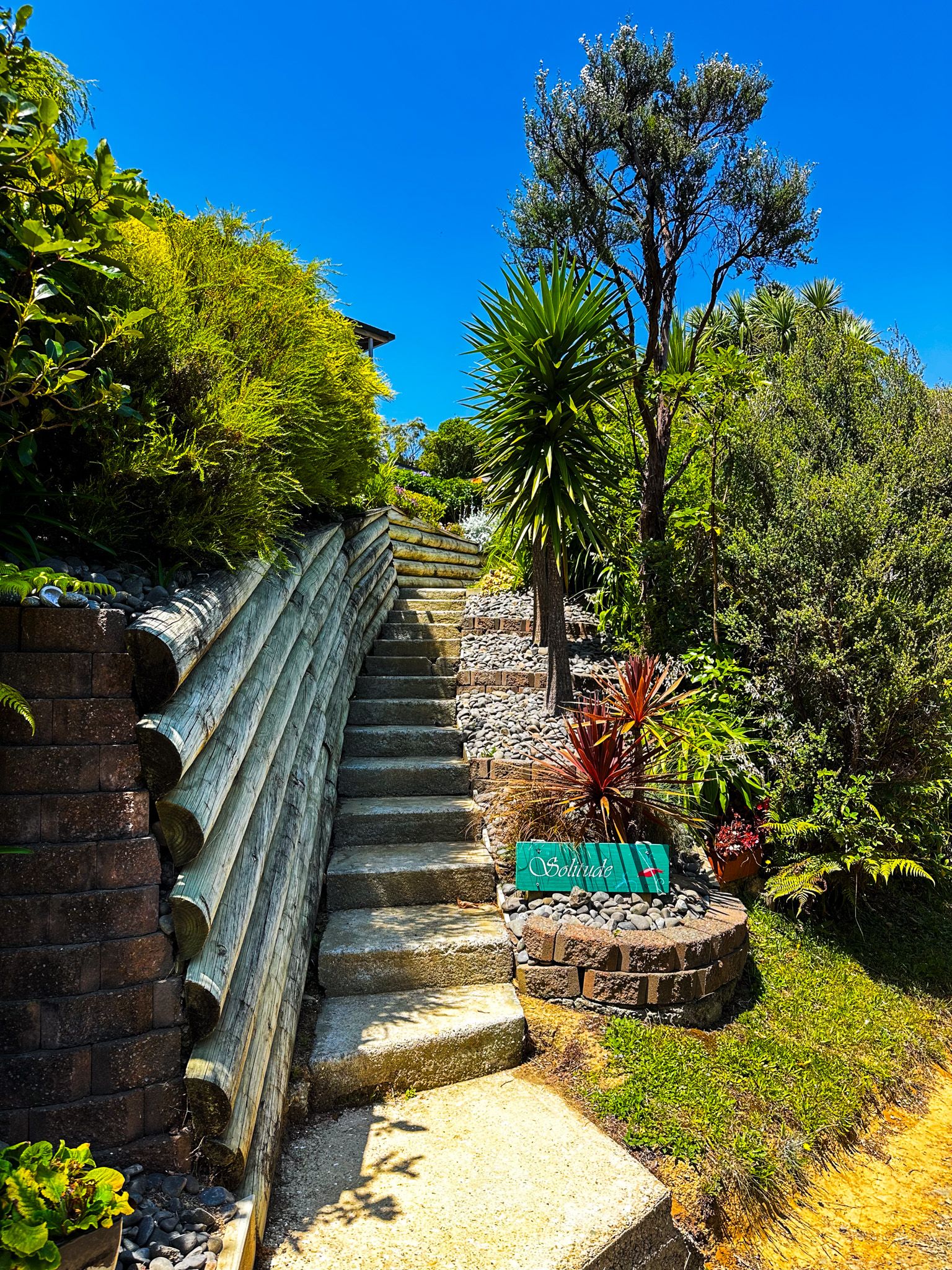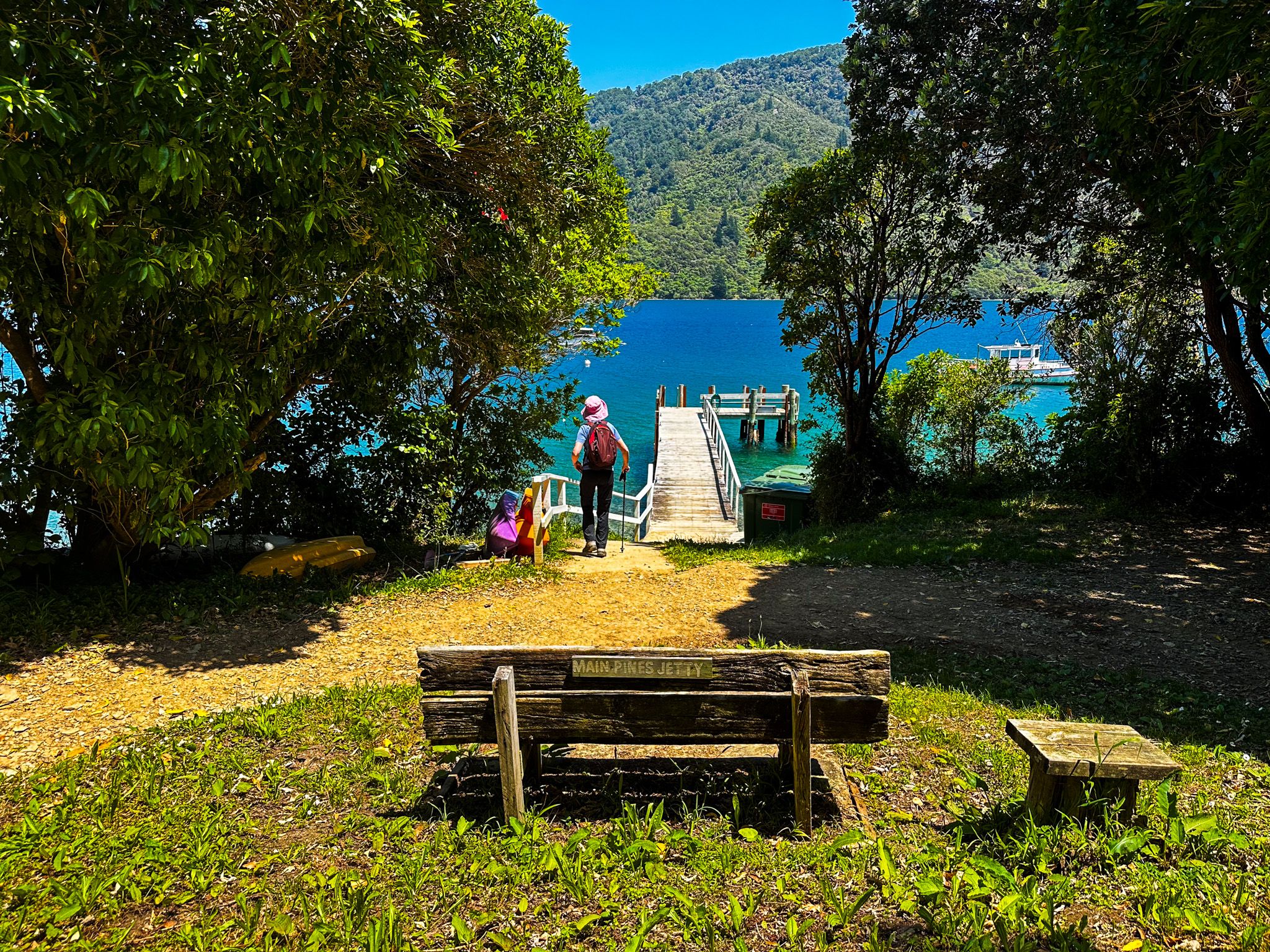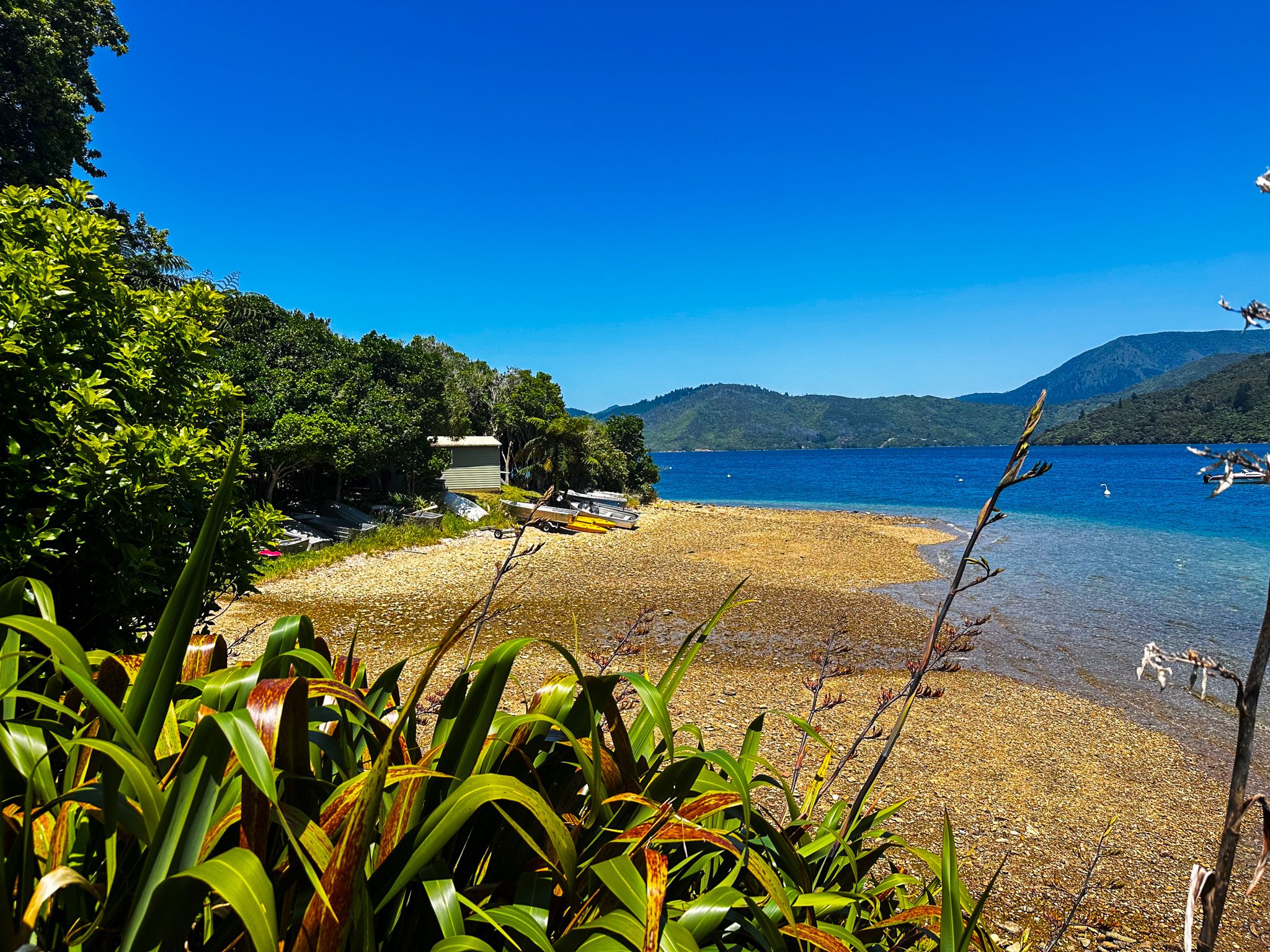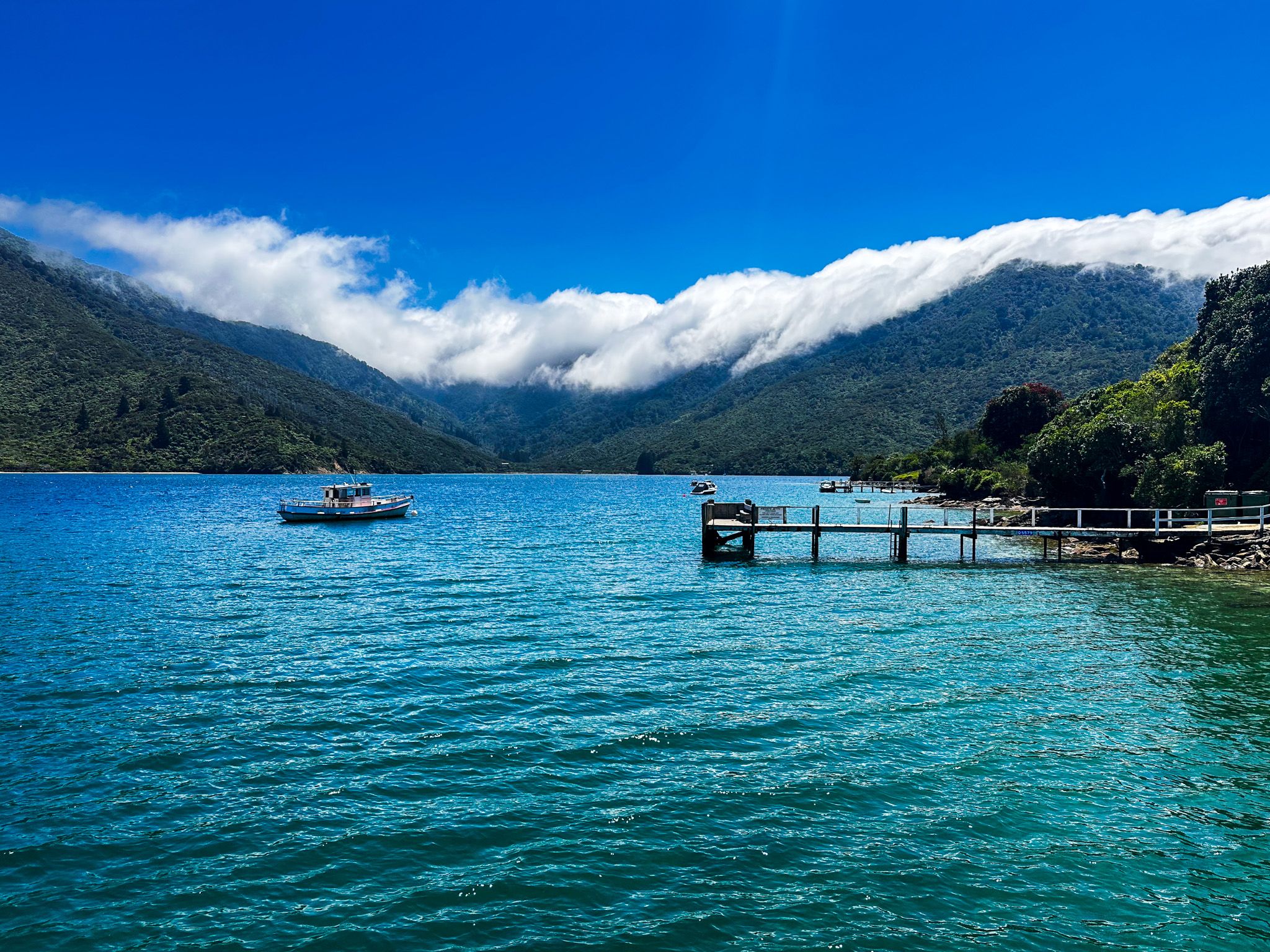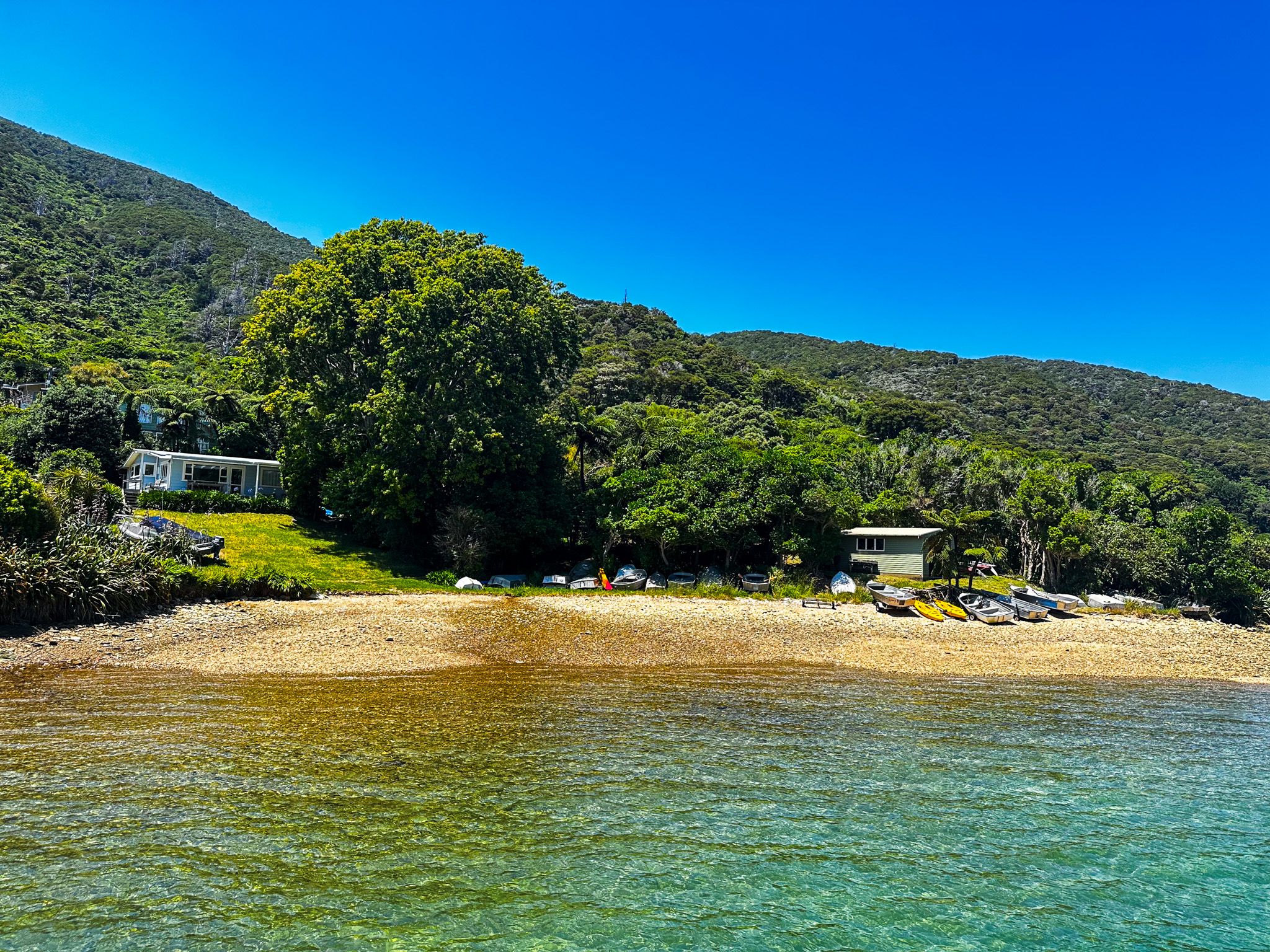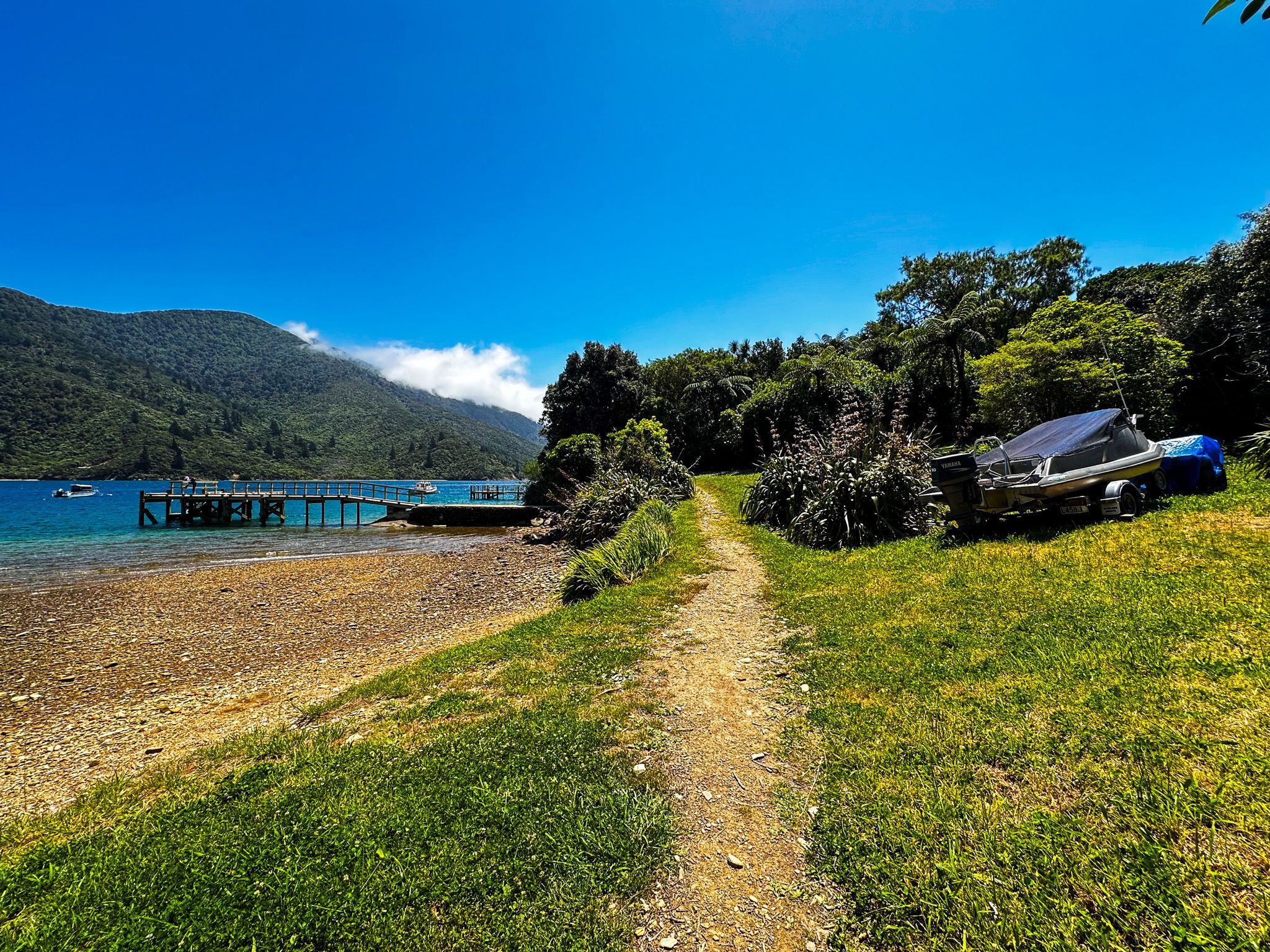The Marlborough Sounds offer a range of remote getaway opportunities. The land was initially uplifted from the ocean over 15 million years ago. Subsequent erosion has created the steep, rugged hills and valleys that are a feature of the region. The sounds appeared in the last 20,000 years when sea levels rose 90 metres at the end of the last ice age, drowning many valleys.
There are various options for exploring the sounds, and we will cover these in several blogs. We started with a boat trip up Queen Charlotte Sound to Furneaux Lodge in Endeavour Inlet. From there, doing a few day walks on the Queen Charlotte Track is easy. This track is also the start of Te Araroa in the South Island.
There are a range of lodge-style accommodations for a multiday trip, but camping is limited to a DOC campground at Camp Bay, next to Punga Cove. This is a 9-hour walk from the start of the track at Ship Cove. Furneaux Lodge and other accommodations around The Pines have the advantage of being more central to a trip focussed on day walks.
Endeavour Inlet
Endeavour Inlet / Panaruawhiti is the largest of the many inlets, bays and coves within Queen Charlotte Sound. The inlet is at the northeast end of the sound, on the north side and lies between the Bay of Many Coves / Miritū Bay and Resolution Bay. There are collections of holiday homes on the west side of the inlet, around Punga Cove, and on the east side between the northernmost tip of the inlet and The Pines. These are connected by a section of the Queen Charlotte Track, which largely follows the coast from Punga Cove to the southeast side of the inlet.
The inlet is a good option for a short stay, with boat access and day walks on the Queen Charlotte Track. Furneaux Lodge to the north of The Pines and Punga Lodge and Punga Cove are well established and have restaurants and various accommodation options. There is also a DOC campsite at Camp Bay, just north of Punga Lodge, plus other smaller lodge options around The Pines.
Captain James Cook first visited the inlet in 1770 and named it for his ship, the Endeavour. At the time, it was essentially an ancient forest with seasonal occupation by several iwi. As Europeans arrived, they cleared most of the forest and tried to plant grass. One look at the terrain suggests how crazy this was - it is primarily steep and slip-prone! Mount Furneaux on the east side of the inlet is 823 metres high, and Grants Lookout on the west side is 853 metres, linked by ridges of 600 to 700 metres. Today, almost all of the inlet is returning to native forest, with about 30 to 50 years of regrowth to date.
There is also a crazy mining story, with an extended attempt to mine antimony in the inlet (a metal with a wide range of uses). The mineral deposit was discovered in 1873, and the mine was high above the valley near the 700-metre ridge. It was connected to a smelter in the valley by a tramway, and today, you can walk the Antinomy Mine Track that connects with Titirangi Road on the ridge line. However, the mine was never profitable. It ended tragically in 1907 when the last mine manager, Jaketh Wearne, swallowed hydrochloric acid and died. But at its peak, there were 100 men in the small community at the top of the inlet. Follow the sign from the Queen Charlotte Track to explore what is left.
Punga Cove and Camp Bay
Punga Cove is a small, pretty cove In Endeavour Inlet in Queen Charlotte Sound. It is best known for the presence of the Punga Lodge and restaurant, which sits astride the Queen Charlotte Track. The most accessible access is by boat, which takes about 1 hour from Picton. However, there is road access from Kenepuru Sound on slow, windy Kenepuru Road to Titirangi Road at the northeast end of Kenepuru.
Camp Bay is about 300 metres west of the lodge along the coast on Queen Charlotte Track. There is a DOC campsite and one of the few accessible beaches on the west side of Endeavour Inlet. Continuing north on the track takes you to Furneaux Lodge. Heading through Punga Lodge takes you up to Titirangi Road, then to Kenepuru Saddle and the high ridge that runs most of the way down the north side of Queen Charlotte Sound towards the end of the track at Anikawa.
The forest around Punga Cove is extensive but all regrowth, with tree ferns and kanuka particularly prominent. These trees are typical of NZ native regrowth and will eventually be supplanted as larger trees grow. To the south of the cove are obvious examples of poisoned pinus radiata trees, part of an ongoing effort to give native forest recovery a helping hand.
Queen Charlotte Track, Punga Cove to Furneaux Lodge
As a leg of the Queen Charlotte Track, this walk is from the northeast end of Endeavour Inlet. But as a day walk, you can do it in either direction with a pre-booked boat pick-up to return to accommodation at Furneaux or Punga Lodges, as required. We walked from Punga Cove to Funeaux Lodge.
The track undulates gently but is quite stoney. It follows the shoreline almost all the way. However, it is often 20 to 60 metres above the coast with no accessible beaches except at Camp Bay at the northern tip of the inlet. But there are spectacular views. Most of the walk is through native forest regrowth, except around the scenic reserve behind Furneaux Lodge. Fox gloves provide some extra colour through much of the walk. Native birds, especially weka, are quite prominent, but the presence of kapokapowai (native giant dragonfly) is a particular delight.
There are several particular points of interest on the track. Big Bay has a large surviving meadow-like area around the stream at the head of the bay, an option for a picnic. Heading further around Big Bay, there is a fantastic viewpoint with a table beneath ancient beech trees — option two for a picnic. Continuing on from Big Bay, you will see Furneaux Lodge and The Pines. Watch out for the unusual multi-trunked tree fern at the end of a gated track easement. As you round the most northerly point of the inlet, there is an enormous slip. This goes back to the intense storms in the region in July 2022.
It is 11.5 km from the tip of the inlet to Punga Cove. Add another 1.5 km from Furneaux Lodge, or 2.5 km from The Pines and 3 to 4 hours for the walk. Note that there is a signposted shortcut to Kenepuru Saddle if you want to avoid Camp Bay and Punga Cove.
Furneaux Lodge
Furneaux Lodge has a relatively unique place in NZ history. The original 1,000-acre property on the northeast side of Endeavour Inlet, below 823 metre Mount Furneaux, was acquired in 1903 by Patrick Howden. He was the owner of The Wellington Biscuit and Confectionery Company. At the time, the property was clad in mature ancient forest. A holiday home and the waterfront were developed, but the forest was untouched. After Howden died, his son, Harry, took over the property.
Harry was a naval captain/war hero and, like his father, a strong conservationist. He placed the land in a private scenic reserve In 1937, then bequeathed it to NZ in 1961 as the Howden Bush Scenic Reserve. In the 1970s, the private house formed the basis for the development of Furneaux Lodge. The lodge sits on the Queen Charlotte Track, about a six-hour hike from the start at Ship Cove and then a four-hour hike to Camp Bay and Punga Cove. It’s a remote location, really only accessible by boat, and the ecological backdrop makes for a special place in the broader sounds, as well as a feature of the track.
Even if you are not staying at the lodge, you can visit the restaurant for a drink or meal. A wide grassed area between the restaurant and the foreshore has several beautiful trees. Thai includes an unusual yellow-flowered pohutukawa. The beach at low tide is mostly orange to yellow stones as the tide goes out, but there are better options for swimming. Watch out for curious weka, pukekeo and paradise ducks (pūtangitangi).
Howden Bush Scenic Reserve
The Howden Bush Scenic Reserve is a large area of ancient forest in Endeavour Inlet that was bequeathed to NZ by Captain Harry Howden in 1961. It is behind Furneaux Lodge, extends along the Queen Charlotte Track towards The Pines and runs up the side of 823 metre Mount Furneaux. It is the only substantial area of ancient forest within the inlet.
Walking the Queen Charlotte Track through the reserve is quite a different experience from the rest of the track within Endeavour Inlet. The trees are hundreds of years old, with several tall kahikatea and beech trees especially prominent near the track. A few minutes walk south of the lodge takes you to a short path to the Puhikereru Rimu, over 1,000 years old.
Puhikereru Rimu
The Puhikereru Rimu is a stunning ancient 1,000-year-old rimu tree, making it one of the oldest known rimu in NZ. It is a short deviation off the Queen Charlotte Track within the Howden Bush Scenic Reserve, between Furneaux Lodge and The Pines. The tree is surrounded by a platform to protect its roots, and several large vines hang from the canopy.
It is not that tall for an ancient rimu, at about 30 metres compared to a more typical 40 to 60 metres at the 700 to 1,000-year mark. But it is broad with a diameter of 2 metres and an overall canopy span of 25 metres.
The Pines
The Pines in Endeavour Inlet is a relatively built-up area of holiday homes on the Queen Charlotte Track, including some available for rent and jetties. There is also a handful of accommodation lodges. It is south of Furneaux Lodge and the Howden Bush Scenic Reserve and is relatively open, with the track crossing a grassed easement. Many of the homes have attractive gardens. There are also several accessible small beaches. Notably, there were not that many pine trees!
Two beautiful beaches are just beyond the houses heading south on the track. These beaches have a mix of golden-coloured pebbles, rocks and sand, surrounded by native trees. They are very safe for swimming and are the best option if you need to cool off after the 6-hour hike into the inlet from Ship Cove or just want to swim.
Continuing past the beaches takes you to a high point at the end of the east side of the inlet. There is a picnic table, but unfortunately, the view is limited. There is a spectacular slip earlier on the track with a scary sign, but it does provide an excellent view.
Alternative walking options include booking a boat to Resolution Bay or Ship Cove from Furneaux Lodge and then walking back. Or you can walk in and boat back. Allow 3 hours of walking one way for Resolution Bay and up to 6 hours for Ship Cove. Another option is to have the boat drop you off from Picton and then do the walk to the lodge.
